Posted by Powee Celdran
“Theophano does a great job showing us the unknown side of history in such a fascinating and contemporary way that we can relate to centuries later. It has such an amazing balance of Byzantine easter eggs and stories mixed with modern pop culture elements and truly has the potential to introduce the world of Byzantium into today’s pop culture.” -Powee Celdran, Byzantine history fan and creator of The Byzantium Blogger
WARNING: THIS IS A VERY LONG ATICLE AND MAY CONTAIN SPOILERS!!
If you don’t want any spoilers, please order the book online in Amazon and Comixology.
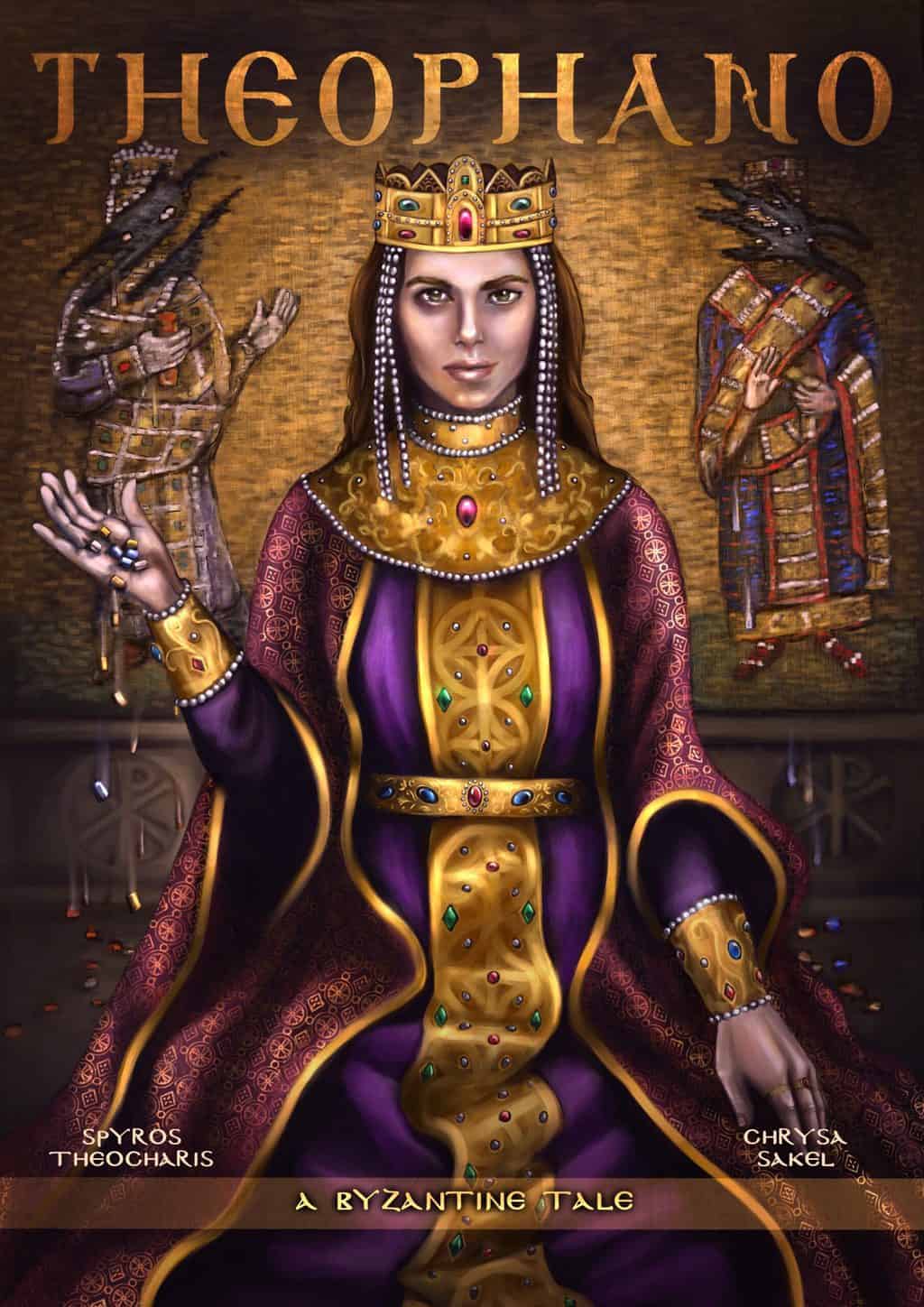
Welcome to the Byzantium Blogger’s first post for 2021! Hello everyone, I am Powee Celdran better known as the “Byzantium Blogger” and I would like to start off my new Byzantine adventure for this year 2021 with a very special article featuring the recently published graphic novel with a Byzantine era setting Theophano: A Byzantine Tale (2020), a Byzantine fan fiction based on real historical events. For almost 2 years now, my life has been all about this history of the Byzantine Empire that I have been making articles on this site non-stop and Lego films with a Byzantine setting on my channel No Budget Films since then but sadly the story of the Byzantine Empire or Eastern Roman Empire is not very much talked about and neither is it brought into the world of pop culture the way the history of Ancient Greece, Rome, and Medieval Europe is. However last year (2020), when hearing out of the blue that a new graphic novel with a Byzantine era setting has been published, my heart literally jumped out of my chest finding out that Byzantine history sure enough does have a place in the world of pop culture. This graphic novel by the way written by Spyros Theocharis and illustrated by Chrysa Sakel is set in the 10th century golden age of the Byzantine Empire under the Macedonian Dynasty, an intriguing and exciting time in of resurgence in their imperial power as the military and cultural power of Eastern Europe and the Eastern Mediterranean but behind all this power and glory in this era was also a time of extreme imperial extravagance, a toxic imperial court run by scheming eunuchs, and powerful generals all eyeing the ultimate prize, the imperial throne. This graphic novel which is divided into 5 chapters tells the story of these complex times yet very fascinating up to this day in the perspective of Theophano, an actual historical figure of this time who was a young woman of humble origins that up marrying the imperial heir and later becoming the empress of the Byzantine Empire herself being the wife of 2 emperors as well as a mother of 2 emperors. Overall, this graphic novel does a truly great job showing us readers in the modern age what the lesser known lifestyle, politics, battles, and fashion was in the interesting time of the 10th century when the Byzantine Empire was at its height and I have to definitely say that I had the great honor of actually getting to interview the creators of this novel by messaging them through Instagram, more particularly with the novel’s illustrator Chrysa Sakel who I have asked a long series of questions to which have proven useful to guide my article/ graphic novel review. It was quite a challenge to actually get the chance of having a private Q&A with the graphic novel’s creators that in fact the whole process took 4 days! At the end it was all worth it as I got to know more about not just the behind-the-scenes of writing this novel but about the background of the story and its littlest details and why in particular Theophano was chosen as the subject of the story and I would like to thank Chrysa very much for giving some of her time to answer all the questions I have come up with when reading the novel in order for me to make this article possible. In addition, I am also going to do something very unique and special for this article which will be a fan casting for the graphic novel as when reading the novel, I had already envisioned a list of actors and actresses who in my opinion could nail playing the characters featured here. Now this article here will be overall how a Byzantine history fan reacts to this amazing new graphic novel. Before I even start, I have to mention that this novel will be featured today at the Edinburgh Byzantine book festival and fortunately I came right in time to complete this article on the book!
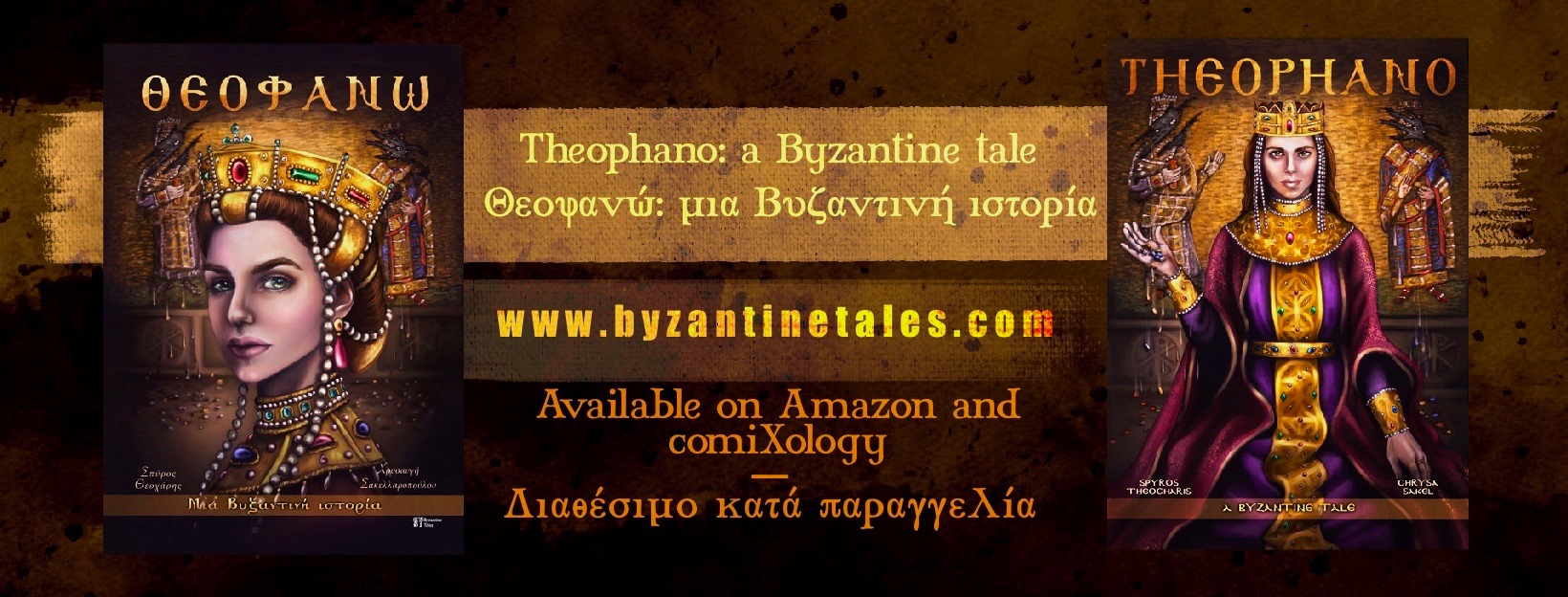

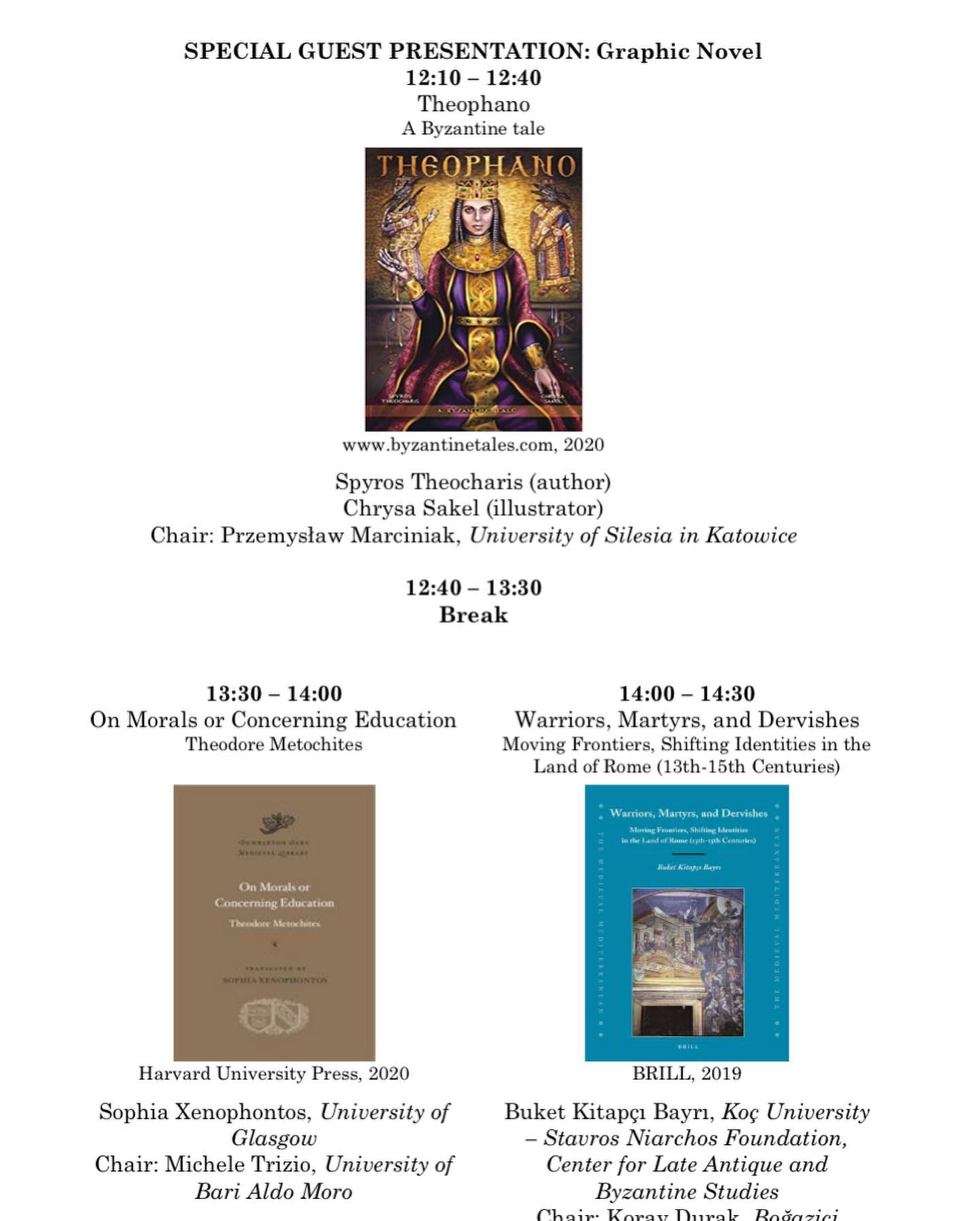
Check out their website byzantinetales.com to get more info on the graphic novel.
Facebook: Byzantine Tales
Instagram: byzantine_tales
Twitter: Theophano: A Byzantine tale
Youtube: Byzantine Tales
Follow the novel’s illustrator on Instagram: ChrysaSakel
Watch the trailer to the graphic novel here!
(Photo credits: Byzantine Tales FB page, Madrid Skylitzes, and artworks by Amelianvs and Ediacar)
Last year, it was when listening to the History of Byzantium podcasts by Robin Pierson and the podcast of Byzantium and Friends by the historian Anthony Kaldellis where I learned that this graphic novel existed so I decided to order it online wherein I received the book at the very start of this year so I kick started 2021 reading this 137 page graphic novel and 3 weeks later, I finished reading it in time to ask a number of questions to its creators through Instagram after I shared a story last January 25 that I have complete reading it. Luckily, when I received the book and posted it as my first post in my newly created Byzantium centered Instagram account Byzantine_Time_Traveller, the creators using the novel’s account followed my new account the moment I shared my post and tagged them. Reading this novel sure gave me a really fascinating impression of Byzantium in the 10th century, however I already knew what to expect since for one I am already very familiar with the whole history of Byzantium ever since I have been drawn to it in early 2019 and second I am already familiar with the story of Theophano and 10th century Byzantium and what it is known for as before reading this novel I have a read number of Byzantine history books as well and the best so far- aside from this graphic novel of course- that totally gave me a perfect glimpse of the life of the Byzantine Empire was Anthony Kaldellis’ Cabinet of Byzantine Curiosities and The History of the Byzantine Empire by Radi Dikici in which second one mentioned tells the story of Byzantium through the lives of all its emperors from beginning to end (330-1453). Now I would say this graphic novel would be a good start off for readers who are not very familiar with the history of Byzantium and I would highly recommend it to my friends and cousins who don’t really understand why I am so into Byzantium, and hopefully this novel will show them just why. Basically, why this graphic novel can hopefully make Byzantium relatable to modern people is because this novel tells its story in such a contemporary way through the same kind of modern language we use for its dialogue and very well made drawings that can make us imagine these historical Byzantine figures as real people and no longer as faded stick figures as they have been depicted in their time through manuscripts like the Madrid Skylitzes and Menologion of Basil II.

Please check out my online sites too!
Instagram: Byzantine_Time_Traveller
Facebook: Byzantine Time Traveller
Youtube: No Budget Films
On the other hand, as I have mentioned earlier I have been doing Lego fan fiction films using the subtitle of “Byzantine Epic” since 2019 and surprisingly the first one I did with a Byzantine setting was set in the same era of this novel with the emperor Nikephoros II Phokas as its main character who happens to be a major character in this novel. This Lego Byzantine epic I did set in the 10th century was The Rise of Phokas (2019) in which Theophano too had a quick appearance as a Lego character, then this was followed by its short sequel Killing a Byzantine Emperor (2019) focusing plainly on the assassination of Nikephoros II, which (spoiler alert!) also appears at the end of this novel. The surprising part happens to be that the creators started creating this novel in the last quarter of 2019 and finished in the summer of 2020 and ironically enough it was in the last quarter of 2019 that I made my full feature 13th century Byzantine era epic Summer of 1261 while its sequel War of the Sicilian Vespers was released in the summer of 2020. Now when it comes to bringing the hidden history of Byzantium into the world of pop culture, I should say first that even I intend to do that which is why I make Byzantine Lego films that are relatable to today’s viewers and other than myself there is someone I have always been mentioning in my past articles which is my favorite Youtube channel Dovahhatty who has reached great levels of success through his animated 19 episode series the Unbiased History of Rome in which now began its second season with its first episode on Byzantium but between my channel and Dovahhatty, this graphic novel Theophano: A Byzantine Tale is what I should say is the one that pretty much nailed it in making Byzantium something worthy of modern pop culture the same way many medieval fantasy series and films like The Lord of the Rings and Game of Thrones does and if you continue reading this, you will know why. Basically, this novel is written in the form a failed fairytale by doing what a Disney fairytale movie does in centering on a young female lead character which in this case is Theophano and why in particular Theophano was chosen according to the creators in my Q&A was because they did not want a really famous character in Byzantine history like Emperor Justinian I of the 6th century or Basil II of the 10th century but someone who’s story is mostly unclear and Empress Theophano was certainly the perfect choice for it as her story could be altered but at the same time she was chosen as the main character because her story was very interesting as she acted as a link between the famous characters of this era including Emperors Constantine VII, Romanos II, Nikephoros II Phokas, and John I Tzimiskes as the main part of the novel covers a span of a complete 20 years in her life (956-976). On the other hand, this novel was also done to show a more human side to the character of Theophano as history usually remembers her as an evil empress that killed 3 emperors which were her father-in-law and 2 husbands out of her own evil ambitions and I have to admit I thought the same way too before but when reading this novel, it made me see a different side to her which was that she was sure enough ambitious but necessarily evil as history shows her as when reading this, I came to realize that Theophano sure enough was doing all these evil things just to protect herself and her children’s succession as basically the world around her was evil with plots left and right. Now before I move on to the rest of my article, I also want to congratulate the creators of this graphic novel as after 6 months of being published it has been quite successful so far that it now has a Greek version coming up and a good number of online reviews and features including this article right here!
Other Reviews and Articles on Theophano: A Byzantine Tale:
From Medievalist.net
From Fan Base Press
From Greek City Times
From Eileen Stephenson
Related Articles from my site The Byzantium Blogger:
My Personal Byzantine Journey (2019-2020)
War of the Sicilian Vespers: A Lego Byzantine Epic
Imperial Women in the Roman and Byzantine Empires
Constantinople: The Queen of Cities and its Byzantine Secrets
The Complete Genealogy of Byzantine Emperors
7 Reasons to be Interested in Byzantium
Reasons Why You Should Buy and Read Theophano: A Byzantine Tale
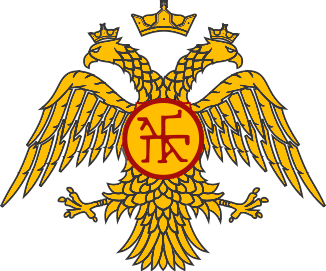
Many still think that Roman civilization ended in 476 when the Western Roman Empire based in Ravenna was taken over by a barbarian mercenary named Odoacer who deposed the last emperor Romulus Augustus and became King of Italy leaving the rest of Europe to fall into the Dark Ages ruled by barbarian kingdoms. The truth is that in 395, the Roman Empire was split between east and west permanently and when the west fell in 476, the east survived as what we know as the Byzantine Empire which lived throughout the entire middle ages still using the name of the “Roman Empire”. This novel thus shows us that in the 10th century when the rest of Europe (England, France, Germany) went through hard times of constant wars and broken kingdoms, there was one side of the world where things remained as culturally and intellectually advanced as Ancient Rome which was the Byzantine Empire having a very cosmopolitan and technologically advanced capital which was Constantinople (today’s Istanbul) known as “The Queen of Cities”. However, despite Byzantium being a lot more advanced than Western Europe, it was still very far from perfect as in the 10th century Byzantium despite rising above their enemies still fought chronic wars against their neighbors such as the Arab powers and the Bulgarian Empire and it’s imperial court was very unstable as it was filled with ambitious officials and generals all wanting the throne but no matter how unstable politics were, the empire at least had a stable system of government.
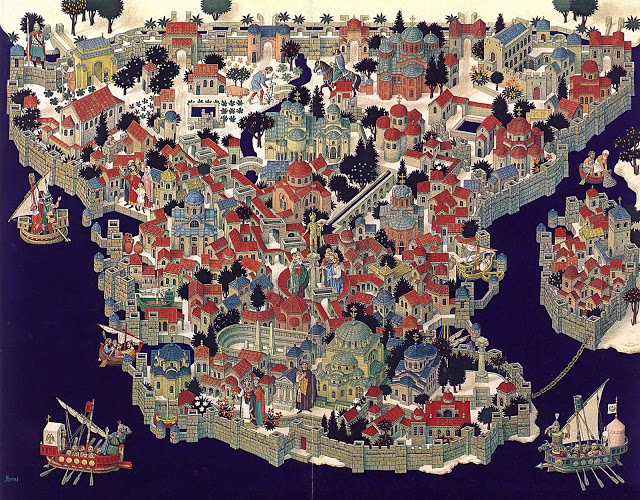
Theophano shows us what the word “byzantine” means in this current day meaning “complicated” is as it really shows it in detail how complicated the imperial court worked with scheming eunuchs and ambitious generals all in the quest for power, hence giving birth to the definition of this word. At the same time, it brings the word “byzantine” in a very realistic sense to a fairytale story especially since it is the kind of fairytale story that is not to have a happy climax and ending.
It has done a pretty great job in its illustrations which were created using the software Procreate for the illustrations and Photoshop for its finishing touches. Its illustrator Chrysa Sakel has surely done it with such color, life, and emotion and not only are characters drawn so impressively but backgrounds and scenes too from city life in Constantinople to famous landmarks depicted in its full glory and armies in massive battles. The art of this novel according to friends I have showed it to say it does not look as intricate as those in the Marvel and DC comics but in fairness, this novel was actually Chrysa’s first project as a comic illustrator as said in her profile at the end of the book, although it also says she has been doing traditional art since age 5 and this here is her first project using digital art. Other than that, in my Q&A with Chrysa, she said that its style was intended to look cartoonish because it is actually targeted for younger readers.
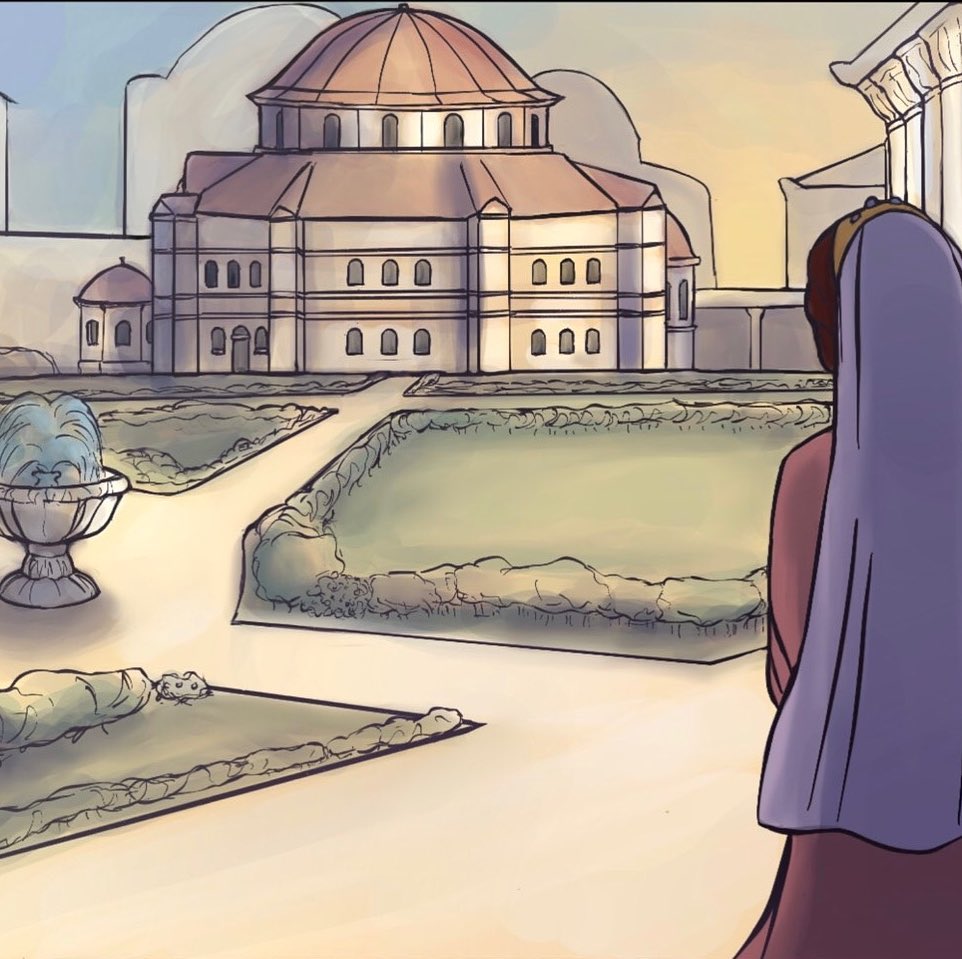
Nevertheless, all these illustrations true enough bring Byzantium to life as the History of Byzantium podcast host Robin Pierson and Professor Anthony Kaldellis have mentioned. Now in my opinion, I’d say the illustrations are able to capture the look and proportions of the landmarks a lot better than it does in showing some realism in the faces of the characters.
You will be invested in the characters despite the cartoonish style of drawing because their faces still show a lot of emotion and so do their dialogues show a lot of drama, and when reading you surely be invested in many characters such as Theophano, Romanos II, Nikephoros II, and John Tzimiskes. When reading it, the story gives you two different feelings, first from Theophano’s perspective, the story seems more like a fairtytale story while on the perspective of Nikephoros Phokas and John Tzimiskes it seems like an American Western style film which focuses on the frontier while here, I would say a Byzantine Western style film through the point of view of the army generals.
The novel’s illustrations and story were based on intense research done by its writer Spyros Theocharis who has based the novel on both Byzantine sources of the 10th century as well as Slavic sources like the Primary Chronicle by Nestor the chronicler and as I asked where the evidence of what costumes in the novel actually looked like, it turns out it was very well researched too and not just a wild guess of Byzantine fashion in its 1,100 years of existence, instead it was based on illustrated manuscripts from that era of Theophano more or less such as the well-known Madrid Skylitzes by the 11th century court official John Skylitzes which documents the history of Byzantium from 811 to 1057 through a series of illustrations and the Menologion of Emperor Basil II made in the year 1000, therefore making the costumes you see very accurate to that of the era.
It is a unique work putting Byzantium in pop culture as nowadays, there are many pop culture media set in the medieval world whether they are fictional but based on the real world like The Lord of the Rings, Game of Thrones, and The Witcher or historical series such as Vikings and The Last Kingdom but all are based or are set in Western Europe particularly England and France showing the medieval period as dark and gray with only stone castles and farmhouses whereas Byzantium is almost non-existent in medieval pop culture or films except for possibly Greek films and films all the way back in the 1950s when period films were the thing. Theophano gives a different outlook to the middle ages by showing a rich world where things were just as sophisticated and literate as it was in Classical Greece or Rome yet even more extravagant than it. However, LOTR does in fact have some inspiration from Byzantium and here no one really knows that J.R.R. Tolkien based the Kingdom of Gondor on the Byzantine Empire and its civilization which is why they use a communication system of beacons similar to Byzantium in the 10th century. In the world of video games however, it is only Assassin’s Creed Revelations (2011) that has a Byzantium angle but they only play a minor role in it while popular history for children series like Horrible Histories has no mention of Byzantium at all!
The 10th century setting of the novel surely makes it sellable because aside from the era of Justinian I in the 6th century, many who are familiar with Byzantium will know this era as well as it was their second golden age wherein they had grown to be Europe’s cultural and military power. On the other hand, this happens to be the best era of Byzantium to do a movie or comic on especially centering on Theophano since all the famous people of that time many are familiar with such as Emperors Constantine VII, Nikephoros II Phokas, and John I Tzimiskes all meet each other and at the same time, it was the time in Byzantine history wherein they had it all from scholarly works, to mechanical thrones, lavish feasts, Greek Fire, the professional Thematic armies including the famous Cataphract cavalry, and richly decorated churches. On the other hand, many would immediately think of Justinian I’s reign when hearing of Byzantium, however in that time they would still associate Byzantium with the Roman Empire of old whereas this 10th century setting of Theophano will show you the authentic medieval Greek Byzantine Empire known for its complex politics and imperial extravagance.
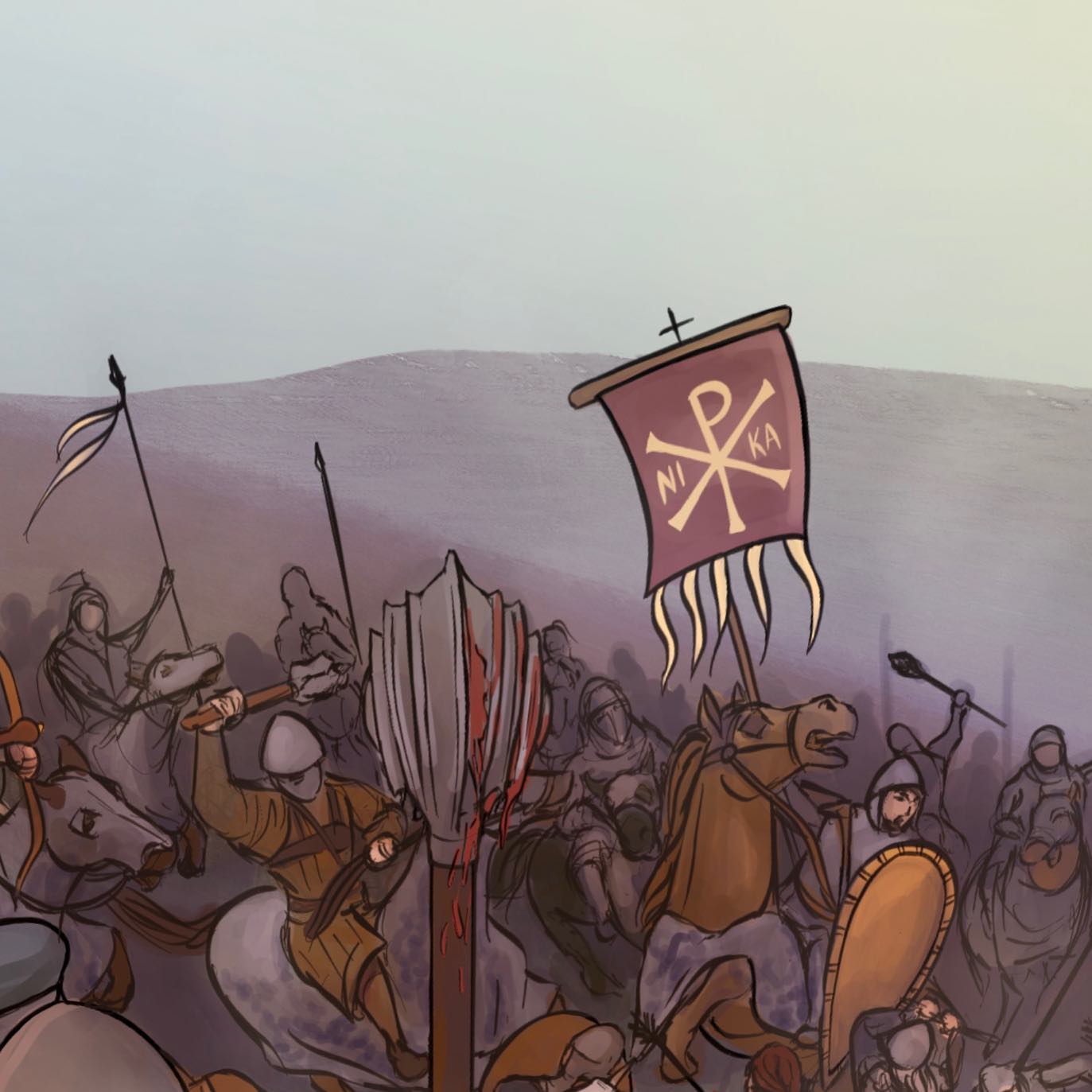
This novel can help familiarize people with Byzantium because it is written in such a way that the complicated life of Byzantium can be easily understood as instead of using such formal language many period films do, the dialogues the characters speak are spoken in the modern casual English we use today. Personally this is something I would love seeing in period films and in fact, in the Lego films I make for No Budget Films, I choose to make my voice actors speak in the modern English language they normally use in real life and not fake it by speaking in a formal old fashioned way so it seems both natural and relatable and I see that this novel tries to do just that.
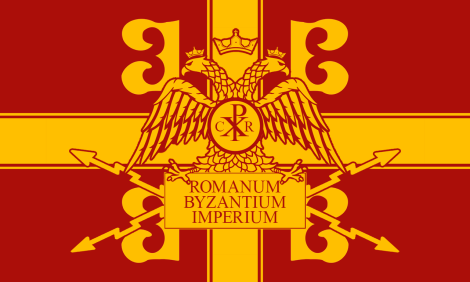
It also tries to be very authentic despite being relatable to the present day in its dialogue as it uses titles that barely anyone except Byzantinists know like Kouropalates and Spatharios to give the feeling that you are rreally in the medieval Byzantine world. Even though it is set in what we know as the Byzantine Empire, the word “byzantine” is not even used by the characters as the Byzantines in fact never called themselves that, instead they still referred to themselves as the “Romans” and the characters in this novel sure enough do that calling their empire still the “Empire of the Romans” or “Romania” or in Greek Basileia ton Rhomaion. The word “byzantine” referring to the empire was in fact only coined in the 16th century a century after the fall of Byzantium by westerners who did not see Byzantium as Rome’s imperial successor, thus the empire was stuck with that term. However, some of the characters here use their English names instead of Greek ones such as “John” instead of “Ioannes” for consistency reasons.
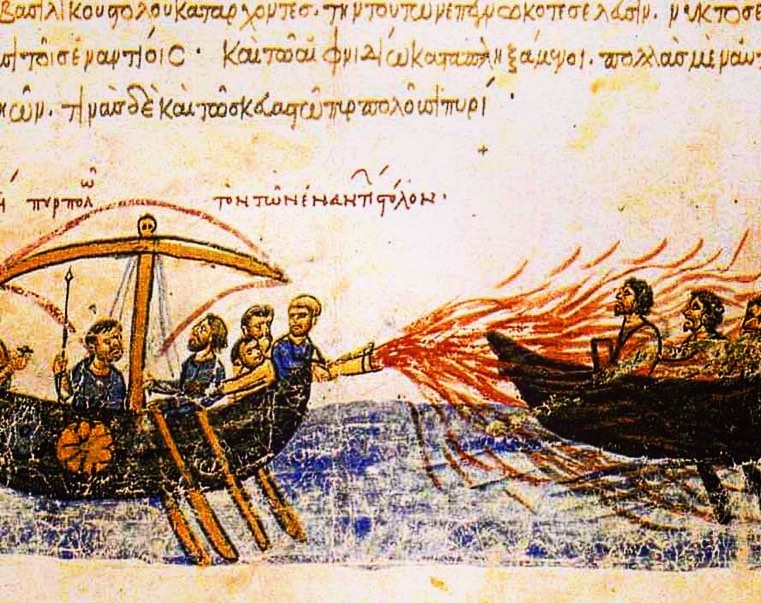
It shows a different side to Byzantium when many would think of Byzantium for being extremely religious which was mostly true but at least this novel does not go that deep into the religious debates and controversies the history of Byzantium was well known for as doing this could possibly turn off many readers making them think it would be too serious. Rather than focusing on all the endless religious debates that Byzantium made itself famous for, this novel instead focused on the other things Byzantium made itself famous for such as unimaginably impressive art and riches as well as the superior military tactics that proved itself successful in battles countless times including the Cataphract cavalry and Greek Fire.
You will see get to see in detail the most notable sites of Byzantine Constantinople including the world’s largest and most impressive cathedral back then which was the Hagia Sophia, the massive city walls of Constantinople, the Great Palace, Hippodrome, richly decorated mosaics, and a lot more.
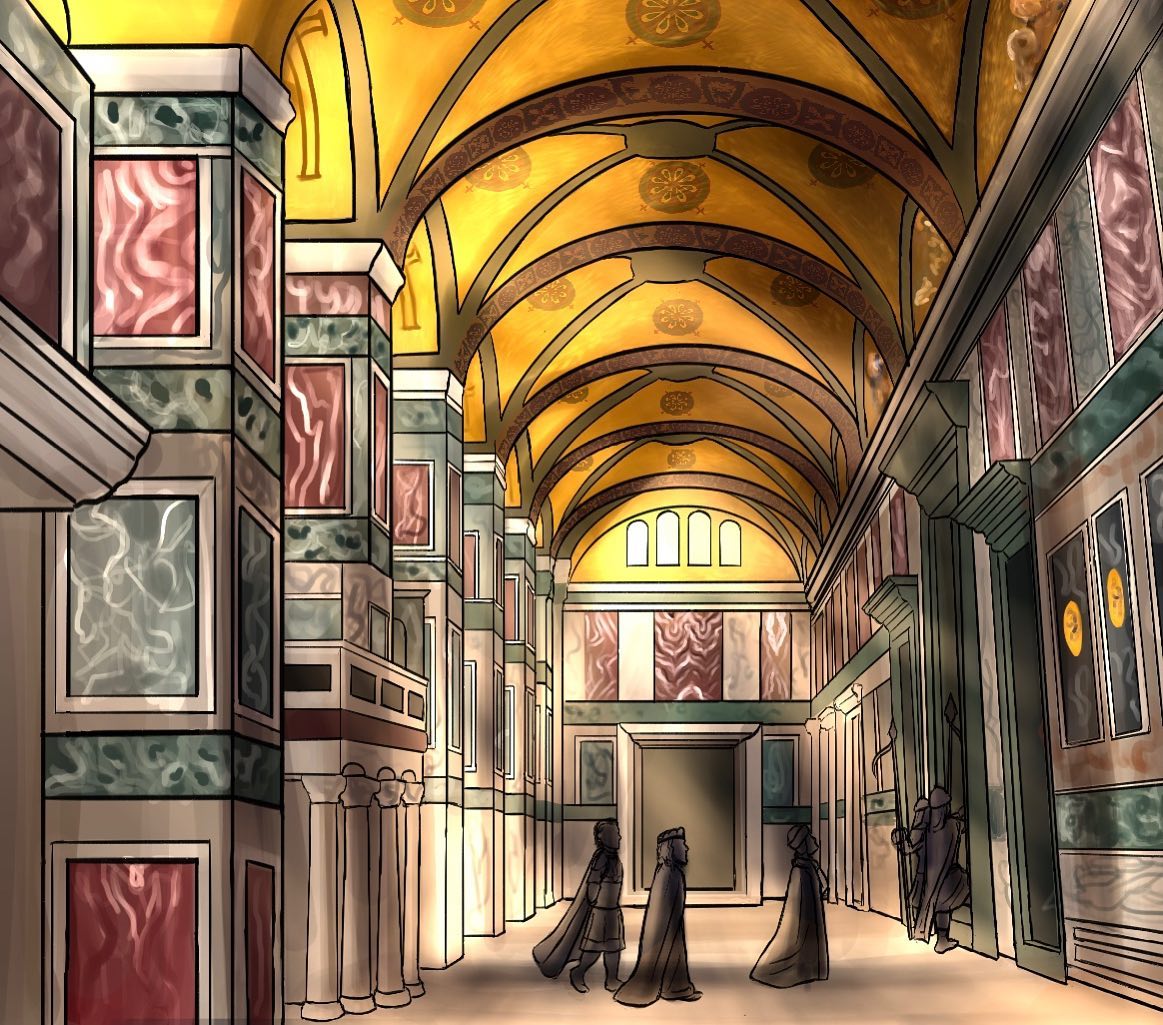
It can be suitable for younger readers as its violent scenes are not too extreme with intense blood and gore and also does not contain sex, rape, or obvious nudity- as is common in a lot of medieval dramas- except for a scenes of the lead character Theophano only showing partial nudity such as when at her bath but they rarely appear. According to Chrysa the illustrator, the comic was actually intended to address younger audiences which is why as mentioned earlier the characters were drawn with a cartoonish feeling in the texture but she says that in the future this would change as she could experiment in doing more mature content. In addition, this era in Byzantine history featured a great number of bloody genocides such as the merciless genocide of the Arabs Chandax by Nikephoros Phokas’ army in 961 when recapturing Crete which was omitted from the novel. Now if this comic were to give readers the full medieval experience, then I would have to say it has to contain extreme violence and sex in which the middle ages was definitely known for.
It is an innovation to have a young female character being Theophano as the lead role for a Byzantine epic as many wouldn’t expect a Byzantine epic centering around a strong woman but rather a strong but unstable emperor or a soldier but Theophano here is presented as a strong woman who acts on her own will and is not useless and submissive as many empresses of strong military emperors in Byzantium were. The part of Theophano as the lead character shows this novel having a Disney princess fairytale angle as Theophano at the start came from humble origins as an innkeepers’ daughter and was unexpectedly chosen as the wife of the future emperor Romanos II. Theophano herself is surely a strong woman as she is not afraid to speak to people above her in rank and social class and as empress she would do all she can so that she survives and stays in power but more importantly so that her sons will be safe and not fall from power as the happenings at that time were so unpredictable that a lot of the people Theophano trusted would end up betraying here and (spoiler alert!) at the end she is ultimately betrayed and exiled but at least like a Disney princess has a happy ending when she is reunited with her children the moment her first born son Basil II who will later be the “Bulgar-Slayer” becomes emperor in 976.
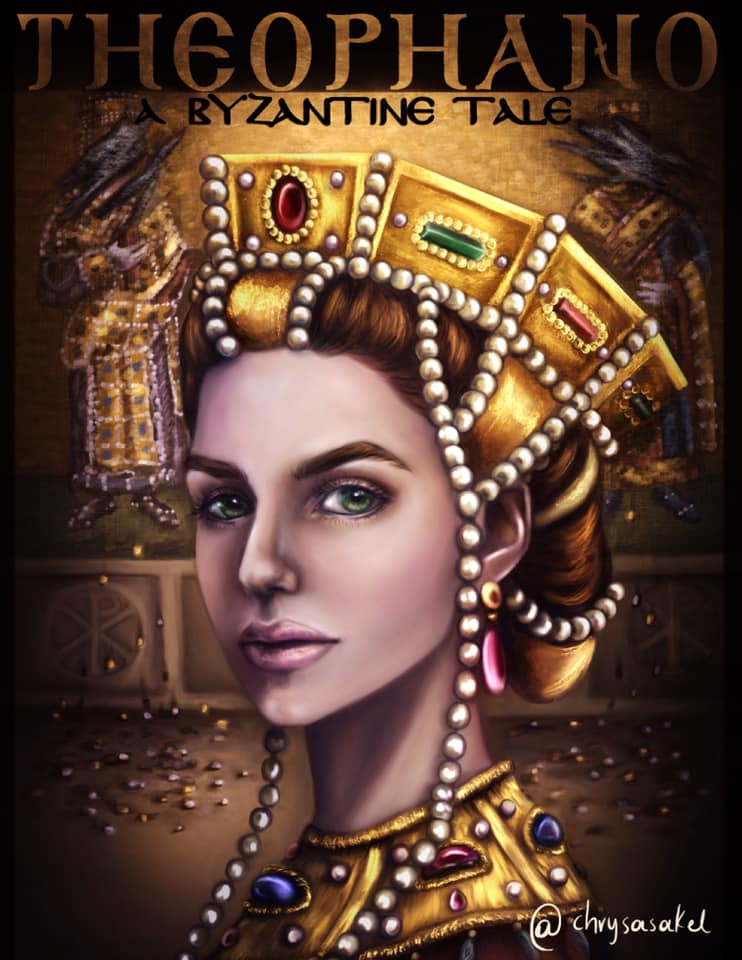
Byzantium however had other powerful women too such as Justinian I’s wife Empress Theodora, Empress Irene of Athens in the late 8th century, and Empress Anna of Savoy in the 14th century, meaning every now and then Byzantium would have a powerful woman, though not in all centuries.
It does justice to the character of Theophano as history usually remembers Theophano as a stereotypically evil woman that poisoned her father-in-law Emperor Constantine VII, first husband Emperor Romanos II, and arranged the assassination of her second husband Emperor Nikephoros II out of pure evil ambition but instead shows her as just a woman who wanted to do what was best for herself and her children while the world around her was cruel, so she had to act cruel to fight it. Now if Dovahhatty in his new Byzantium series would end up reaching the point of doing an episode with Theophano in it, I wonder if he would portray Theophano as evil the way he did with most of his empresses or if he would have read this novel too and portray her like the novel does?

It has a unique feature starting where it ends in 976 being narrated by an old palace official standing at Constantinople’s sea walls who at the end of the story (spoiler alert!) reveals himself as Theophano’s father Krateros. Chapters II, III, and IV of the novel begins with a flashback scene in Theophano’s life. Other than that, the novel too has some creative features such as characters doing a narration while a montage of events happens, the most notable being (spoiler alert!), the poisoning and death of Romanos II in 963.
Its story is not plain black and white with one side being all good and the other side all evil, rather it shows that everyone no matter how good their intentions were had to do evil things to make them happen and this was the case with Theophano. The novel also shows how power corrupts and can make good hearted people like the emperors Romanos II, Nikephoros II, and John I have a change of heart and turn evil due to how much power they are holding. On the other hand, it also shows that some people are just purely evil like the eunuch Joseph Bringas who (spoiler alert!) is at least defeated and banished at the mid-point of the story although in the second half (spoiler alert!) the emperor Nikephoros II and the other court eunuch Basil Lekapenos who for the most part was seen as good guys turn out to be the new villains. For me a story that is plain black and white is very biased and lacks a lot of meaning.
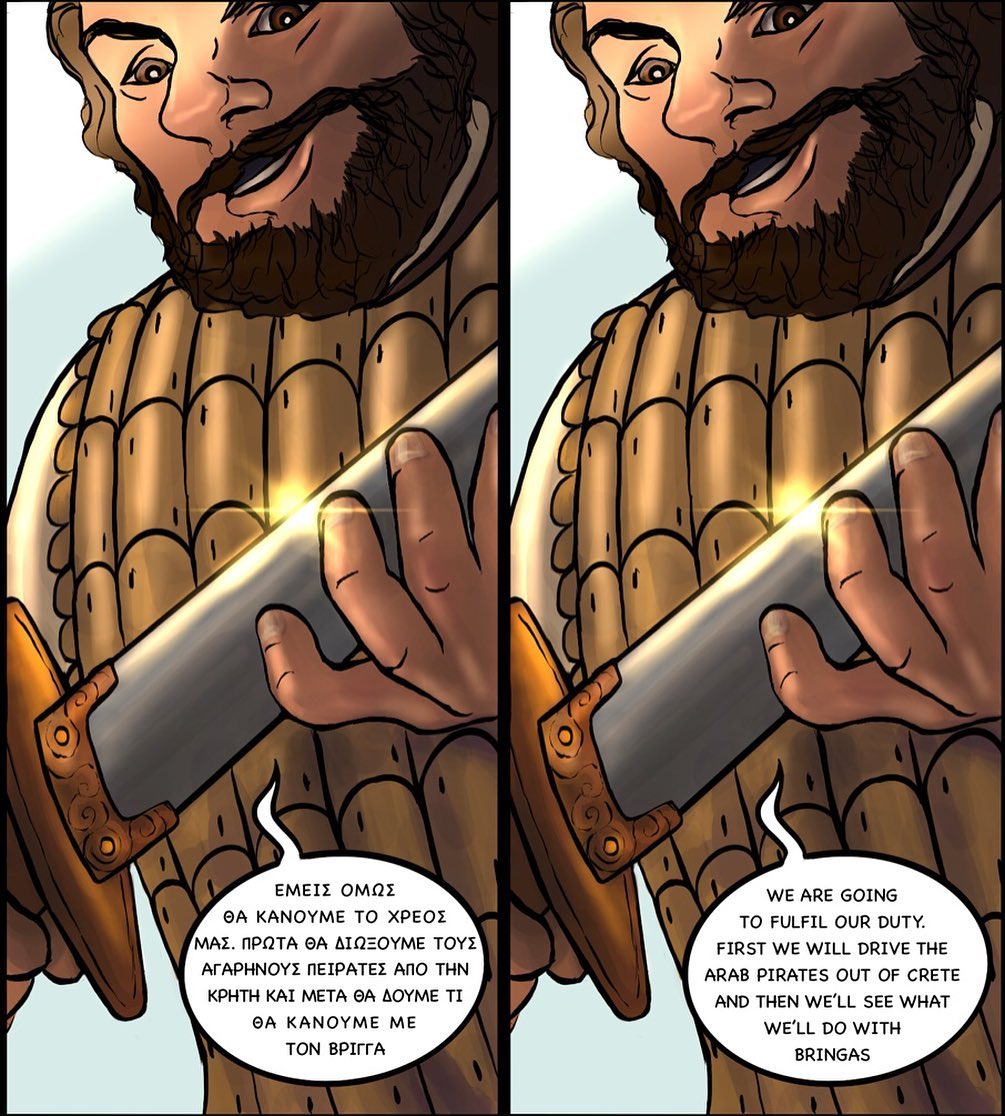
It is truly entertaining as it has a fusion of epic battles, court intrigues, romance, family drama, poisoning, betrayal, visions and ghosts, extravagant settings and palace ceremonies, and Byzantine easter eggs and at the same time will remind you of a Shakespeare play by the way it was written and divided into 5 chapters (like the 5 acts of Shakespearean plays) except of course easier to understand as Shakespeare’s plays use old fashioned formal English. Now since Shakespeare never wrote any plays set in Byzantium, this novel comes close enough to doing a Byzantine setting for a Shakespearean play.
It is a type of fan fiction that tries to remain as historically accurate and realistic as possible that it does not go experimental by blending in dragons, zombies, vampires, magical spells and potions, teleporting, and creatures to a Byzantine setting, neither does it have talking animals like in the Disney princess fairytales considering this is the type of story. Although it would also be a good idea too to have a Byzantine era graphic novel or novel that have elements of fantasy in it. However, no matter how historically accurate the novel tries to be, it still does have a number of inaccuracies which will be mentioned later.
It has a very important moral at the end which teaches you that if you do not belong in the ruling class, aspiring to be in it could mean a lot of consequences as was the case of Theophano, lesson here is to mind your own business especially if it does not concern you. The story also teaches us that power corrupts especially with a government system like Byzantium where the people still have power and more significantly, the army has true power and they can use that power to make or break an emperor, therefore showing that even though it had been centuries since the Roman Empire when things were like this, it still remained this way in Byzantium. To put it short, as Byzantium was the continuation of the original Roman Empire, it kept very much the same imperial system wherein there was no law that the emperor had divine rights meaning that when they lose support from the senate, army, or people, they could be overthrown, therefore it was easy for an emperor to be dethroned and replaced.
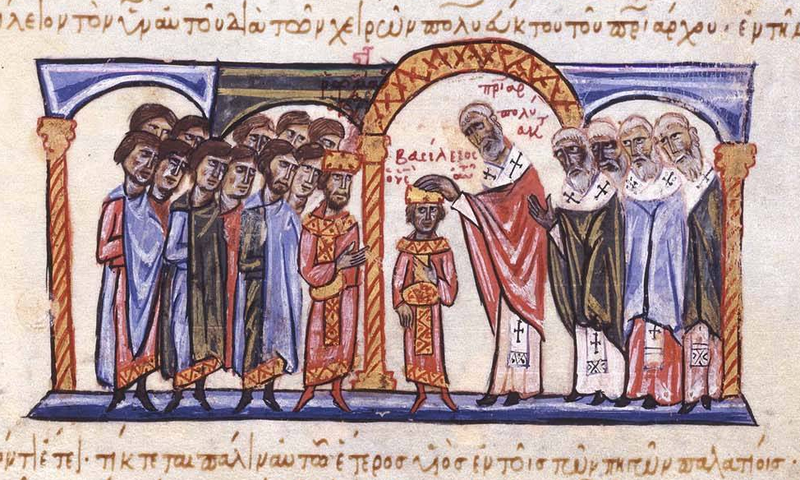
Background of the Story

To understand the story of Theophano: A Byzantine Tale, you must know a bit about the history of Byzantium too. Basically, Byzantium is the continuation of the Roman Empire in the Middle Ages though the date to start off Byzantine history still remains debated as you can start it when the Roman Empire was first divided by Emperor Diocletian in 286, with the founding of the new imperial capital of Constantinople in 330 by the Roman emperor Constantine I the Great, with the final division between the Eastern and Western Roman Empires in 395 following the death of the last united Roman emperor Theodosius I, or lastly with the fall of the west in 476 wherein only the east based in Constantinople survived as the only Roman Empire. In the 6th century, the Eastern Roman Empire being Byzantium reached its height of power and territory under its most influential emperor Justinian I (r. 527-565) wherein the empire stretched west to east from Southern Spain to Syria and north to south from the Crimea to Egypt but shortly after disintegrated due to a devastating war with their mortal enemy then, the Sassanid Persian Empire in the early 7th century during the reign of Heraclius (r. 610-641) which was followed by the destruction of the Sassanids not by Byzantium but by the newly born power of the Arab Caliphate which also in the 7th century began posing a major threat to Byzantium taking away all of North Africa from them and even almost ending their empire when laying siege to Constantinople twice (674-678 and 717-718). The Byzantines though managed to survive because they adapted to the current situation by reforming their administrative system into militarized districts known as Themes which were provinces made to increase military presence especially since enemy raids became more frequent and at the same time, they had also invented great innovations such as a secret flamethrower naval weapon known as Greek Fire which protected Constantinople from both of these Arab sieges. In the 9th century, Byzantium came out of these dark times when turning the tide of war against the Arabs by fighting on the offensive as for the past 2 centuries, the Byzantines in their heartland (Asia Minor or Turkey) always fought on the defensive but in the 9th century, they were able to retake the lands lost to the Arabs, however to the north the new Bulgarian posed as a problem at the same time ever since Nomadic Bulgar hordes settled in Byzantine Thrace in the late 7th century. In the year 867, a peasant by origin named Basil plots against and murders the reigning emperor Michael III and establishes the long-lived and successful Macedonian Dynasty, the ruling dynasty in this novel’s setting and the golden age begins here with Basil I (r. 867-886) followed by his son and successor Leo VI (r. 886-912), though at Leo VI’s death he was succeeded by his brother Alexander who put aside Leo’s actual son and heir Constantine VII, the reigning emperor at the beginning of the story. Alexander only ruled for a year and died in 913, and it was here when the young boy Constantine VII came to power but under a troubled regency under his mother and the Patriarch of Constantinople, a total disaster which was only resolved when an admiral of low birth, the Armenian Romanos Lekapenos usurped power making himself emperor in 920 as a way to protect the young Constantine VII from other usurpers. Romanos I’s reign was a successful time in Byzantine history as this was when most of the lands lost to the Arabs centuries earlier were recovered after many battles fought by his armies and in his reign, the story’s protagonist Theophano was born. Though Romanos I reigned successfully, Romanos I appointed 3 of his sons as his co-emperors making the rightful one Constantine VII the least effective one of the 5 co-emperors but the eldest son died and in 944, his 2 sons Stephen and Constantine fell out with Romanos I making them exile him to a monastery and taking the throne for themselves for about a month but a palace coup overthrew them both and sent them to their father in his monastery making Constantine VII no longer a puppet but the sole emperor and by this time he and his wife Helena had a son and heir Romanos II who was destined to succeed his father but to be an emperor, he needed a wife and though he could have clearly chosen a girl from the nobility, he ended up- though being manipulated by his scheming mentor the eunuch Joseph Bringas- marrying a commoner named Anastasia who renamed herself Theophano when being selected as young Romanos II’ wife. At the same, the empire had many powerful generals from the military aristocracy namely Nikephoros Phokas, his brother Leo, and their nephew John Tzimiskes son in order for none of these families gaining the upper hand and usurping the most valuable prize which was the throne, the imperial heir Romanos had to marry Theophano who was a commoner so that none of the noble families would be in conflict with each other. At the setting of this novel beginning in the 950s, the Byzantine Empire pretty much consisted a great amount of land including southern Italy, most of Greece, Thrace, and more than half of Asia Minor.
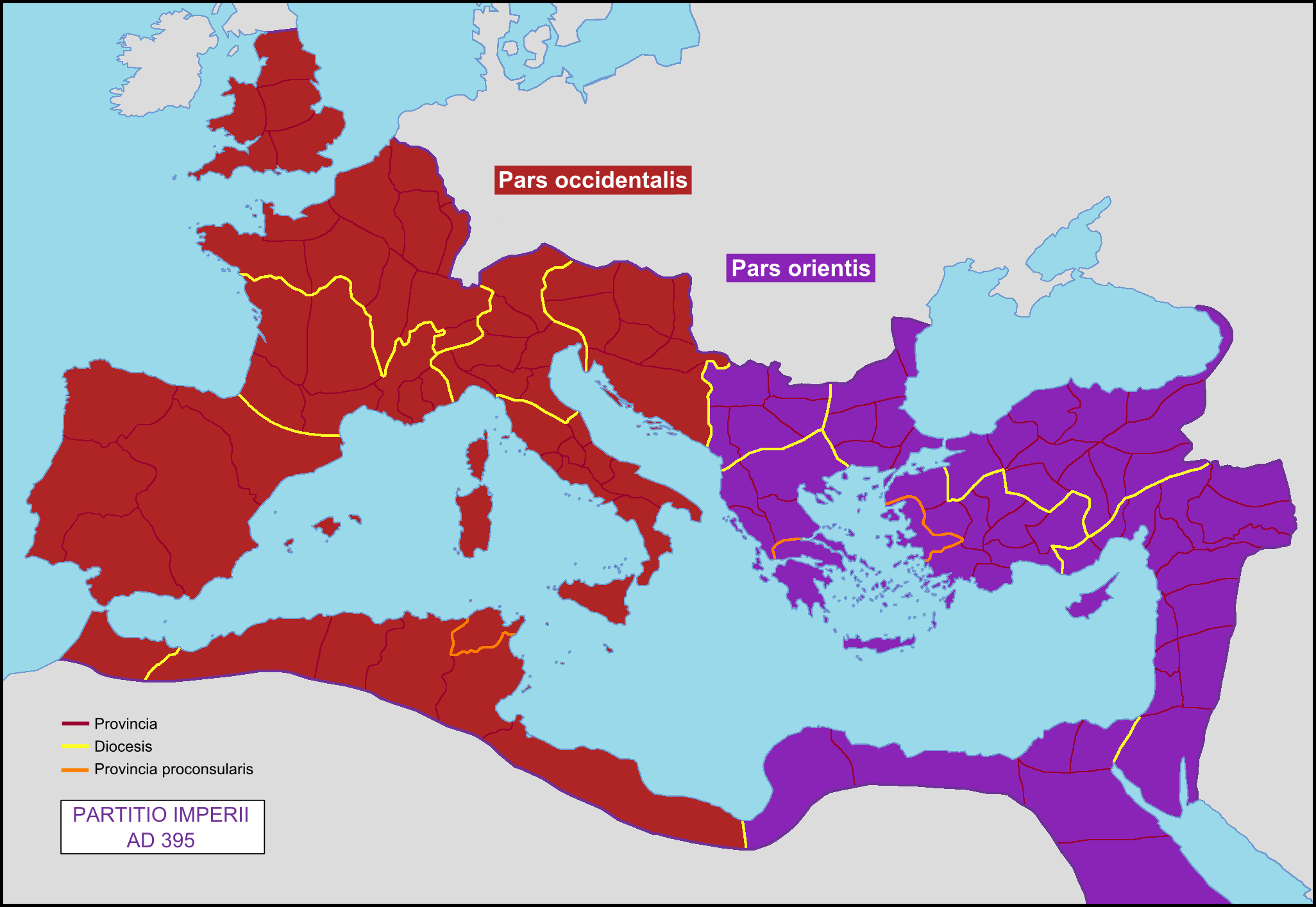
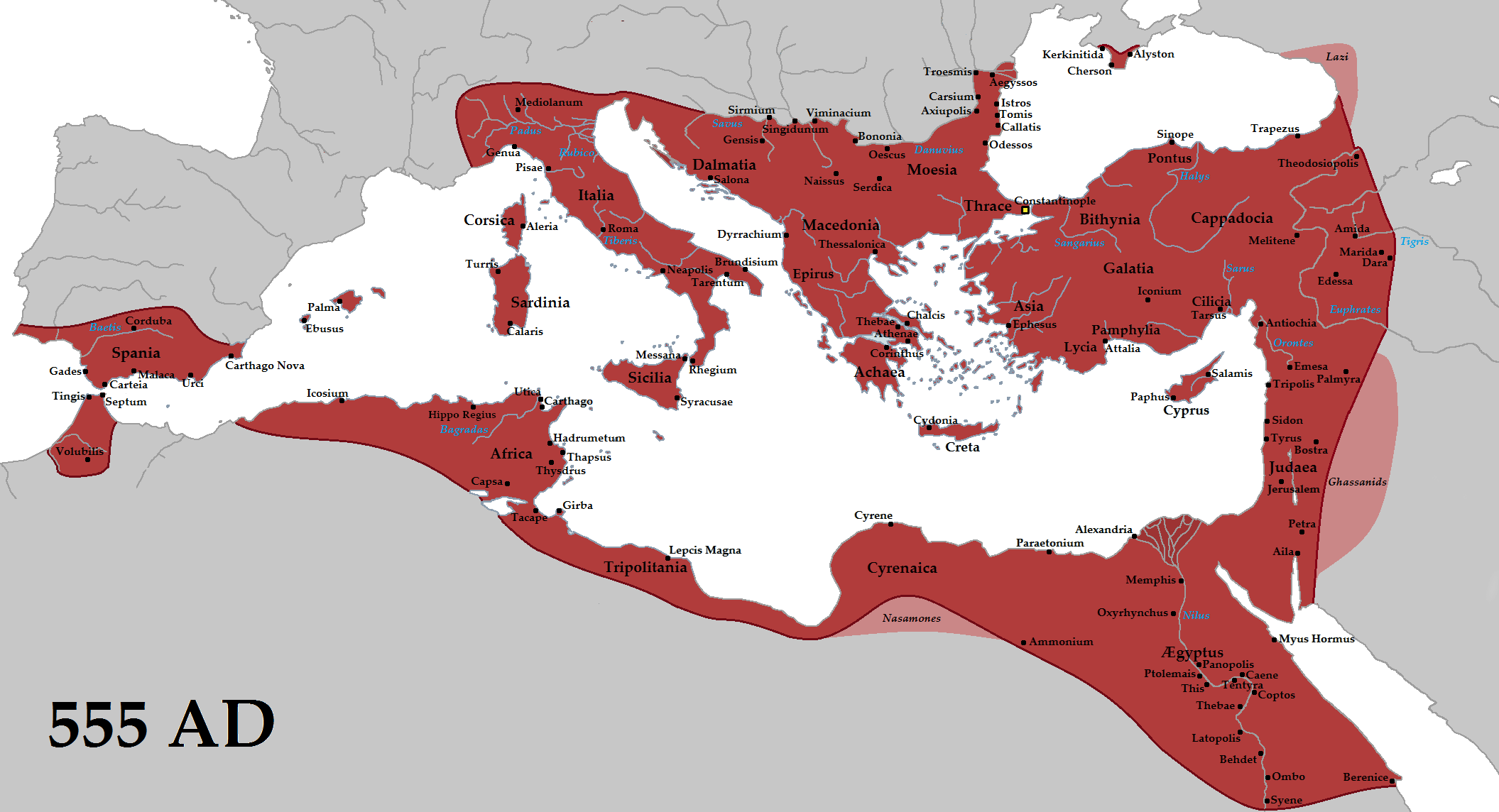
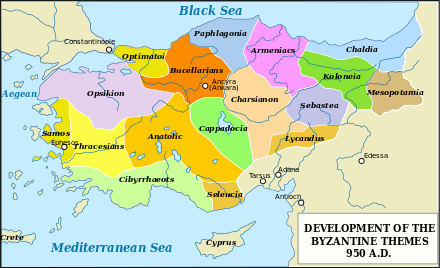

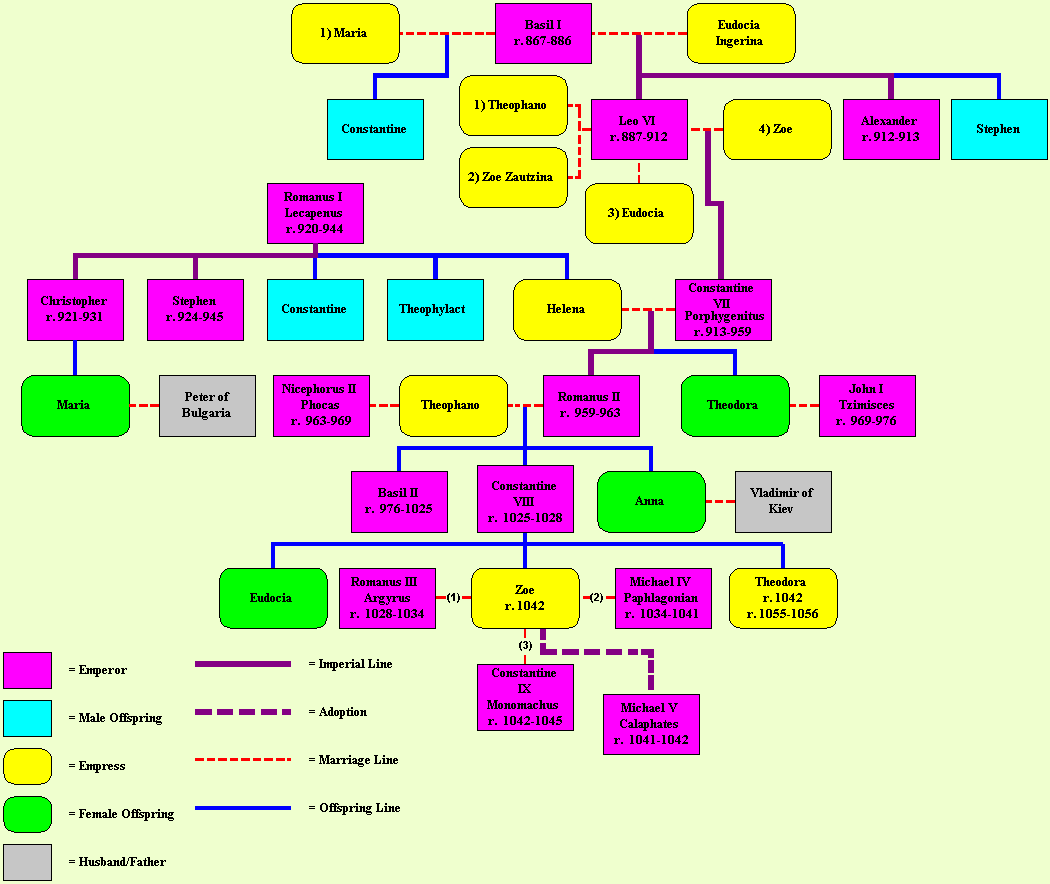
The Characters and the Ideal actors to play them (in my opinion)

The 2020 graphic novel Theophano: A Byzantine Tale features a great number of complex characters that well drawn making them look authentic to the era despite not having very realistic features like well-known comics do. As I read the novel, when looking at the characters, I already had an ideal fan cast in mind for a potential movie of this graphic novel consisting of many talented actors and actresses of different nationalities who in my opinion can nail their respective characters. To say it simply, there has been no mainstream Byzantine era Hollywood film the way there are so many films even up to this day set in Ancient Greece or Rome or in Medieval Europe though if there were to be a Byzantine era film, this novel could be a good basis for a film adaptation as its style was written like an epic movie too. Now, on order for a film adaptation set in the Byzantine era sell, it needs a list of well-known actors as on the other hand just last year, there was true enough a live-action documentary-drama which featured Byzantium which was The Rise of Empires: Ottoman wherein the Byzantines in their last year (1453) had a big part but the thing is, when watching it, you would not seem hooked to the characters as they were played by lesser known actors.
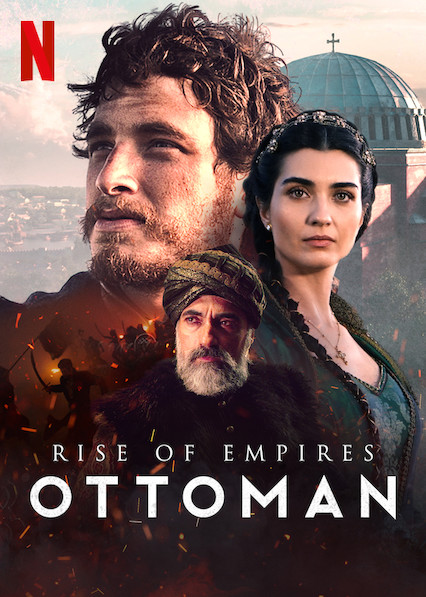
However, if a Byzantine film such as this novel could use well-known actors many are familiar with from other pop culture media, then this could make a possibility for Byzantium to be introduced into the world of pop culture. Now, let us proceed to the novel’s characters and the actors/ actresses that I think could nail their roles! Helping me in casting some of the characters in this novel was my friend and partner in my channel Carlos who by the way voiced John Tzimiskes in my films- shout out to @itscarlosfrancisco on Instagram! As for you viewers, please feel free to comment if my casting choices are not so much to your liking.
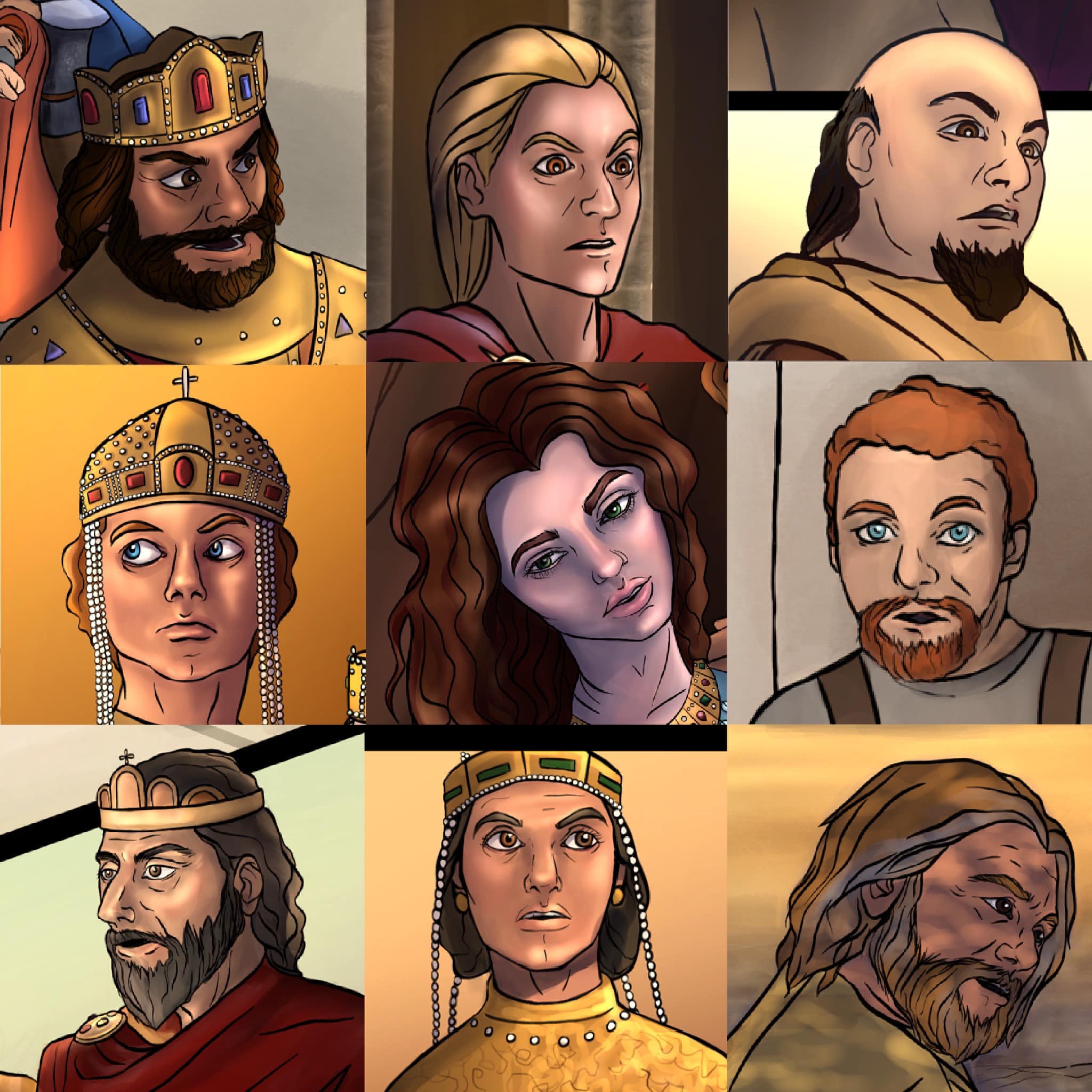
Check out the fan cast list for Theophano I made on IMDB here.
Anya Taylor-Joy as Theophano/ Anastasia– The story’s lead character is a young woman named Anastasia who is renamed Theophano when being selected as the bride of the imperial heir Romanos in 956. When I asked the creators about Theophano’s origin as a commoner whose parents came from Laconia (Southern Greece) while she grew up in Constantinople in her father’s inn was true, I was told by them that no one can really answer that since the sources about her origins are conflicting as she could have possibly come from the Byzantine nobility but not from a known family while her humble origins could just be a theory or a Phokas propaganda as the Phokas family who opposed the ruling emperor Constantine VII by the time Theophano entered the imperial family probably came up with lies about her as they possibly wanted one of their own to marry Romanos. The story however goes for the option of making Theophano a woman of low birth whose origins are from the Southern Greek region of Laconia (where Sparta is today) though she was born in Constantinople as at the beginning of the novel, her parents fled Laconia when Slavic tribes that settled there attacked their village and when arriving in Constantinople, she was born some time in 941.
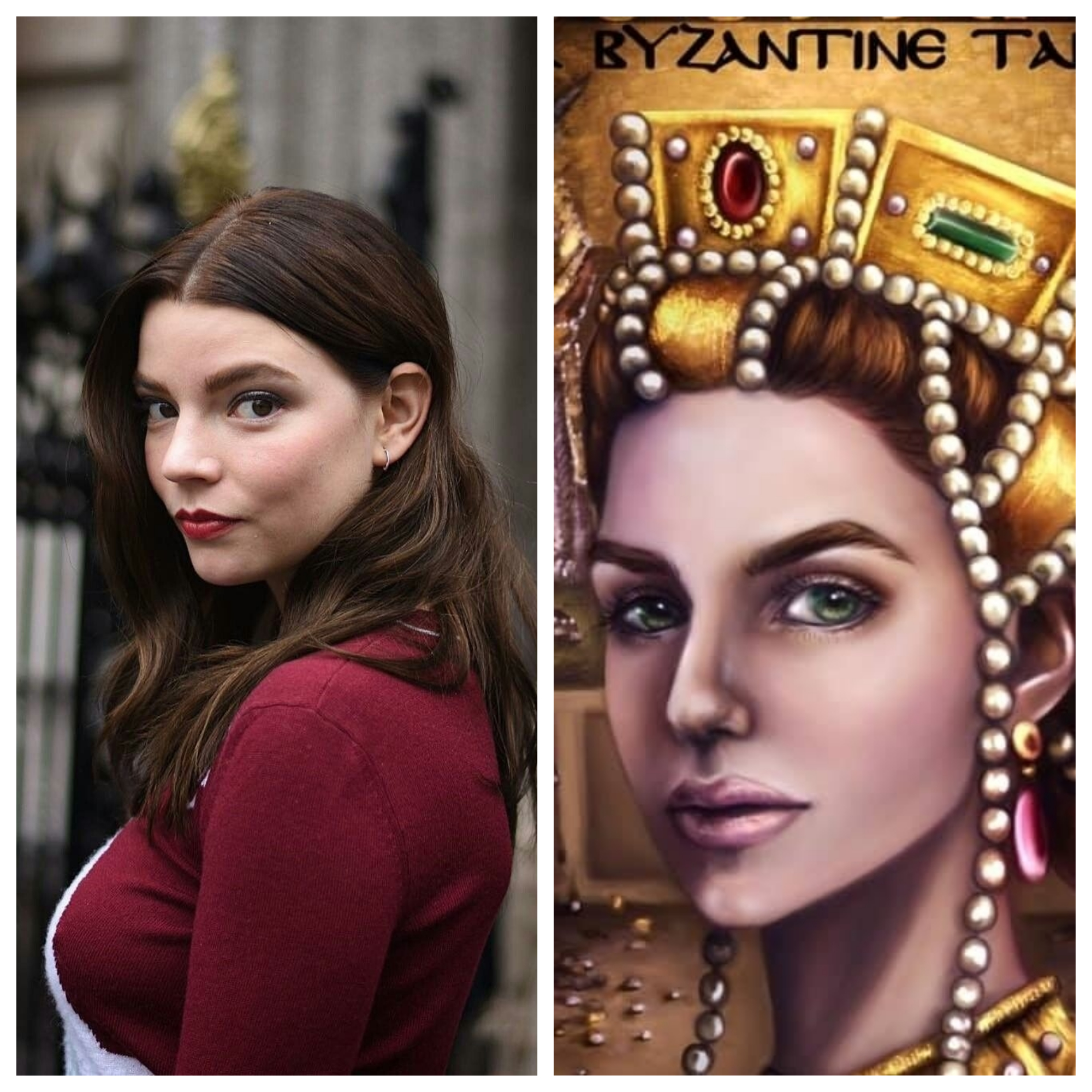
Another source I read however said she grew up in Laconia and the future emperor Romanos II met her there. In the novel, Anastasia though despite coming from humble origins grew up quite well-off as her father Krateros was the innkeeper of not just an ordinary inn but the high-end tavern located near the imperial palace which was frequently visited by palace officials including the imperial heir Romanos and in the story, the couple met at this tavern. At the start of the novel however, Anastasia already had fantasies of living in the palace which was very close to her home, and at her first visit to the palace, her whole world turns around when she expressed it out loud that she wanted to live there which alarmed the court eunuch officials Joseph Bringas and Basil Lekapenos thus beginning the plot to lure her in which was achieved when Bringas arranged her to marry the heir Romanos, thus Anastasia was renamed as Theophano though since she not from the nobility many especially the empress Helena Lekapene do not trust her. Theophano gains some of the empress’ trust when she is able to give birth to male heirs but her independent personality in casually talking to important people shocks the court and the empress making Helena attempt to poison Theophano to rid her for good as she had proven to be such an embarrassment. Theophano though was revealed of the plot to poison her so when receiving a cup of wine at a feast, she reluctantly passes it to the emperor Constantine VII who she believes is plotting to kill her resulting in the emperor’s death and the empress falsely accused of doing it and imprisoned, though this paved the way for Theophano to become the next empress or Augusta at only 19 while her husband Romanos II was crowned at only 21 although Romanos II grew more distant from her due to the schemes of his trusted advisor Joseph Bringas who poisoned Romanos to believing Theophano caused his parents’ death which makes Romanos start turning on her. Theophano then knew for sure Joseph Bringas was the true villain who only got her to marry Romanos in order to use her for his own personal gain and now that she has been used, Joseph plans to eliminate her but her father informs her that she must get rid of Joseph to survive but the only way to do it is to poison her husband who is Joseph’s source of authority and puppet. For Theophano it was now a tough choice since she still loved him but since Romanos distanced himself from her now wanting to divorce her and marry someone else, she had to poison him to ensure the safety of her children so that they wouldn’t end up being puppets like their father. With Romanos II dead however, his sons with Theophano were too young to rule alone and although Theophano thought poisoning her husband could get rid of Joseph, it was the complete opposite as Joseph already seized power as the regents for her sons wherein he has Theophano banished but she is saved by a coup led by the general Nikephoros Phokas with his brother Leo and nephew John Tzimiskes as well as the eunuch Basil Lekapenos, her father Krateros and his friend the admiral Theophanes. The coup is successful and Joseph Bringas is banished while Nikephoros Phokas becomes emperor marrying Theophano to secure his legitimacy and Nikephoros as the senior emperor swore to protect Theophano’s sons who were already made co-emperors back when Romanos II was still alive. Nikephoros II Phokas as emperor however turned out to be too ambitious in his military conquests that he also grew distant from Theophano but it was Nikephoros suddenly naming his brother Leo as his successor when Theophano had the last straw and to protect her children, she had to eliminate him. At this time, she was in fact in love with John Tzimiskes who was banished but with the help of the eunuch Basil Lekapenos, John returns to Constantinople where with the help of Basil and Theophano plot to murder Nikephoros. In a cold winter night of December 969, Theophano helps John Tzimiskes and his 3 fellow conspirators into the heavily fortified palace to assassinate Nikephoros in his sleep but killing the emperor had so much consequences, that the mastermind of the plot John Tzimiskes who in fact eyed the throne had to comply the patriarch of Constantinople Polyeuctus and banish Theophano to the Princes’ Islands in the Marmara Sea in order to secure his place as emperor.
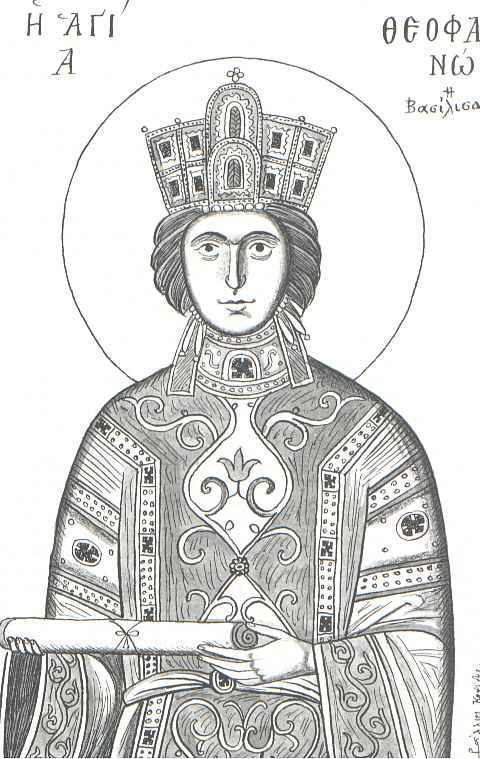
Theophano was thus betrayed and stripped off her title and it was revealed that it was Basil Lekapenos that was behind the plot and was backing John Tzimiskes, however John was reluctant to send Theophano away but still had to do it to comply with the patriarch. For the next 7 years, Theophano was banished to the Princes’ Islands though her sons at least remained co-emperors while John I Tzimiskes was the senior emperor though in 976, John I suddenly died making the new senior emperor being Theophano and Romanos II’s son Basil II arrange to have her brought back, thus her story ends happy as she is reunited with her children. The story’s epilogue then says Theophano lived out the rest of her days in Constantinople’s palace regaining the title of Augusta but after learning from all the consequences of her actions in the past, she never again actively participated in the administration. The story though does not mention the year of her death while real history also does not mention it so I had to ask the creators to give an estimated year of death for her and they answered me saying that the last time Theophano was mentioned in the sources was when she took the responsibility to negotiate with the Georgians for a potential alliance with her son Basil II and this had happened definitely before the 990s, therefore they estimated her death to be some time in the 990s while her son Basil II reigned long before his ultimate conquest of the Bulgarian Empire. Basically the novel shows Theophano as a brave and independent woman who to great extent did not know how behave herself seeing powerful people as equals and refused to not act submissive to anyone and would do anything to protect herself and her children even if it meant killing those who posed a threat to her but true enough despite committing such evil acts, the novel shows that her intentions were not purely evil as true enough the world around her was cruel so she had to act that way in order to survive and at the end she at least met a happy ending as the empress again. Like most of the characters in the novel, Theophano’s personality has undergone a lot of changes coming from an idealistic young woman who dreams of being an empress seeing it as fantasy where she gets everything her way but as time progressed, it turned out to be the complete opposite as the world literally went against her seeing the actual reality of being an empress in the Byzantine Empire though at the end she learned from her mistakes and ambitions which is why she had ended up remaining less active and more of an advisor to her son Basil II.
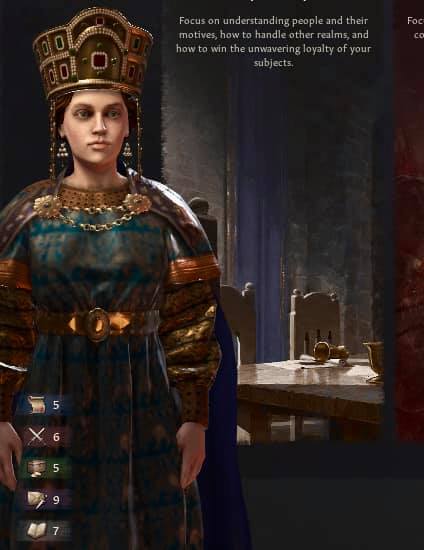
Not to mention, Theophano too has the great honor of being a wife of 2 emperors, mother of 2 emperors (Basil II and Constantine VIII), and mother-in-law of the Grand Prince of Kiev Vladimir the Great. Though Theophano, is the lead character of the story in which it is based on her perspective, the story seems like the plot revolves around her and not her moving the story which is similar to the case of Jyn Erso, the protagonist of Rogue One: A Star Wars Story in which the plot revolves around her and not her changing the story’s plotline. Now ever since I started reading the novel as this year began, I already envisioned Anya Taylor-Joy (@anyataylorjoy) playing Theophano; Anya Taylor-Joy is a young American-Argentine-British actress known for playing Beth Harmon in the 2020 Netflix series The Queen’s Gambit and her performance there as an independent young woman with complex emotions makes her perfectly fit the role of Theophano. In addition, Theophano was known for her striking beauty with dark hair and green eyes as she appears in the novel and although the actress has brown eyes, she could still do well portraying Theophano as the character in the novel has a similar look and figure with the actress, not to mention Joy’s age as of now is more or less similar to the age of Theophano in the story and though Theophano’s adult character goes through a span of 20 years in the main section of the story, it should be possible that Anya Taylor-Joy can play the character throughout the entire 20 years with just some makeup and prosthetics to appear as if she had ages. The novel too features Theophano as a child at the beginning of chapter III, though I have no possible choice for an actress who could play the child Theophano. When mentioning my ideal casting in the comments section in their Instagram post of the novel’s characters, I commented too that Anya Taylor-Joy would play a good Theophano, though the novel’s illustrator Chrysa Sakel agrees Anya Taylor-Joy is a great actress but in her opinion sees British actress Kaya Scodelario (@kayascods) as her choice for Theophano who’s appearance also has a lot of similarities with the character. For me, another choice for an actress to play Theophano is the star of Netflix’s Haunting of By Manor and You Victoria Pedretti who’s face is perfect for a Byzantine role in my opinion although she does not look very much like Theophano except her deeply emotional style of acting as seen in Bly Manor makes her a possible choice to play Theophano, however if not for Theophano, she could also play another minor role in this story as a cameo character.
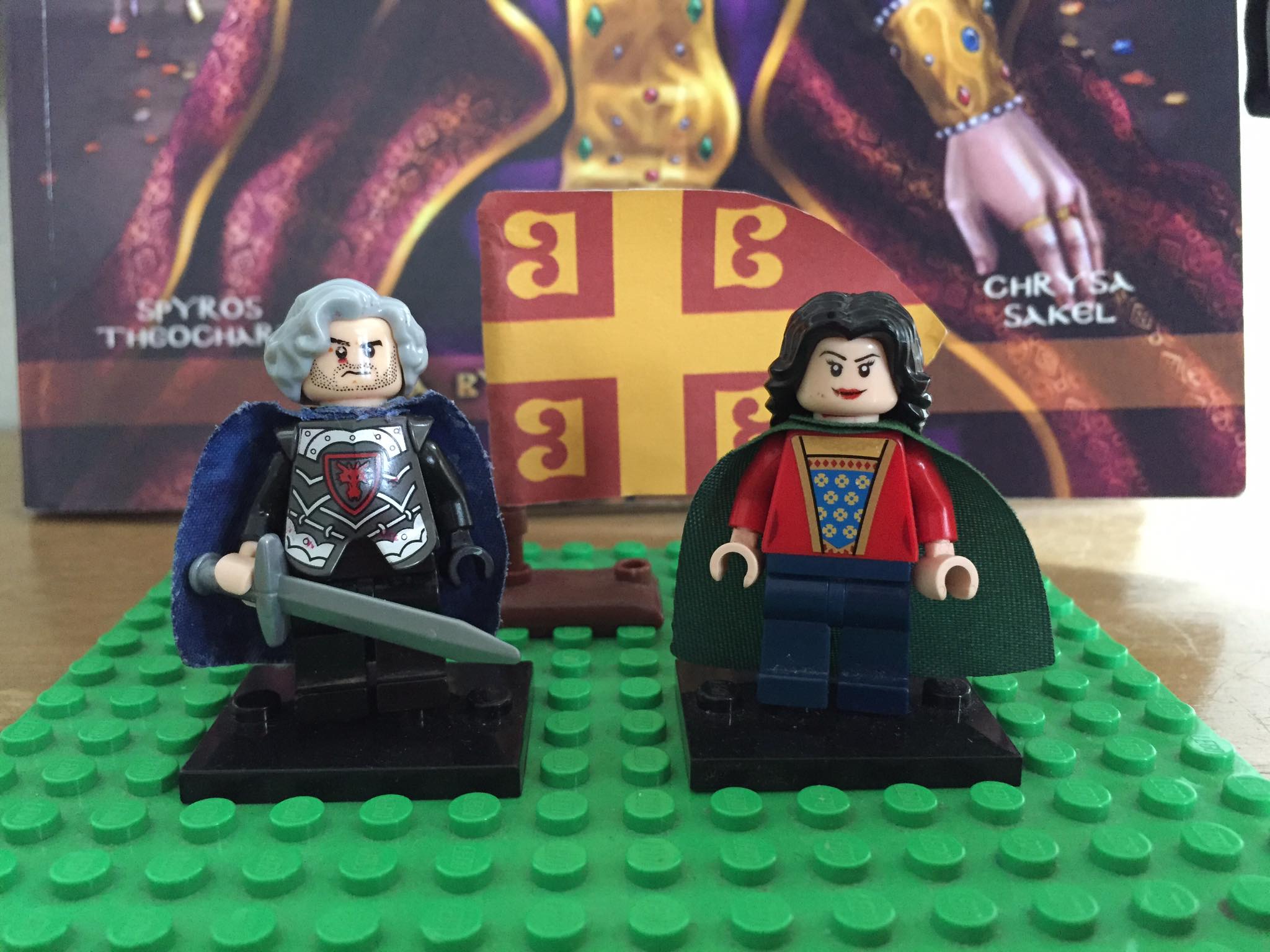
Keanu Reeves as Krateros– Though the story is told in the perspective of Theophano, it also seems like it is being narrated by someone as the novel opens when an old man appearing to be a palace official in the year 976 stands in at the palace walls telling a story to the guards, this old man happens to be Krateros who has served for many years in the court and happens to tell the story of his daughter Theophano. Krateros’ story begins in 940 where he was nothing more but a simple citizen from the region of Laconia in Southern Greece coming from Sparta where he and his wife escape in a ship headed for Constantinople helped by a naval officer named Theophanes as a band of raiding Slavic people that settled in their area attack their homes. When arriving in Constantinople, Krateros joins the navy to fight off an invading fleet of the Kievan Rus’ (Varangians) in the Bosporus Sea using the secret weapon known as Greek Fire which together with a surprise attack by the Byzantine Cataphract cavalry destroys the Rus’ invasion.
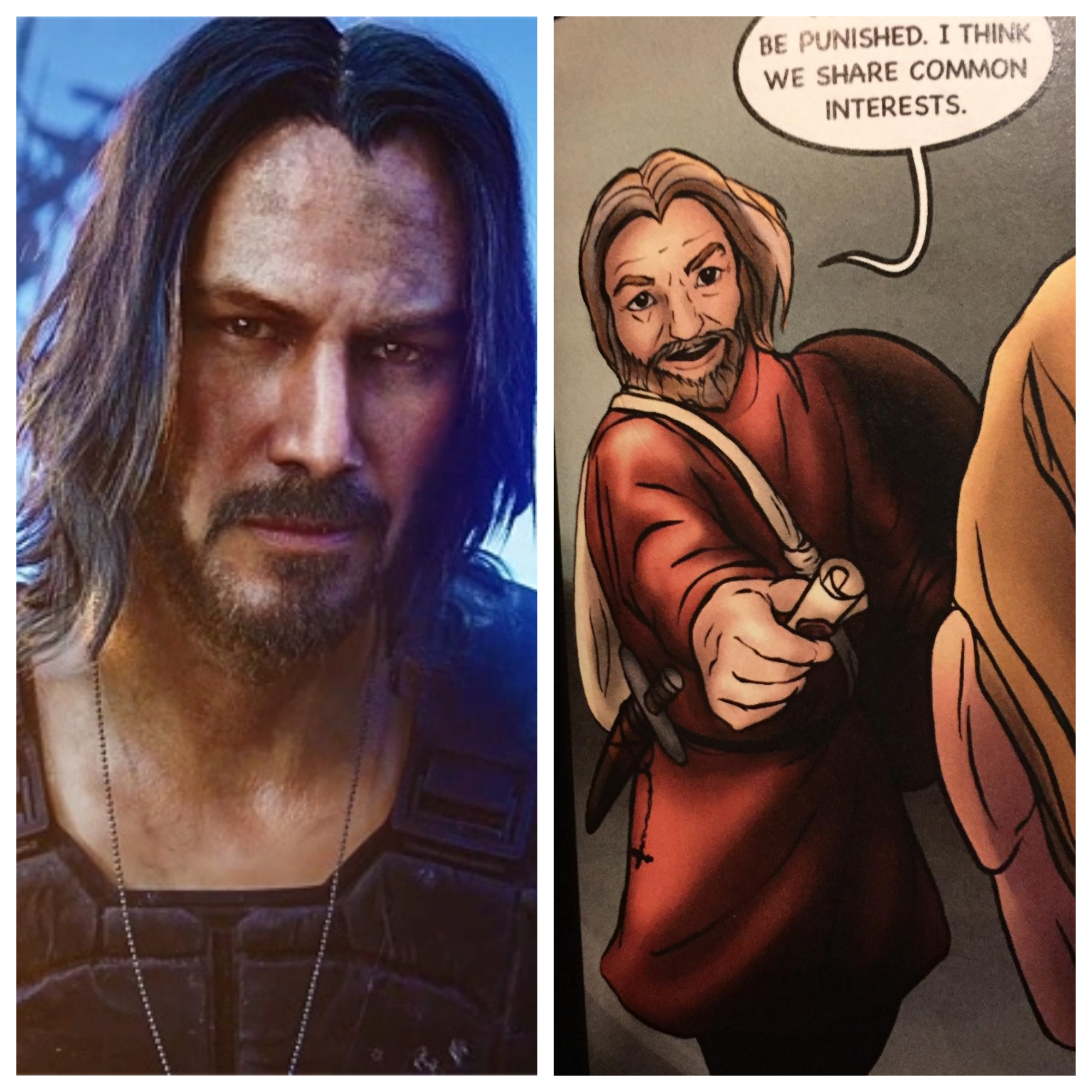
When settling in Constantinople, Krateros opened up an inn near the palace wherein he became rich while his inn grew to become a high-end tavern as high ranking palace officials often dined and drank there. Krateros basically raised Theophano (Anastasia) himself as his wife died giving birth to her in 941, and it can be hinted that Theophano’s independent character was due to her upbringing by him. Before Theophano married Romanos, Krateros was advised by his best friend Theophanes and eunuch Joseph Bringas to close his tavern to become a court official with the title of Spatharios so that Theophano can be legitimized as part of the imperial family, though Krateros at first objected, he accepted the position anyway and closed his tavern. During the time Theophano was part of the imperial family, Krateros enjoyed the privileges of being a court official together with his best friend Theophanes but when Romanos II becomes emperor in 959 following the death of his father Constantine VII, Romanos forced Krateros to join the expedition of Nikephoros Phokas to recapture Crete as Romanos was manipulated to do so by Joseph Bringas who saw Krateros and his friends Theophanes and Basil Lekapenos as threats so sending them there would mean sending them to their deaths for it was going to be a perilous mission. While at the expedition, Krateros however was just in charge of logistics but this was very vital since it kept the expedition operating instead of retreating due to lack of supplies and historically, Nikephoros’ expedition of Crete succeeded because supplies were sent to the army in Crete by ship. It was here however where Krateros sends word to Theophano to poison Romanos in order to get rid of Joseph who he felt was getting too powerful. Krateros later reunites with his daughter and helps in Nikephoros’ coup to overthrow Joseph Bringas in 963 following the poisoning of Romanos, though in the process Theophanes was killed. During the reign of Theophano’s new husband Emperor Nikephoros II Phokas, Krateros barely appears in the story but he still remains alive except now much older, though he appears only a few times conversing with Basil Lekapenos who still remained a court official under Nikephoros II. In the story’s climax, after Nikephoros is assassinated in his sleep in 969, Krateros returns again and here Basil Lekapenos reveals he was behind the plot to lead Nikephoros to his downfall and have Theophano banished and here Basil who turns out to be the secret villain even goes as far as threatening to beat the old Krateros if he pleads for Theophano to be spared but fearing for his life, Krateros has to allow his daughter to be banished. Other than Theophano and Basil Lekapenos, Krateros is one of the only 3 lead characters that live till the very end of the story. Now Krateros is historically Theophano’s father but history does not record anything else about him so the novel goes deeper by building up Krateros’ character being Theophano’s father and ultimate supporter till the very end and he is surely one person that has gone a long way from a common folk in Laconia to a court official witnessing the countless intrigues of this golden age of Byzantium. When looking for an actor to play Krateros, I had a hard time finding one who has a strong presence especially in narrating the story but luckily my friend Carlos when seeing the appearance of Krateros chose no other than Keanu Reeves to play the character and I agree since the movie would be a hit with someone as legendary and talented as him starting off the film by narrating it and I can tell he is one actor that can play a wide variety of roles, even Byzantines; on the other hand, I also thought of casting Keanu Reeves as Nikephoros Phokas though late I came to think Pedro Pascal who will be mentioned next would be a better choice.
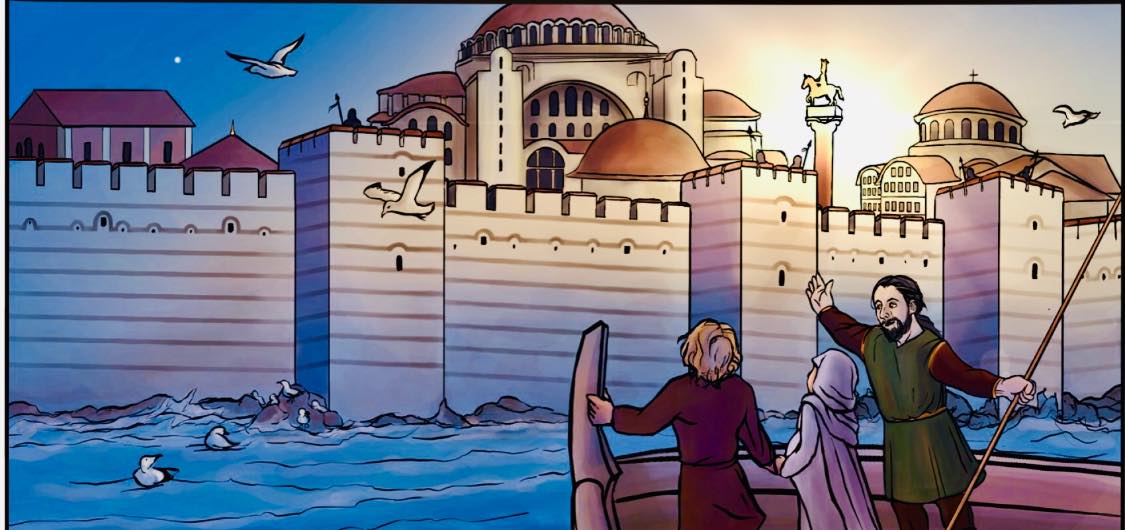
Pedro Pascal as Nikephoros II Phokas– Nikephoros II Phokas is a real historical figure and one of Byzantium’s most renowned military emperors who married Theophano in 963 following the death of Emperor Romanos II until his own death in 969. Nikephoros Phokas was from the prominent Phokas clan of Cappadocia born in 912, the son of the general Bardas Phokas the Elder and older brother of Leo Phokas and Nikephoros’ entire life was basically all about military service and fighting the Arab enemies in the east and his constant wars against the Arabs ever since a young age shaped him to have an intense anger towards the Arabs and Islam itself making him something like a “crusader” as his purpose in his fighting his wars was not only for territorial expansion but to fight in the name of Orthodox Christianity.

In the story, Nikephoros is first introduced in chapter I in 956 before Theophano marries Romanos and here, Nikephoros is seen as a loyal general who is given the high ranking military position of Domestikos ton Scholon or “Domestic of the Schools” by the emperor Constantine VII wherein he was approached by Theophano to be made the godfather of her first son Basil and afterwards, he spent most of the time campaigning against the Arabs in the empire’s eastern borders achieving a lot of success but hearing of Constantine VII’s death in 959, Nikephoros had to return to Constantinople to pledge loyalty to the new emperor Romanos II who charges Nikephoros with leading the long awaited naval expedition to retake Crete from the Arab Emirate established there back in the 820s. In 961, Nikephoros led the successful expedition in retaking Crete which he finally completed and back in Constantinople a triumph was celebrated for him where their Arab prisoners including the last Emir of Crete thus Nikephoros was nicknamed the “Pale Death of the Saracens”. Though Nikephoros won a great victory in Crete, he was sent back to the east where the Arab threat grew again. After the death of Romanos II in 963 though, Theophano and John Tzimiskes asked the help of Nikephoros and his army to march into Constantinople and overthrow Joseph Bringas and moths later, Nikephoros arrived in Constantinople with an army defeating the forces of Joseph Bringas who surrendered after losing in a fight to Nikephoros thus Joseph was banished and Nikephoros was now crowned the senior emperor and guardian to the rightful young emperors Basil II and Constantine VIII while Theophano was re-crowned as empress afterwards marrying Nikephoros though Theophano did not truly love Nikephoros as he was not only 30 years older than her but had also thought of himself as an ascetic monk-warrior who preferred to distance himself from women ever since his first wife and son died.
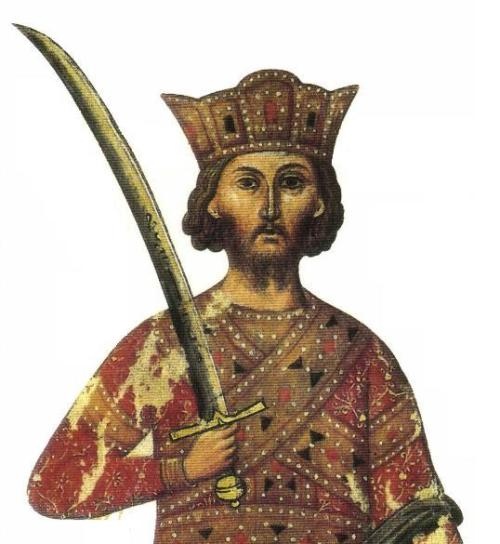
As emperor however, Nikephoros’ personality had a great change but nevertheless he was still the tough no-nonsense military man he was but the downside of him as emperor was that he was too ambitious and living too much in the past that he also had the dream of making the Mediterranean a “Roman Lake” again as it was back in the 6th century under Emperor Justinian I forgetting that they were no longer living in a time when these kinds of conquests were still possible. Nikephoros turned out to be hated by his people for his brutal taxation policies to fund his wars, though they were also content with the empire they had and did not care about expanding too much anymore. Nikephoros II true enough was nothing more but a general and not a politician and man of the people which caused his downfall especially since he tolerated dirty means of taxations such as torturing taxpayers to pay up and even going as far as taxing the Church and forcing the patriarch to consecrate every Byzantine soldier that was killed by a Muslim. As his reign progressed, Nikephoros II grew more and more tyrannical and abusive even to his wife Theophano and when celebrating another triumph, the people instead of cheering for him protested and stoned him while in terms of foreign policy, Nikephoros II was a failure leading to renewed war with Bulgaria in the north, an invasion by the Kievan Rus, and a total defeat in Sicily to the Arabs. As Nikephoros grew more and more unpopular for his taxations and unrealistic conquests, he grew more and more paranoid that he had the imperial palace heavily guarded and even turned into a military fortress and at one point he tried to please the people but since he did this by having his Cataphract cavalry form into formations, the people took this the wrong way and panicked causing a lot of them to die in a stampede.
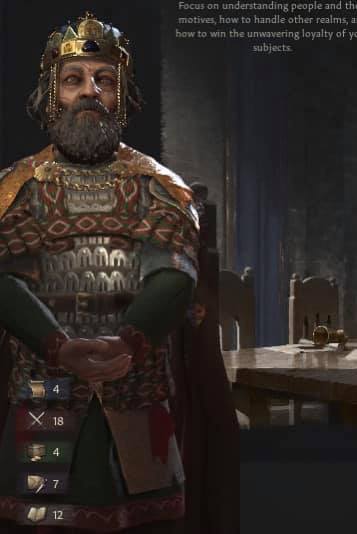
Theophano meanwhile could no longer handle Nikephoros’ abusive rule and finding out Nikephoros betrayed her by naming his younger brother Leo his heir instead of her sons, this was the last straw for her and this was when she reunited with her actual lover John Tzimiskes and the eunuch Basil Lekapenos to plot and kill Nikephoros. In chapter V, John Tzimiskes and his 3 conspirators are led into the palace by Theophano as an inside job where they kill Nikephoros himself who was sleeping on the floor on midnight of December 11, 969. The dead emperor’s head was shown to the palace guards in order to stop Leo Phokas from taking the throne, instead Leo was banished while John I Tzimiskes, Nikephoros’ and Leo’s nephew was crowned emperor. Personally, Nikephoros II is one of my favorite emperors as he has achieved a lot in terms of military victories but lacked the skills as a politician, though I think this novel also exaggerates his abusiveness as an emperor, but overall I see Nikephoros II as a badass emperor and one who was never really afraid to fight, though at the start he had a good nature that as a general he refused to usurp power but as emperor he was prone to be corrupted by power drastically turning him into a bloodthirsty people hating tyrant, therefore he remains one of Byzantium’s most notable hero to zero stories and 3 centuries later, Nikephoros’ story repeats itself with the emperor Michael VIII Palaiologos (r. 1261-1282) who at first was the hero that took back Constantinople from the Crusaders in 1261 but due to his diplomatic policies in submitting Byzantium to the pope’s authority and his harsh treatment to those who opposed it, he was hated by his people. As a fun fact, Nikephoros was said to be a vegetarian, was actually married and had son before though both his wife and son died, and though he and Theophano were a couple, their looks contrasted each other as Theophano was young and beautiful and Nikephoros was 30 years older than her and unattractive. The actor I see that could nail the performance of Nikephoros is Pedro Pascal (@pascalispunk), the Chilean-American actor who has been playing major roles in series like Narcos, Game of Thrones, and The Mandalorian wherein he played the lead character Din Djarin himself and his performance as Din Djarin as a tough and cold warrior surely shows that he can play the role of the tough and cold Emperor Nikephoros II, also his appearance in the novels very much resembles that of Pedro Pascal.
Alexander Dreymon as John I Tzimiskes– John Kourkouas Tzimiskes is Nikephoros Phokas’ nephew and a Byzantine general of Armenian descent born in 925; his nickname Tzimiskes is the Greek word for the Armenian word for either “red boot” or “short stature” and as the second meaning of his nickname suggests, he was described by contemporary sources as short in stature but well-built with reddish hair and blue eyes that made him attractive to women and true enough the novel depicts him this way except not entirely being entirely short in stature, fun fact he was said to have been a skilled archer and according to the contemporary historian in his time, John Tzimiskes could jump from one horse to another in full speed, strike an arrow into a small ring, and strike a leather ball into a cup without damaging it even when riding in full speed.
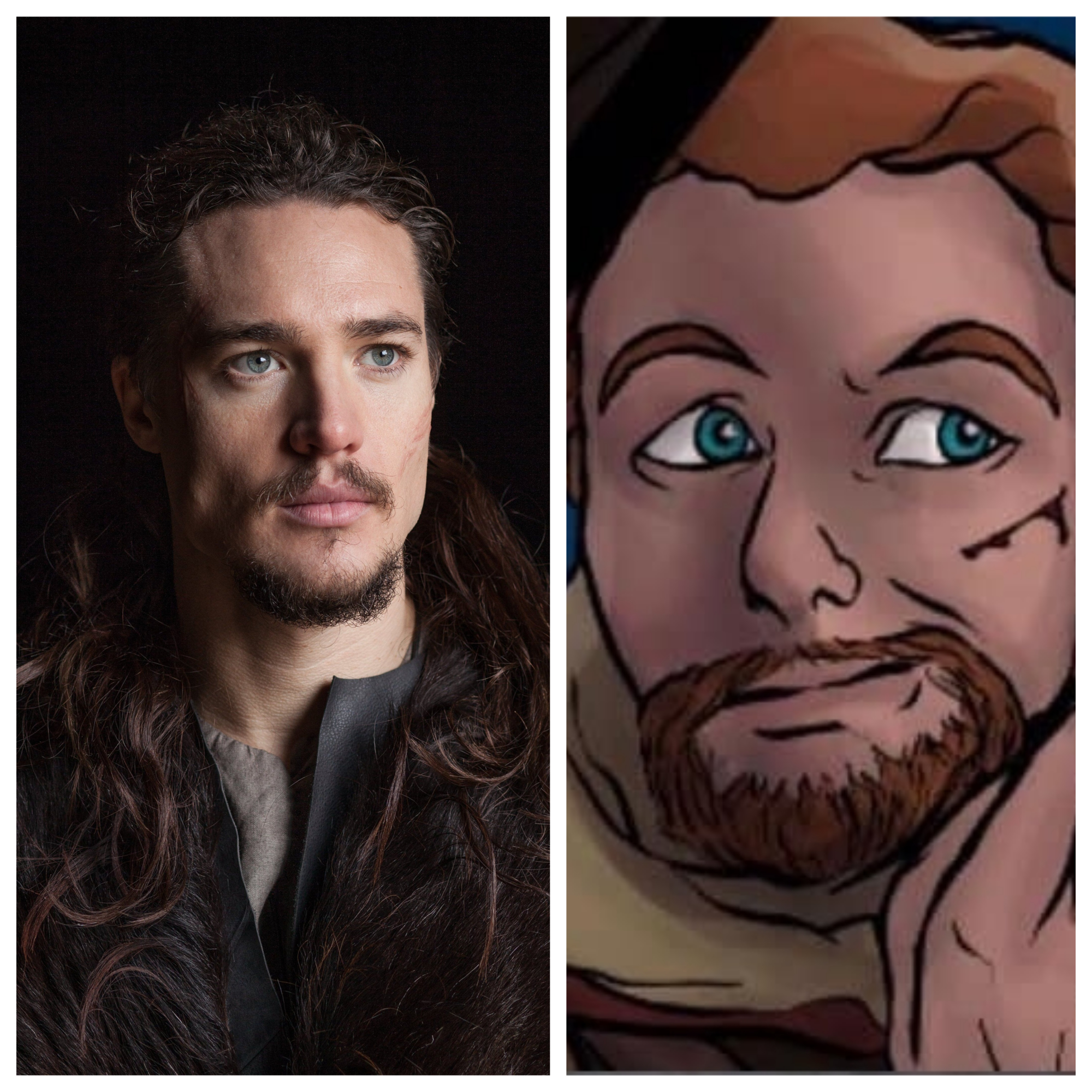
In the novel, John Tzimiskes is first introduced in chapter I set in 956 as a young and talented general, although the opening of chapter IV set in 963 starts by going back to 956 where apparently Theophano before being introduced as Romanos’ bride first met John and both fall in love with each other on first sight. In the earlier part of the novel, John mostly serves as his uncle Nikephoros’ sidekick but when Nikephoros returns to Constantinople in 959 to swear loyalty to the new emperor Romanos II, John stays behind in Eastern Asia Minor with his other uncle Leo Phokas to guard the frontier against the Arabs and while Nikephoros successfully reclaimed Crete in 961, John helped his uncle Leo manage to defeat an Arab invasion in Cappadocia. John Tzimiskes returns to the picture in 963 after the poisoning of Romanos II and Theophano’s banishment by the eunuch Joseph Bringas where John comes to her rescue and it is John that keeps Theophano safe before the arrival of Nikephoros who was still at the east. It was also John that informed his uncle’s troops of Bringas’ plot so John encouraged them to acclaim Nikephoros as emperor by raising him on a shield as was tradition, and this here is one of the most touching scenes in the novel for me. The following scene happens to be one of my best and most exciting ones too wherein Nikephoros Phokas stages his midnight coup taking over Constantinople and overthrowing Joseph Bringas wherein John Tzimiskes helps out too and so does their eunuch ally Basil Lekapenos. Before Nikephoros II was crowned emperor, Theophano not being married to Nikephoros yet had to reside away from the palace in what is today’s Fener district of Istanbul where her affair with John begins. During the reign of Nikephoros II, John still continued being a successful general stationed in the east but it soon revealed that he too wanted the throne, now I find this part showing a lack of character development to John as for most of the story he was a loyal general with no such ambitions, unless he has been hiding it all this time. It is soon revealed to Nikephoros that John was interested in the empress and wants to replace his uncle which leads to John being banished. For the rest of the part focusing on Nikephoros II as emperor, John does not appear until one of the emperor’s disgraced generals Michael Bourtzes conspires with Basil Lekapenos and Theophano to get John back from exile in some place in Asia Minor and back to Constantinople, John who had always been loyal to his uncle before was now intent on betraying him together with Theophano. The plot to kill Nikephoros meanwhile was already orchestrated and John Tzimiskes together with conspirators including Bourtzes, Anemas, and Bardas Skleros cross the Bosporus at night in a small boat, gets lifted up the walls of the Boukoleon Palace by a basket assisted by Theophano and later quietly storms the emperor’s room. When killing Nikephoros, John planned to do it in a quiet and organized way but Bourtzes shouts and immediately kills Nikephoros in his sleep leaving John to give the killing blow. Following Nikephoros II’s death, the throne was vacant and before the empire could fall into anarchy, John Tzimiskes complied with Patriarch Polyeuctus to banish Theophano to the Princes’ Islands in the Marmara Sea in order to be emperor to save the empire.
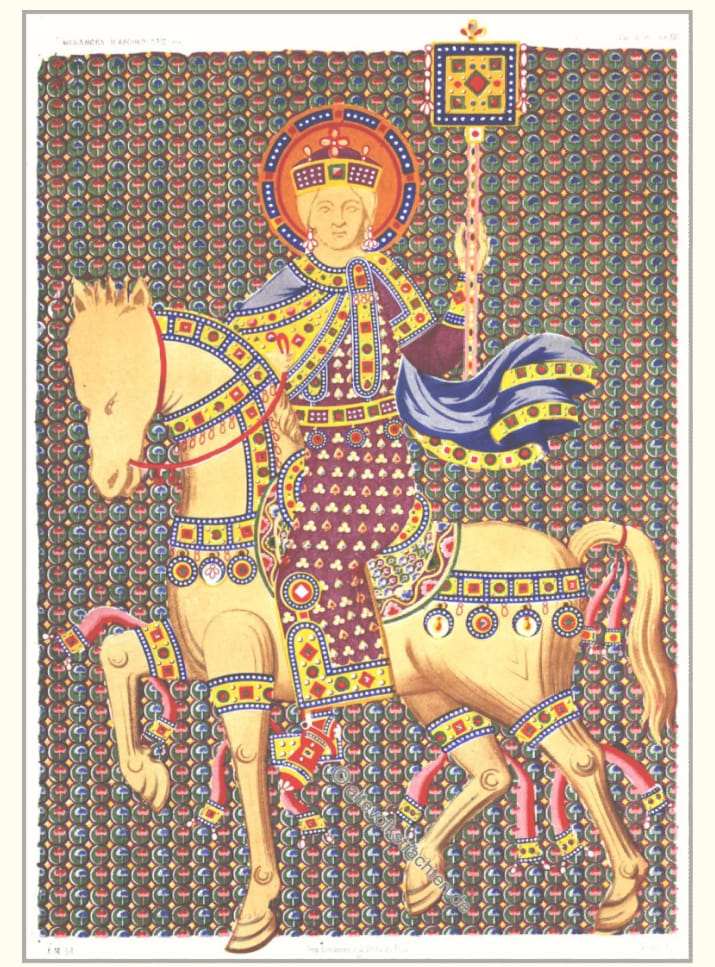
At the end, even if John I Tzimiskes betrayed Theophano to become emperor, he did not primarily intend to do that but only had to because of the patriarch’s terms and more importantly to save the empire from anarchy and true enough near the end of the story, John as the emperor visits Theophano in the Princes’ Islands once but nothing much is said anymore, therefore John is one of the only few characters here that somewhat resisted being corrupted by power unlike Nikephoros II and Romanos II- who will be up next. The reign of John I though is omitted in this novel as it could be something made for a follow up to the novel but his reign was just as eventful as that of his uncle’s except John I possessed better looks and charm and his good looks make him a perfect match for Theophano’s beauty. Where the story ends in 976, John I had already died passing the empire to Basil II who was now no longer a co-emperor but the senior one. Now the actor I chose for John Tzimiskes is Alexander Dreymon (@alexander.dreymon), the German actor who is the star of the Netflix series The Last Kingdom set in Anglo-Saxon England, apparently a century before this story’s setting and here he plays the protagonist Uthred of Babenberg and his portrayal of Uthred makes him fit for the role of John Tzimiskes as both are warrior roles and the way John appears in the novel looks similar to Alexander Dreymon’s Uthred in my opinion.
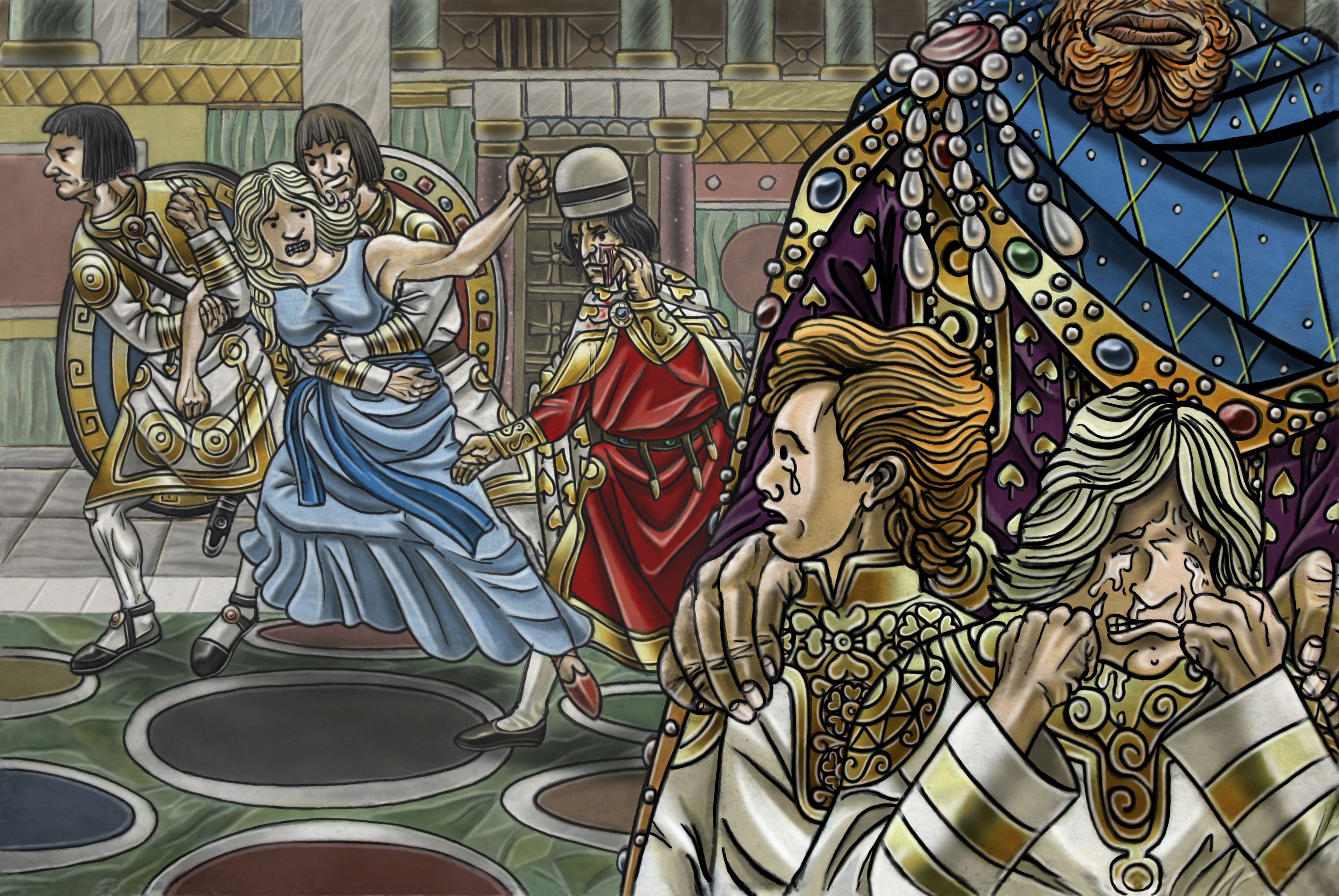
Tanner Buchanan as Romanos II– Theophano’s first husband, the emperor Romanos II in this novel is portrayed as an energetic, playful, and hedonistic young man as he is in real history who at the beginning is the only son and heir of the reigning emperor Constantine VII. Romanos Porphyrogennetos was born in 938 and was named after his maternal grandfather Emperor Romanos I Lekapenos, the senior emperor at his birth and when growing up was well trained by his father in civil and military administration but when grown up, Romanos decided to forget everything his father taught him and even forget all the struggles his father went through so that he could gain the throne, instead he just focused on indulging himself in all kinds of pleasures.
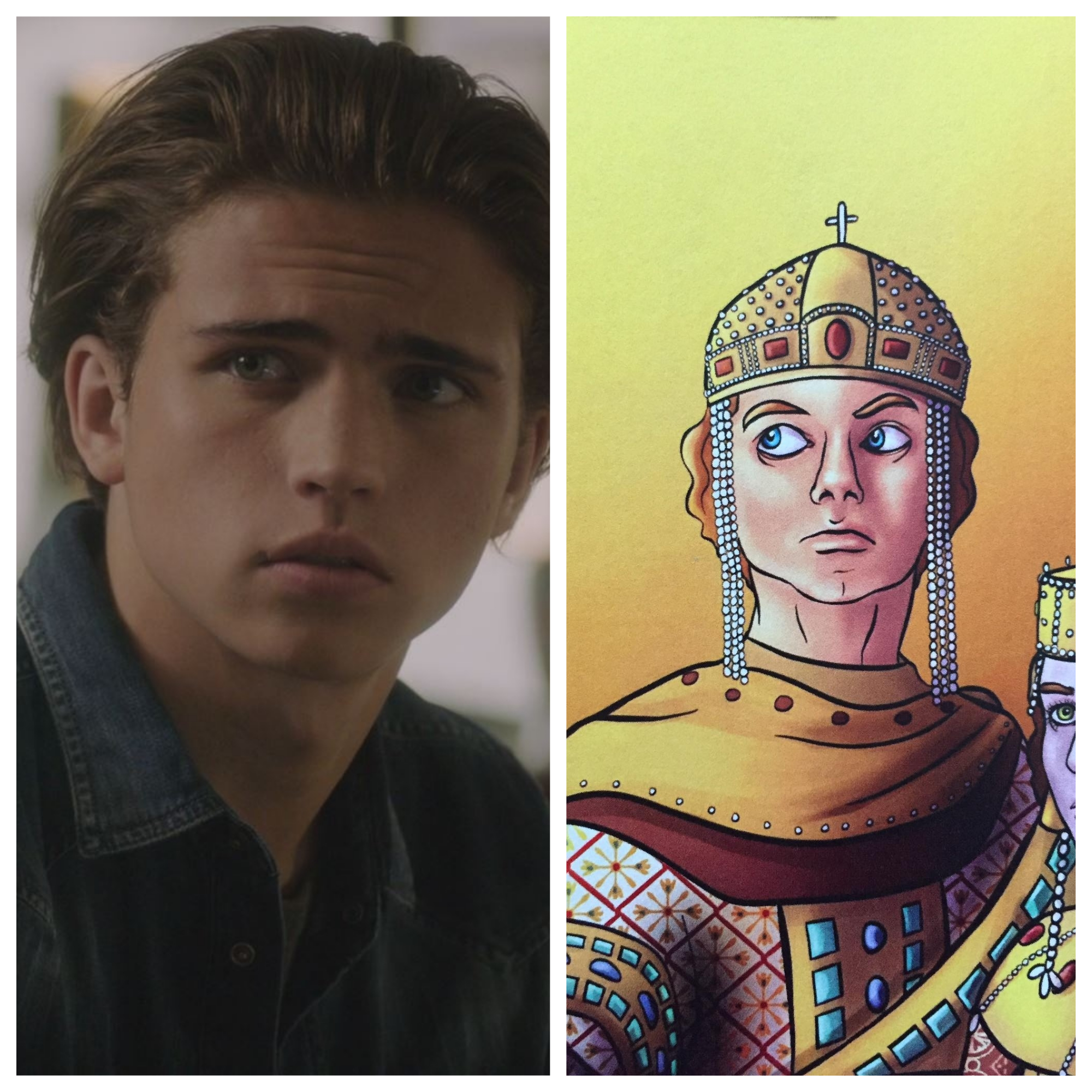
When Romanos is introduced he is already a pleasure loving young man who bumps into Theophano at her father’s high-end tavern where the eunuch and Romanos’ mentor Joseph Bringas arranges for their marriage and when it is time for him to choose his bride, he chooses that same commoner he met named Anastasia who is renamed Theophano. Romanos’ choice of Theophano as his wife greatly bothered his mother Empress Helena and father Emperor Constantine VII, though they still married anyway. While his mother grew more and more suspicious of Theophano, Romanos did not feel the same way and following Constantine VII’s sudden poisoning, Romanos succeeded him as the sole emperor at only 21 but as emperor he was pretty much quite useless and like he usually does, kept indulging in pleasures like drinking, hunting, playing polo (Tzykanion) and womanizing but at least he was able to have 3 children with Theophano. As the emperor, Romanos II supervised his parents’ burial and had the luck of being the ruler when Crete was retaken by Nikephoros Phokas and his army but he was too dependent on his eunuch mentor Joseph Bringas who poisoned his mind making him believe Theophano caused his parents’ deaths making them more and more distant with each other despite her still loving him.
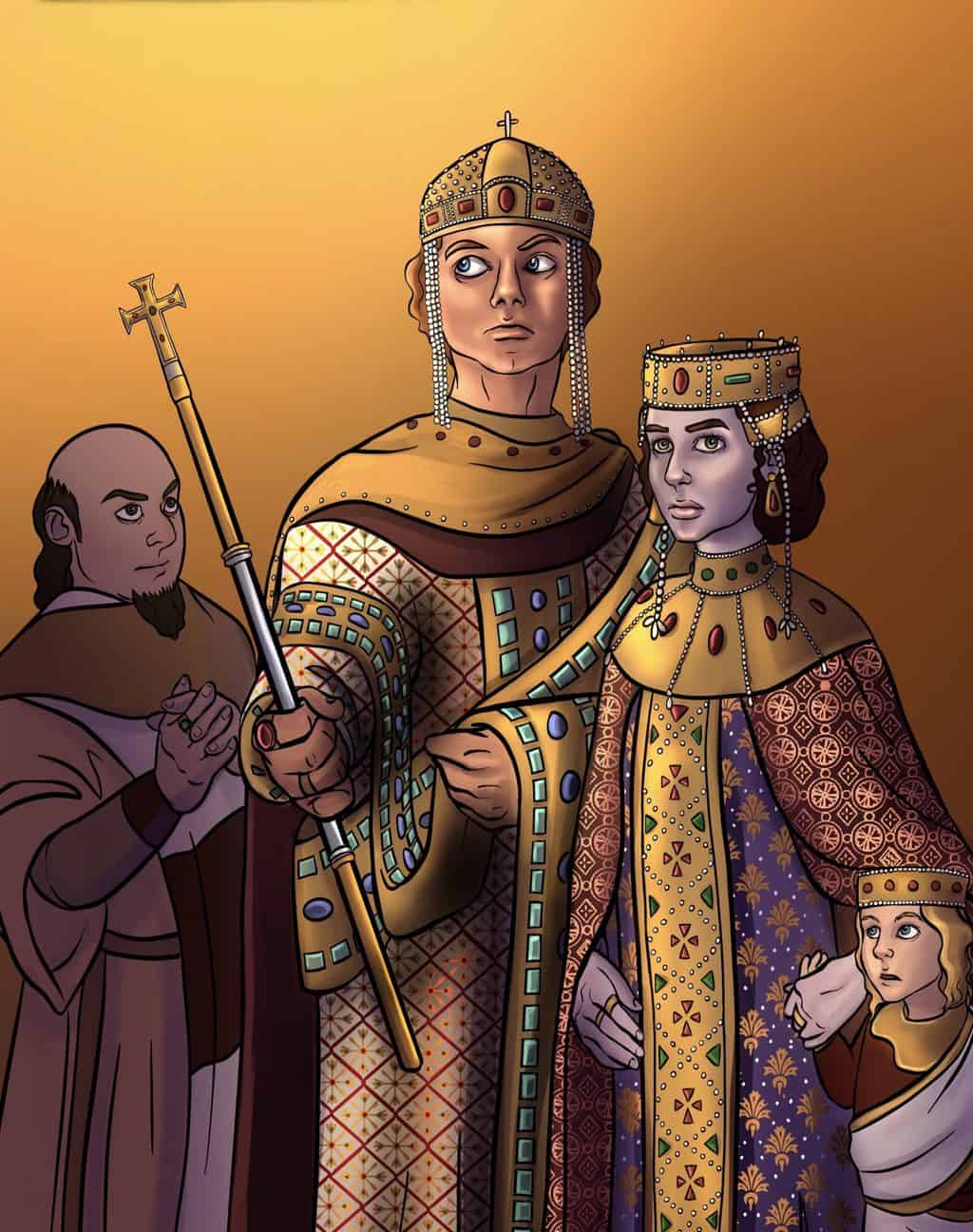
Romanos despite having a good heart in the earlier part of the story has a turn to the dark side when becoming emperor being so reliant on Joseph who was in fact evil and his marriage with Theophano which began out so romantically began failing in his reign when he started getting more and more irritated with her and being fed with lies about her by Joseph and an old general named Marianos Argyros, Romanos had plans to divorce her and marry someone of nobility being Argyros’ daughter though Theophano soon enough knew that Joseph’s power was growing stronger and as advised by her father, she had to do the tough choice and poison Romanos in order to get rid of Bringas so that her children will not remain puppets. The death scene of Romanos was only one of my favorite parts as it appears to be in a form of montage wherein Theophano tells the story of Romanos to her son Basil ironically while Romanos is slowly poisoned when drinking his wine, and here I can imagine some slow piano music in the background. Now the actor I chose for the role of Romanos II is the American actor Tanner Buchanan (@tannerbuchananoffcial) who appeared in the series Designated Survivor and is better known for playing Robby Keene in Netflix’s hit series Cobra Kai when reading the novel, when I saw Romanos’ character I was immediately reminded of Robby from Cobra Kai as both look very much alike and true enough the actor’s age now is the age Romanos was when he became emperor. In Cobra Kai, I can tell that out the young cast, Tanner Buchanan has the potential to play a Byzantine role as his acting is very natural and varied that he could play someone who is both playful, emotional, and angry like Romanos II and (spoiler alert!) for those who haven’t seen Cobra Kai’s season3, Robby has a character arc of turning bad and he could do the same thing with Romanos who also had this kind of arc in turning bad the moment he comes to power in which reading the novel also reminds me of Anakin Skywalker’s turn to the dark side in Star Wars Episode III: Revenge of the Sith.
Danny DeVito as Joseph Bringas– The primary villain of the first half novel is the manipulative and unapologetic court eunuch and senior palace official or Praepositus Joseph Bringas, a native of Paphlagonia who began his service to the imperial court under Constantine VII, though when the novel opens, Joseph is already quite old and has been the one that educated the imperial heir Romanos. Joseph and a younger court eunuch named Basil Lekapenos are first to notice Theophano (Anastasia) when she visits the palace overhearing her saying she wants to live there and be an empress which leads Joseph to hatch a plot in getting Theophano to be the heir’s wife as he manipulates Romanos to marrying her.
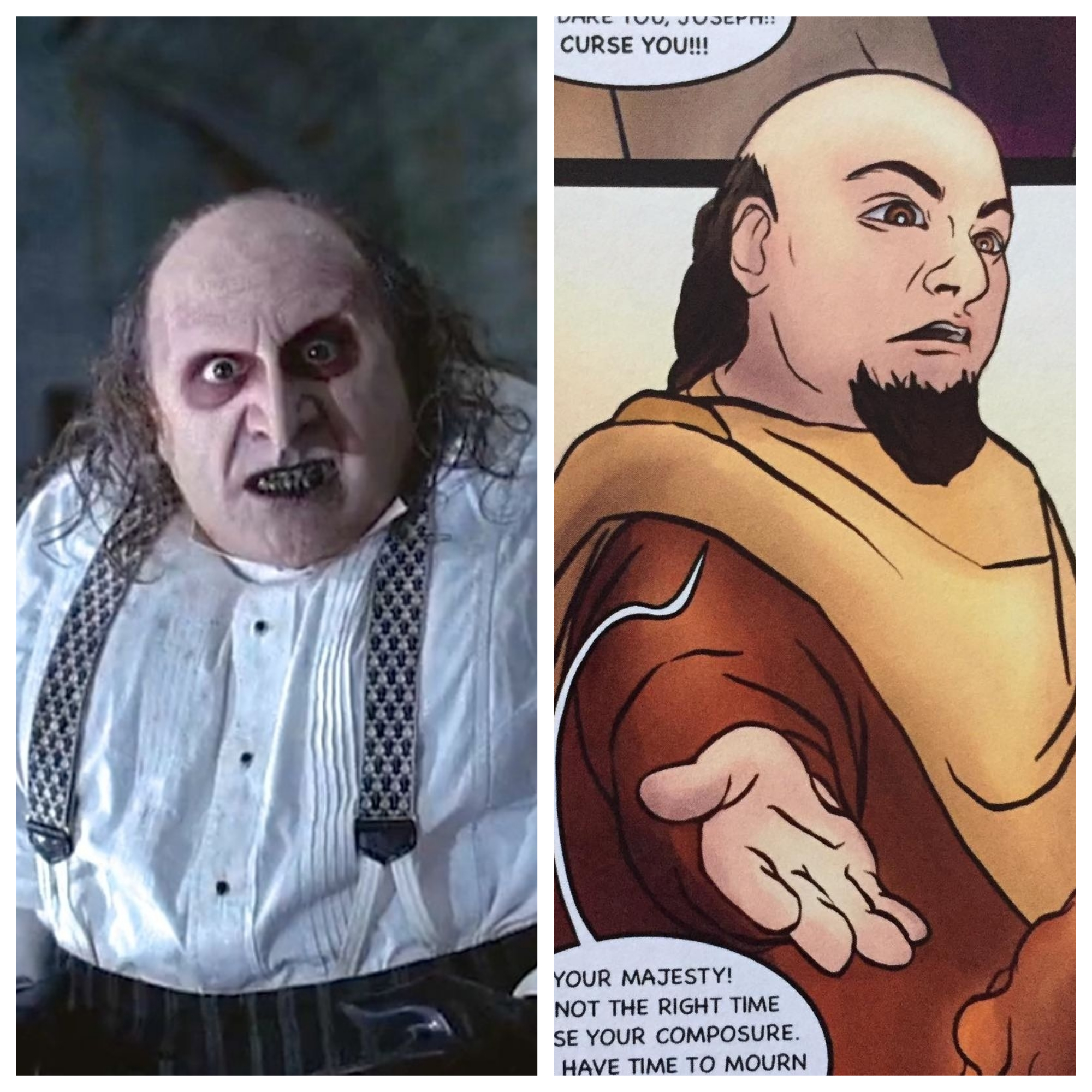
Though most of the imperial court opposes Romanos marrying Theophano who is a commoner, Joseph convinced them that it is a better choice since marrying someone from the nobility could create tension among the nobles, however Joseph really intended to just use Theophano as a means to get himself more power. At the earlier part of the novel, you can already see how powerful Joseph was that he could appoint a patriarch but could not take the throne for himself due to the fact that he was castrated and made into a eunuch though the empress Helena and Basil Lekapenos are suspicious of him thinking he wants throne though Romanos is oblivious to it thinking that Joseph at his older age would not have such ambitions. However, Joseph truly did have ambitions and would orchestrate his plot from behind the scenes doing just that as when hearing of a plot by the empress to poison Theophano, he revealed the plot to Theophano to use her in poisoning the emperor Constantine VII and as the emperor fell on the ground and died, Joseph already carried out his plan and falsely accused Empress Helena for doing that thus sending her to prison where she poisoned herself. With Romanos II as the new emperor, Joseph Bringas was now literally the power behind him being his puppet master and now since he had used Theophano to get himself into power, he now considers her useless and makes Romanos believe that Theophano caused his parent’s death which further ruins their marriage. When Romanos II was emperor, he spent most of his time indulging in pleasures while Joseph as a skilled statesman ran the administration but what was not mentioned in the novel was that Joseph was in fact a naval commander under Constantine VII. Following Romanos II’s poisoning by Theophano in March of 963, Joseph already seizes power as the regent for Theophano’s sons already knowing Theophano poisoned her husband which he has her thrown out of the palace for doing that but soon enough, she is rescued by John Tzimiskes who helps her stage a coup to overthrow Joseph and acclaim Nikephoros Phokas as emperor. The coup of Nikephoros seized Constantinople where Argyros was killed by Nikephoros and Joseph himself lost in a duel to Nikephoros and since he had lost, Joseph was thus banished to his homeland of Paphlagonia never to return again. With Joseph gone, Theophano gained her place back while her sons were released from Joseph’s control and now placed under the regency of Nikephoros; in the second half of the novel, Joseph no longer appears. When making my fan casting for this novel, it was a quite a challenge for me to cast Joseph Bringas although my friend Carlos said when seeing Joseph’s appearance that Danny DeVito could do well playing the role. Now Danny DeVito is an American actor who has had many years of acting experience, although despite being in his 70s whereas Joseph’s character was only in his 50s, DeVito could still nail the role of Joseph as Joseph’s appearance as bald and stocky man of short stature somewhat resembles DeVito’s appearance and based on DeVito’s performance as the villain in Batman Returns (1992) which was the Penguin, he can surely do the part of the villain Joseph Bringas well who in my opinion appears more to the type of villain that is vocal with a high voice and is highly manipulative and at most points creepy, and now if this novel were made into a film, DeVito could be doing a guest starring role the same way Keanu Reeves would do for Krateros.
Thure Lindhardt as Basil Lekapenos- Other than Joseph Bringas, the other lead eunuch of the story and secret antagonist in the second half is Basil Lekapenos, the illegitimate son of the former emperor Romanos I Lekapenos (r. 920-944) who was castrated and made into a eunuch. In contrast to Joseph Bringas’ vocal personality, Basil Lekapenos is more reserved and but true enough knows how to get things his way and in his case he does not care which side he’s on as long as it’s the side of the victor so he can continue staying in power.
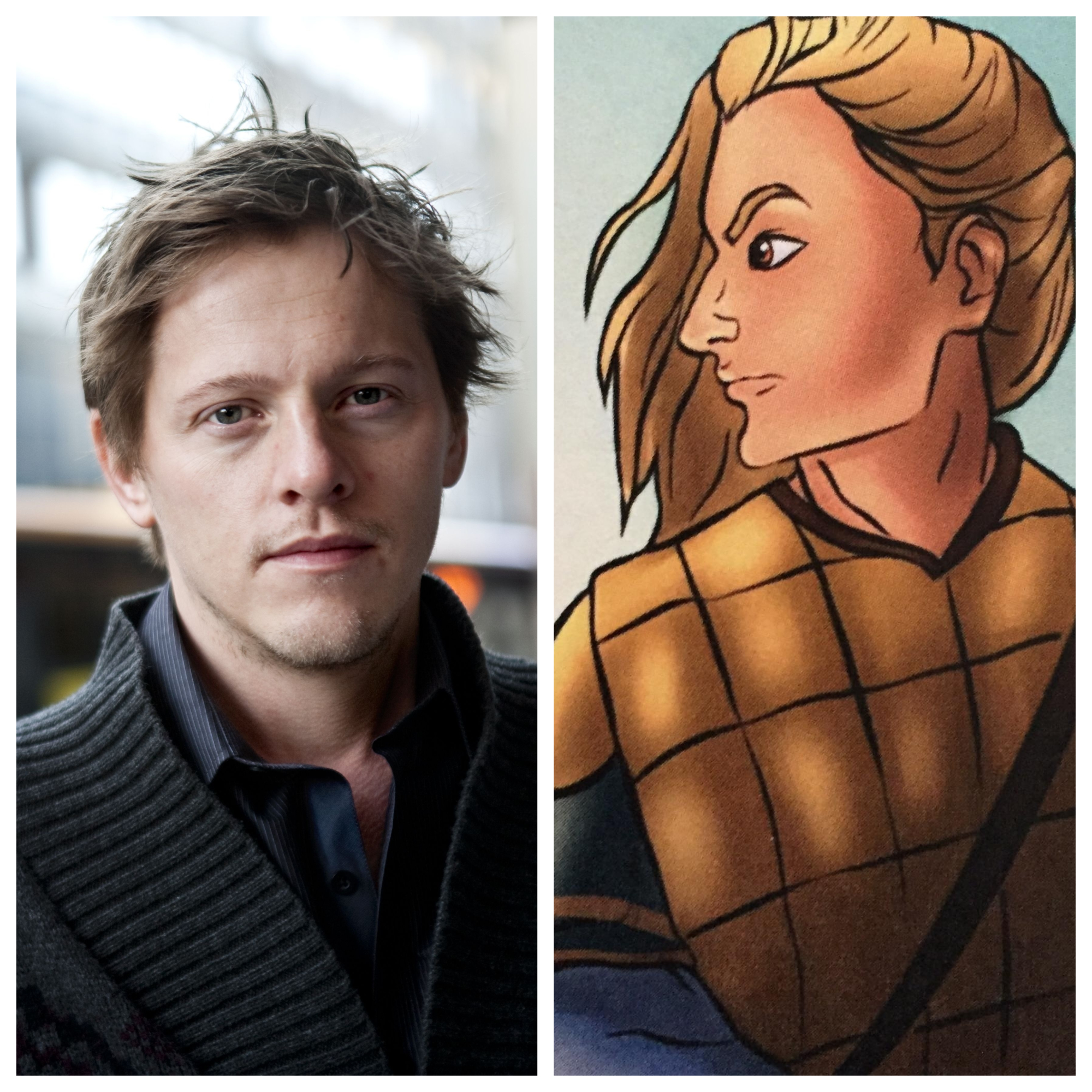
At the beginning of the novel, Basil together with Joseph first encounter Theophano (Anastasia) when she first visits the palace but when Theophano had already been married to Romanos, Basil together with his half-sister the empress Helena, his closest ally is suspicious of Joseph that he even advises Theophano not to trust Joseph. It is unknown when Basil began working at the imperial court but under his brother-in-law Constantine VII, he was the imperial chamberlain and as said in the contemporary chronicle of Theophanes Continuatus, he was dedicated and loyal to his emperor, true enough the novel depicts him such only because that was his way of retaining his position. At the time Constantine VII was poisoned in 959, Basil Lekapenos accompanied Queen Olga of the Kievan Rus’ who visited Constantinople back to her homeland but rushed back when hearing Romanos II was crowned as the new emperor. However, since Joseph Bringas accused Empress Helena of murdering her husband, he also ordered that Basil be banned from the palace for being an ally of the late empress. Since Romanos II favored Joseph Bringas over his uncle Basil, Basil was sidelined in Romanos II’s reign but in the novel appears to have joined Nikephoros Phokas’ expedition to reclaim Crete from the Arabs and since he and Joseph had become bitter he rivals, he uses the campaign to include Theophano’s father Krateros and the admiral Theophanes to join him in plotting to overthrow Joseph. When the expedition was over and victorious, Basil at least stayed in Constantinople but away from the palace and only after Romanos II was poisoned in 963 did Basil come back to the picture helping arrange the coup to overthrow Joseph Bringas, crown Nikephoros Phokas as emperor, and reinstate Theophano as empress. It is in second half of the novel where Basil Lekapenos has a bigger role wherein he was appointed by Emperor Nikephoros as the head of the Byzantine senate, equivalent to today’s Senate President. Basil later on however together with Theophano and John Tzimiskes are disillusioned with Nikephoros’ abusive rule so he too joins the plot to eliminate him and replace him with John. After Nikephoros’ assassination, it is now revealed that the true villain of the novel’s second half was not Nikephoros but Basil who was behind all the disorder in the city such as the rioting in the harbor and the stampede at the Hippodrome wherein he bribed the people convincing them Nikephoros planned to kill them all in order to make Nikephoros completely lose his popularity and now since John had won and was crowned emperor by Patriarch Polyeuctus in exchange for banishing Theophano, Basil taking the side of the victor betrayed Theophano too instead of pleading to let her stay causing an enraged Theophano to punch him in the face which actually happened in real history. Basil Lekapenos though is one of the novel’s few characters that survives all the way till the very end when Theophano returns to the palace and during the reign of Basil II, he still played an important role in the imperial court until he was banished in 985. Now Basil Lekapenos, here is seen as a very interesting person who did well in keeping his villainy concealed by playing out the entire time as a loyal official but deep inside he only wanted to be in power and would do anything he could to stay in it even if it meant betraying people he was close to like Nikephoros II and Theophano and what was interesting too about him was that he was also a patron of the arts.
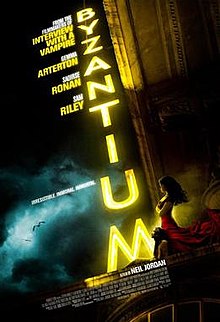
Now the actor I chose to cast for the role of Basil Lekapenos is the Danish actor Thure Lindhardt (@thurelindhardtactor), one of the bigger names in the Danish film industry who had played a large variety of roles in Danish and English language films which included a wide variety of period films and other popular ones including Angels and Demons, Fast and Furious 6, and ironically he was also in a 2012 vampire film called Byzantium, which however has nothing to do with the Byzantine Empire. For me, Thure Lindhardt is surely a great actor who can do a great job playing a villain, especially a more reserved one like Basil and Basil’s appearance in the novel as a tall and thin with long blonde hair- considering that Basil was said to be half Slavic- very much resembles that of the actor. Basil too ages as the novel progresses as he has been in it from beginning to end and even lives all the way deep into the reign of Theophano’s son Basil II.
Mark Hamill as Constantine VII Porphyrogennetos– The reigning emperor when the story begins is Constantine VII Porphyrogennetos, whose title means “born in the purple” which was in fact the title all Byzantine emperors who were born imperial heirs when their fathers were emperor used though he is the only one in history to officially use this title. When Constantine VII is introduced, he appears to be an all-powerful, well respected, and wise emperor in his 50s though behind his regal appearance is tragic back story.
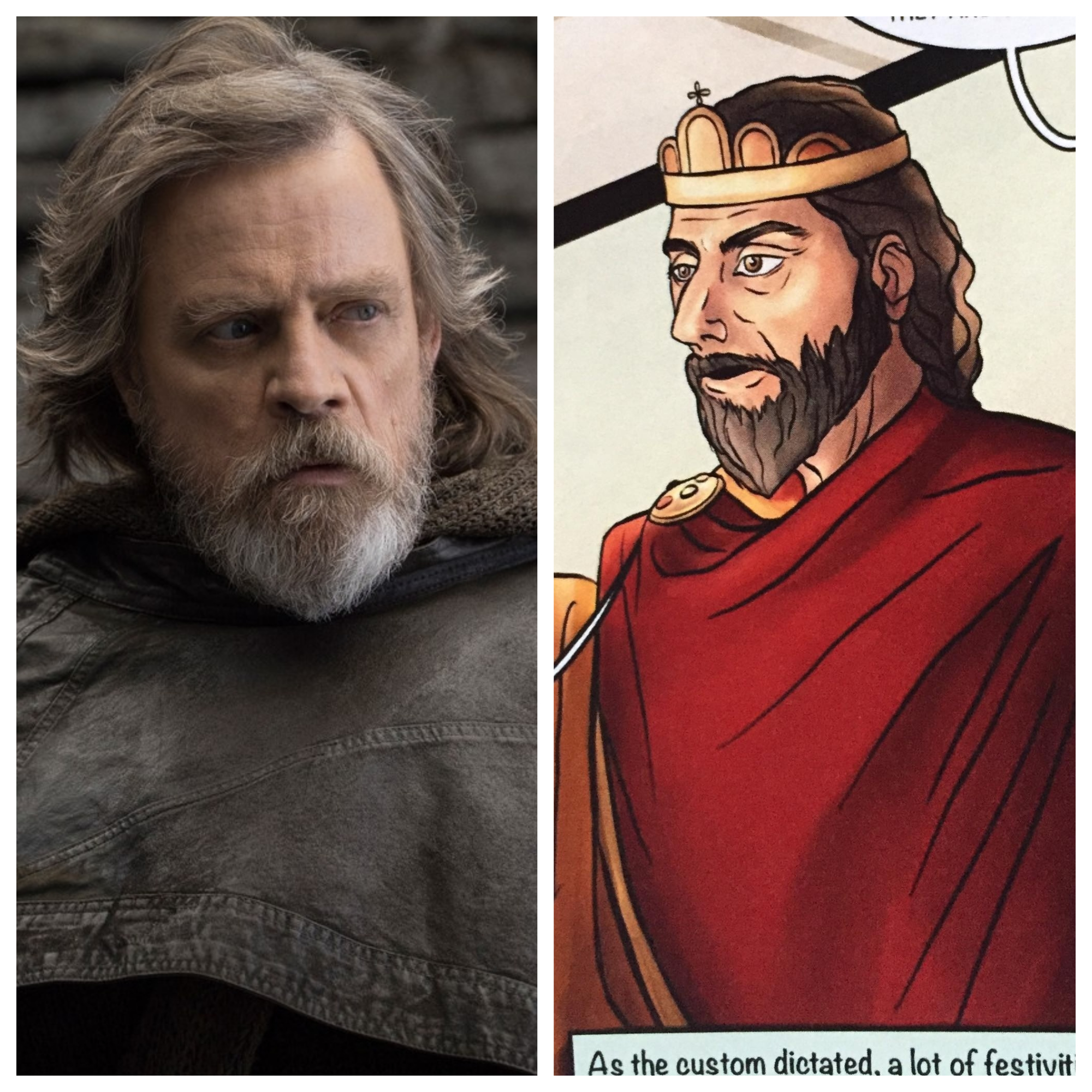
Constantine VII was born in 905 as a son of an illegal marriage between his father Emperor Leo VI the Wise and his 4th wife Zoe and Leo back in the day failed to produce sons in his 3 marriages and only in the 4th was he able to but it raised such controversy especially since he broke a law that he made which was to forbid multiple marriages. Leo VI died in 912 and was immediately succeeded by his younger brother Alexander who sidelined young Constantine though when Alexander died childless the following year, Constantine came to power as a young boy under a troubled regency shared between his mother and the patriarch which almost led to civil war tearing the empire apart if not for the Armenian admiral Romanos Lekapenos to step up and usurp power in 920 as a means to protect the young emperor. For 24 years, Constantine VII though marrying the usurper’s daughter Helena stayed behind in the shadows while his ambitious father-in-law Romanos I ruled as senior emperor making his 3 sons his co-emperors leaving Constantine as the least powerful of the 5 rulers despite him being the legitimate one but Romanos I’s luck did not last long as his eldest son died, and in 944 his 2 other sons overthrew and banished him but soon enough they too were banished in a coup led by Romanos I’s daughter Helena and sons Theophylact and Basil to make Constantine VII finally step in as the sole ruler in early 945. Constantine VII was a very interesting figure as he was not only a wise ruler but was someone particularly fixated with lavish court ceremonies as a way to assert the dominance of the Byzantine Empire to all other powers around the world that ambassadors who came to his court were all in awe seeing him in a throne that was elevated up into the air by a mechanism, a golden tree beside him with singing birds, and golden lions that flanked him that produced a roar.
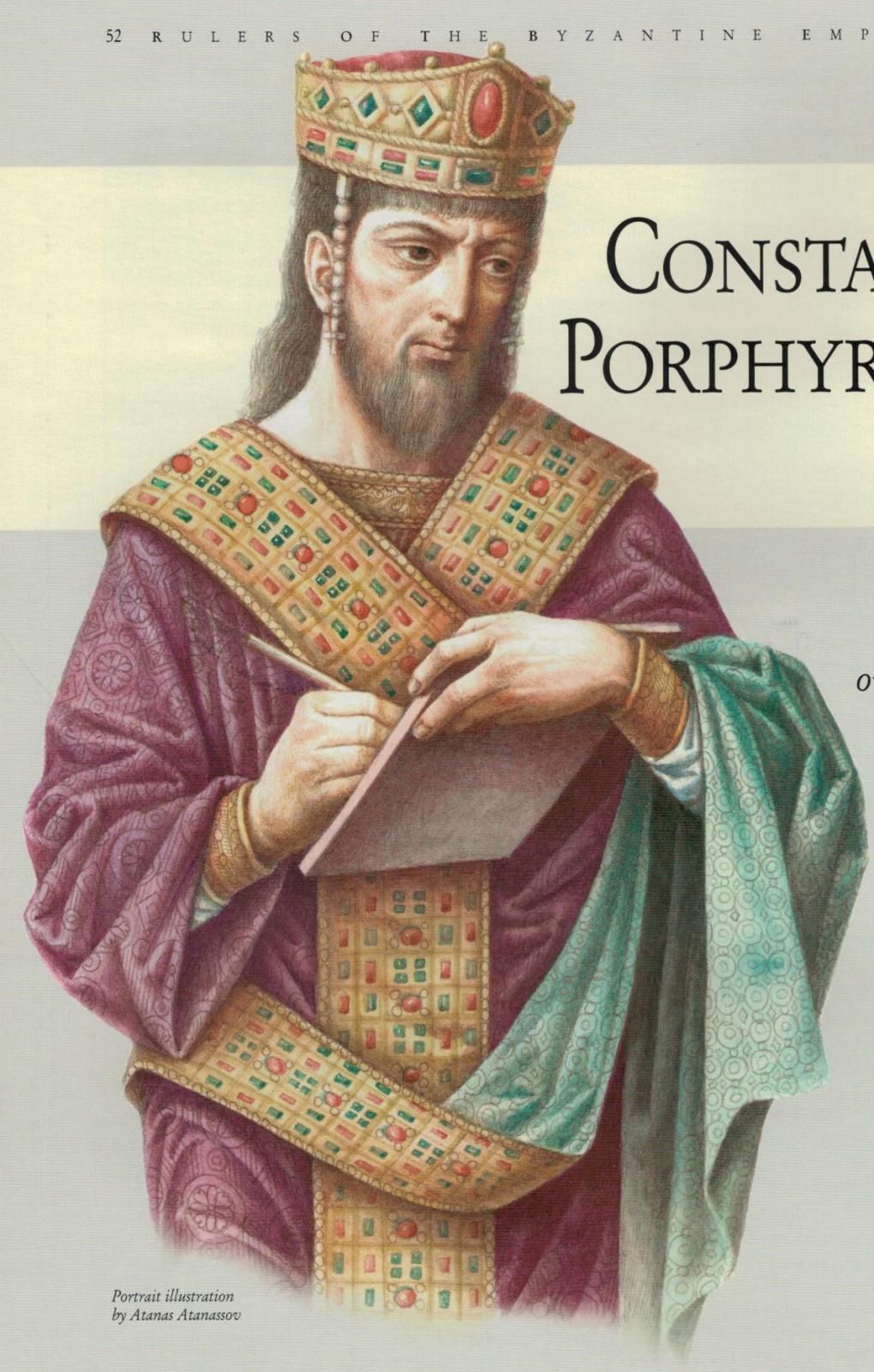
Though he appeared so powerful, he was not particularly interested in state administration and military campaigns as he was able to delegate them to his wife Helena, court eunuch officials Joseph Bringas and Basil Lekapenos, and generals like Nikephoros Phokas and his brother Leo Phokas. Constantine VII was not particularly interested in this because of his traumatic experiences as child undergoing the court intrigues that almost cost him his life if not for overthrowing his father-in-law and brother-in-laws being overthrown giving some kind of PTSD but despite this, his experiences with this kind of politics gave him vast knowledge of the complexities of the Byzantine court and its government system that he wrote 3 books about it for his son and heir Romanos II which remain valuable sources of Byzantine court administration up to this day. When Romanos II chose the commoner Theophano (Anastasia) as his wife, Constantine was unhappy with his son’s decision reminding him that he did marry Empress Helena out of love but to secure an alliance. Constantine still remained alive to see Theophano as his daughter-in-law and give birth to grandsons but in one night in 959, he was reluctantly poisoned by Theophano who gave him a poisoned wine glass thinking he was trying to poison her as revealed to her by Joseph Bringas and right after Constantine’s death, Joseph got his way and accused Empress Helena for poisoning him. A fun fact is that Constantine VII was a true Renaissance man as not only was he a ruler but a writer, painter, sculptor, and diplomat who was skilled in receiving foreign guests and certainly he is one of my favorite Byzantine emperors as he is a rare type for being a true neutral cool headed wise ruler rather than the usually energetic and hot tempered or cowardly Byzantine emperors.
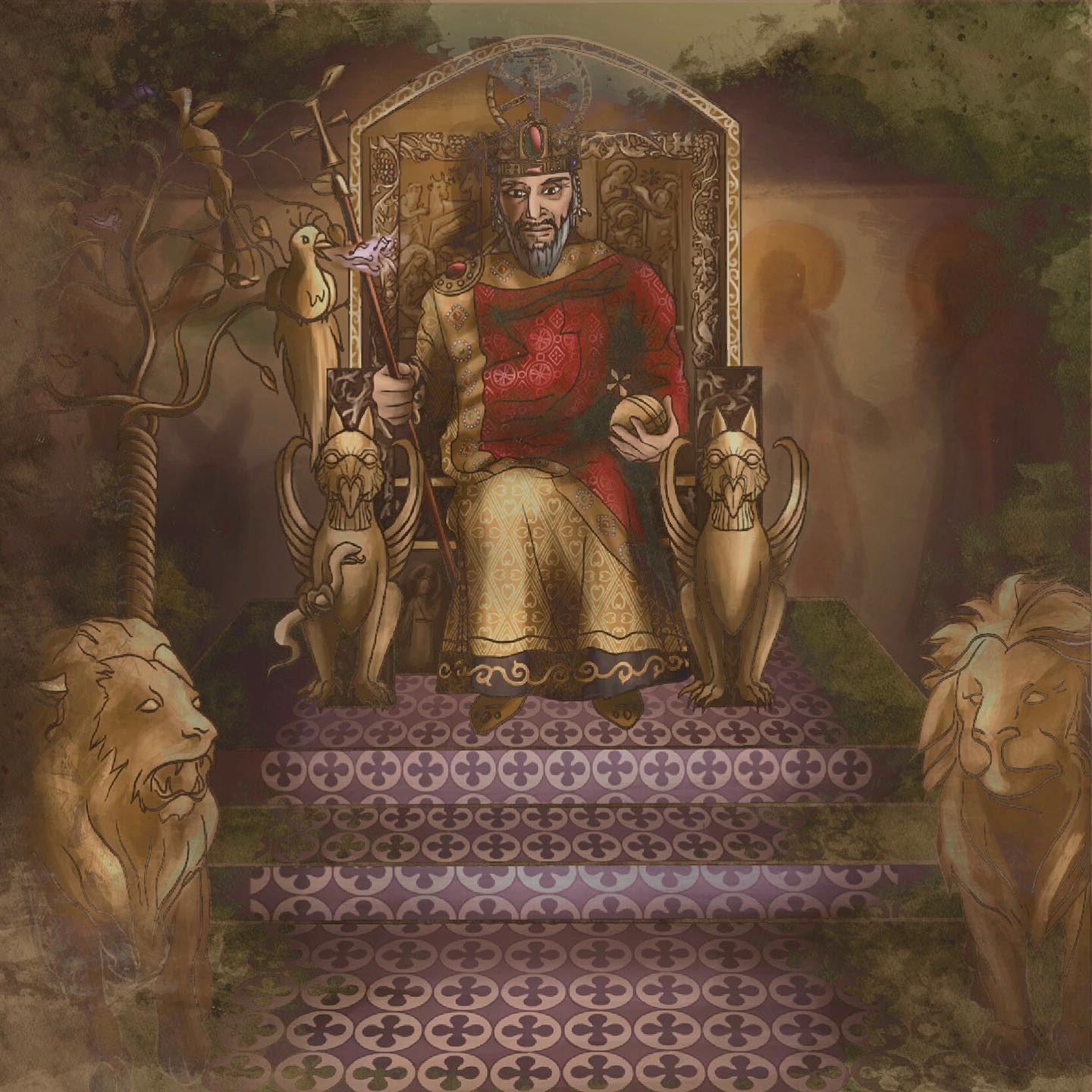
Another interesting topic for debate here is that Constantine VII and his descendants including Romanos II and his son Basil II could possibly be not from the Macedonian Dynasty but the previous Amorian Dynasty since Constantine’s father Leo VI was rumored to have been not the son of the Macedonian Dynasty’s founder Basil I the Macedonian but the illegitimate son of Michael III, the emperor Basil I killed, though Constantine still believed Basil I was his grandfather, though Leo did not think so. The actor I see portraying Constantine VII is no other than Mark Hamill himself (@hamillhimself) who is best remembered for playing Luke Skywalker in the Star Wars movies and his portrayal of Luke in Episode VIII: The Last Jedi (2017) and quick appearance in Episode IX: The Rise of Skywalker (2019) gave me a clear image on how Constantine should be portrayed like as Luke in these movies appeared as an old man full of trauma from past events the way Constantine is seen in this novel however Constantine appears to be friendly and warm rather than Luke who seemed mostly cold but nevertheless I think Mark Hamill can do a great job playing an emperor even though his age now is something like 10 years older than Constantine who was only in his 50s in the novel despite looking a bit older, though this could possibly suggest that the hardships he faced made him age quicker. Constantine’s appearance in the novel too kind of resembles Mark Hamill’s Luke Skywalker in the sequel trilogy.
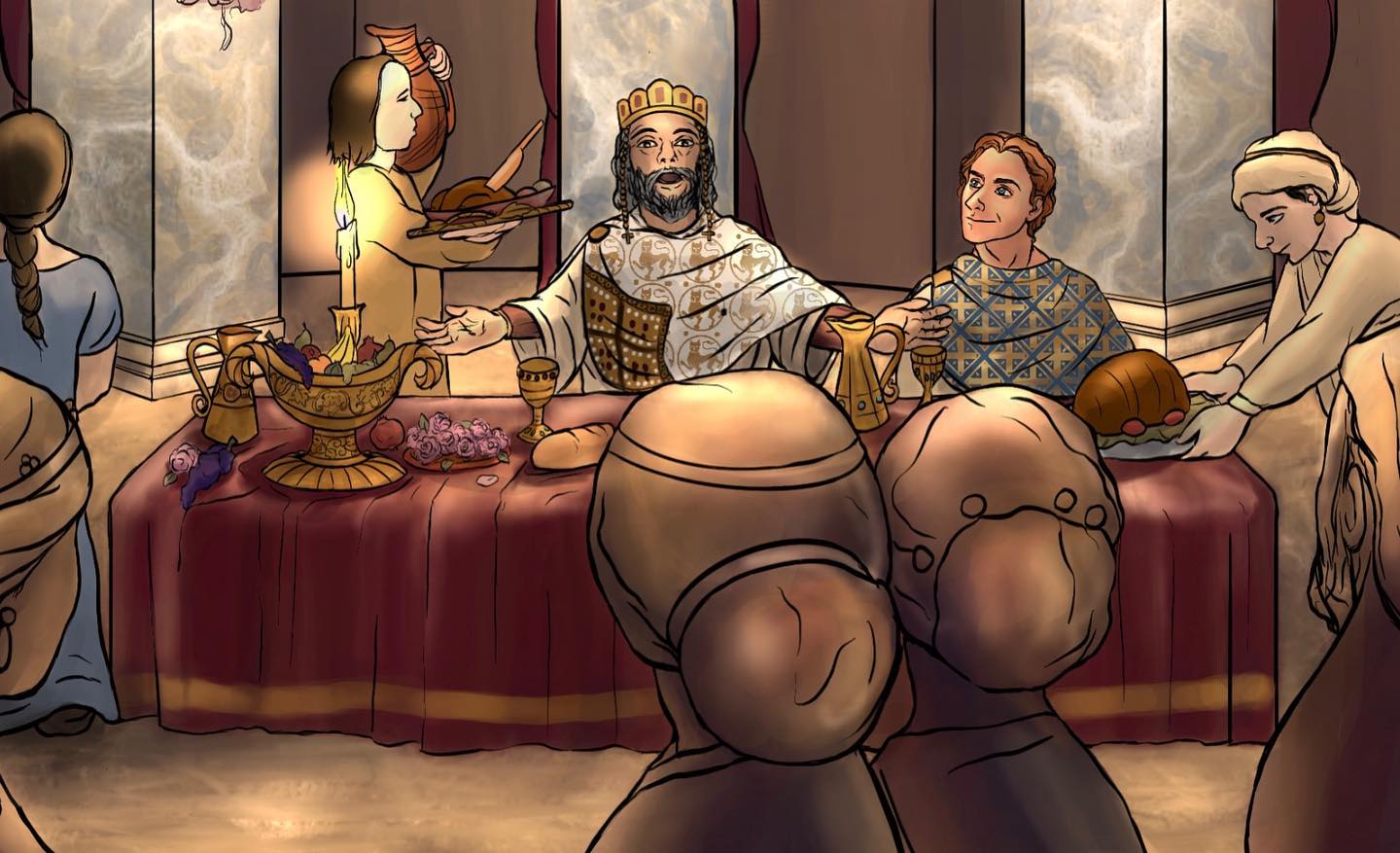
Emily Watson as Helena Lekapene– The empress or Augusta when the story opens is Helena Lekapene, the wife of Emperor Constantine VII and daughter of the former emperor Romanos I Lekapenos and when she is introduced, it is her that is more active in running the state administration together with her younger half-brother the eunuch Basil Lekapenos as Constantine remains too busy in scholarly pursuits making Helena mock him for that believing he is better off as a monk.
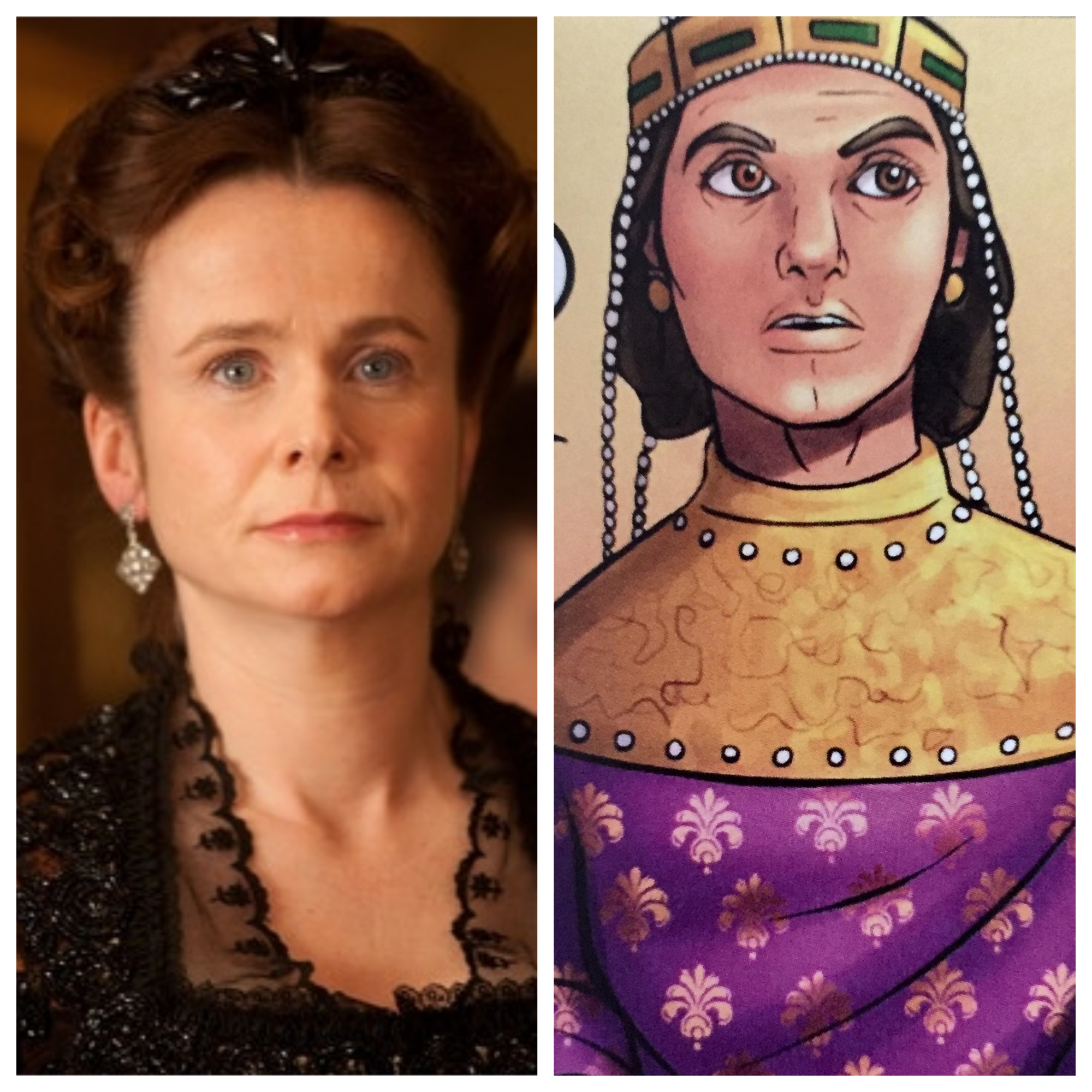
The moment Theophano (Anastasia) is introduced to the court, Helena already starts feeling suspicious of her especially since Theophano is a commoner in origin though Helena pretends to act at least tolerant towards Theophano despite showing no respect for her privacy that she even goes as har as touching Theophano’s body roughly as she is bathing. What concerns Helena most about Theophano is her untamable behavior in acting so casual in talking with people above her rank though when Theophano gives birth to 2 sons, she at least tries to give Theophano a chance but when Theophano exhibits her natural independent behavior again when trying to talk casually with the Queen of the Kievan Rus’ Olga, this was the last straw for Helena who now attempts to get rid of Theophano who on the other hand was revealed of the plot causing her to reluctantly poison Constantine VII during a feast wherein afterwards, Joseph Bringas accuses Helena of the poisoning and has her thrown in prison where she is forced to commit suicide by drinking poison, later she and her husband Constantine appear as ghosts haunting Theophano. Now the novel depicts Empress Helena Lekapene as uptight, cold hearted, and tough towards her husband, son, and daughter-in-law though the historical sources do not really mention much about her personality except that she was a strong woman running the administration, though the History of the Byzantine Empire by Radi Dikici mentions that Helena was good in nature and got along well with her husband ever since they were married as children. Though Helena seems most of the time unlikeable when reading the novel, you would later at least feel bad for her when she was falsely accused and put in prison- which here was an old bathhouse. Casting Helena meanwhile was difficult task as I had a hard time finding an actress who like the character is in her 50s but still attractive so eventually, the option I chose was the English actress Emily Watson who fits the character’s description and true enough she is a talented actress who has appeared several times in stage and films and has great experience in period films such as War Horse (2011) and Anna Karenina (2012).
Henry Thomas as Theophanes– One of the first characters introduced in the novel is the naval officer Theophanes who later becomes an admiral and best friend of Theophano’s father Krateros and a father figure to Theophano (Anastasia) who in facts accompanies her in her first visit to the Great Palace where she is discovered. For most of the story’s first half, Theophanes served as a high-ranking court official as well as an admiral and remained always close to Krateros.
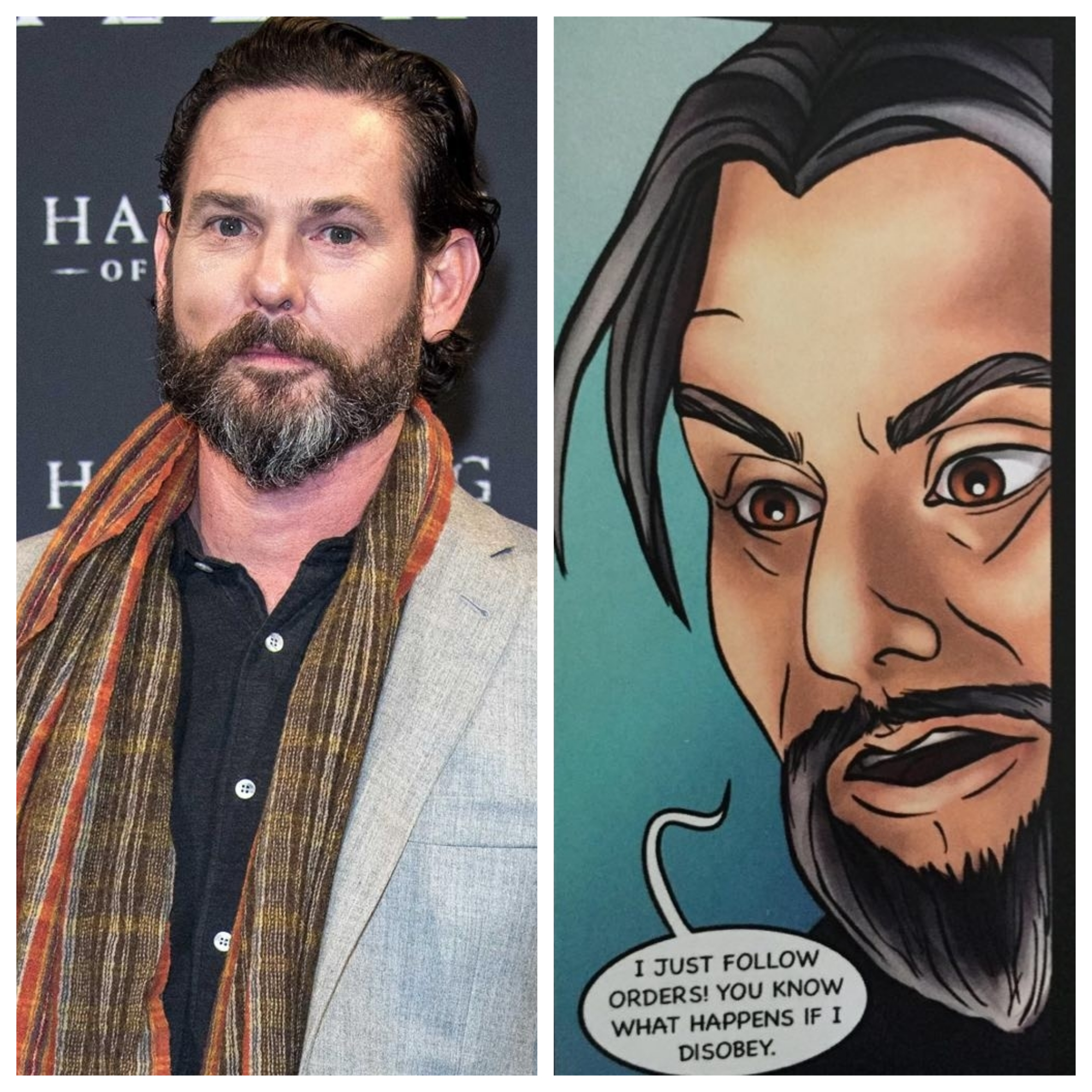
After Constantine VII was poisoned in 959, Theophanes despite being suspicious of the powerful eunuch Joseph Bringas acted loyal to him and forbade Joseph’s eunuch rival Basil Lekapenos from entering the palace and in 961, Romanos II as the emperor was manipulated by Joseph to send Theophanes as well as Krateros and Basil to the perilous expedition of Crete as a way to send them to their deaths as Joseph feared their growing influence too though Theophanes helped lead the troops to victory in Crete. Theophanes appears again during the coup of Nikephoros in 963 where joins the skirmish against Joseph’s troops but is killed in the fighting by a spear and apparently, at the end of the story, Basil Lekapenos who turns out to be traitor reveals he let Theophanes die in the skirmish.
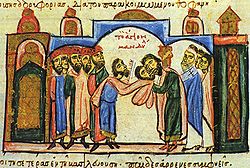
When reading the novel, I always came to question that if whether Theophanes was a historical character or fictional and when asking the creators, I was informed that Theophanes was actually a real person who was a naval commander and possibly a eunuch during the reign of Romanos I Lekapenos in which the story opens in and during Romanos I’s reign in one of the story’s first scenes, Theophanes fighting the Kievan Rus’ fleet was real although after this battle in 941, Theophanes disappears from the historical record as he must have been exiled after Romanos I was deposed by his sons in 944. The creators though chose to make Theophanes have a bigger role by making him live longer and be close to Theophano which was purely fictional. Since Theophanes plays quite a major role in the first half of the story, I chose to cast him with quite a well-known actor but not someone too famous so I chose the American actor Henry Thomas (@hjthomasjr) best known for playing Elliot in E.T. (1982) to play him since he looks similar to Theophanes’ character in the novel and due to his performance lately in the 2020 Haunting of Bly Manor series as uncle Henry playing a British character, he looks like he can do a good job playing Theophanes who like uncle Henry is a father figure.
Diego Luna as Leo Phokas– Accompanying Nikephoros Phokas for the most part of the story was his younger brother and sidekick Leo Phokas the Younger who in reality is either 3-8 years younger than Nikephoros though the novel depicts him looking a full 12-15 years younger though just like his older brother, Leo was a skilled general who had scored a number victories against the Arabs in the east since the reign of Constantine VII (945-959).
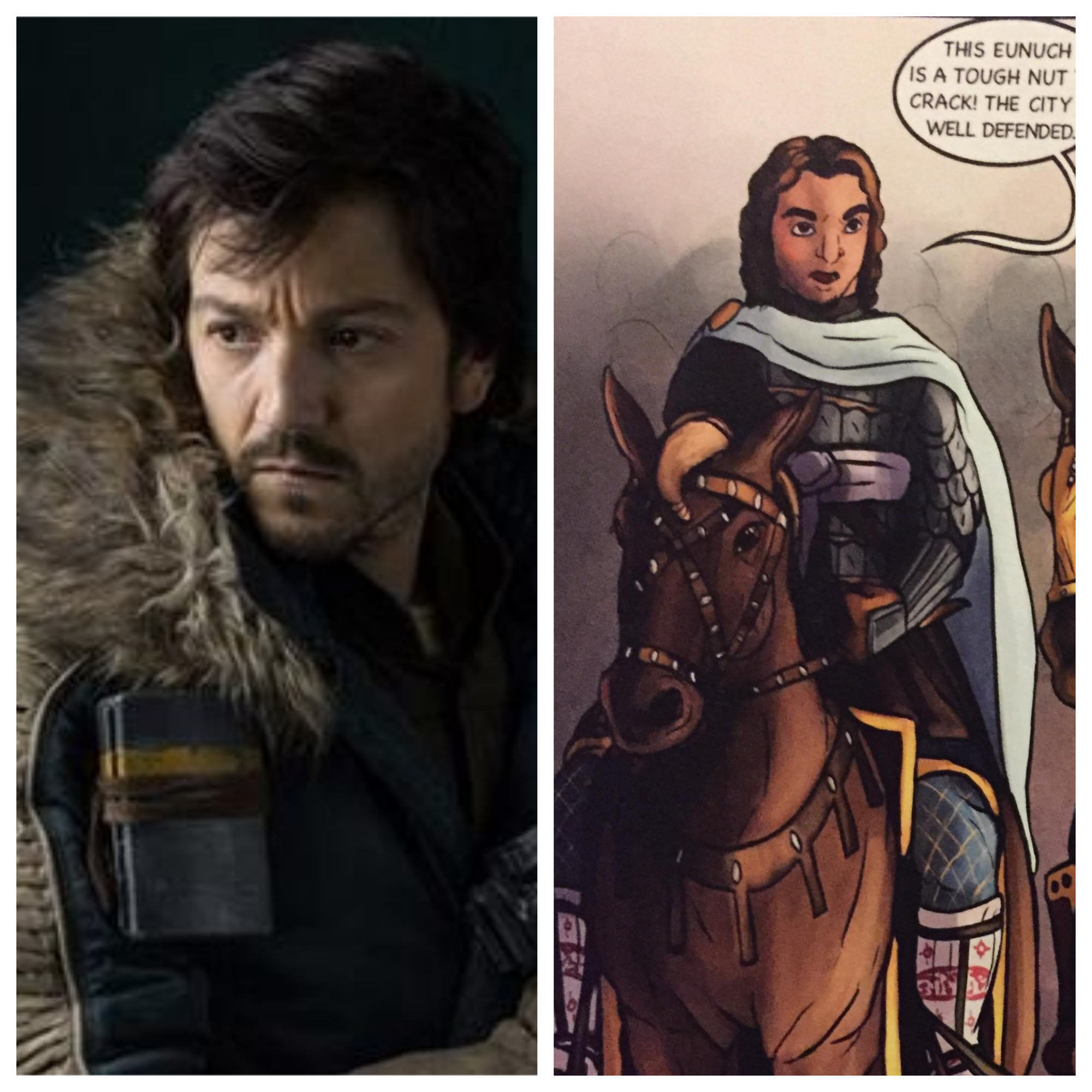
Leo’s first appearance is in chapter II is when campaigning in the east against the Arabs with his brother Nikephoros and nephew John Tzimiskes after Constantine VII’s death in 959 and during the entire reign of Romanos II (959-963), Leo was seen still campaigning against the Arabs in the east where he destroyed an Arab army by throwing stones at them from above a ridge and later is rejoined by Nikephoros after the latter’s conquest of Crete in 961. Together with John Tzimiskes, Leo has the army acclaim Nikephoros as emperor in 963 and takes part in his brother’s successful coup. When Nikephoros II is crowned emperor, Leo still remained always with his brother as his top general but also appointed as the minister of the treasury and Kouropalates or top manager of the palace. Unlike Nikephoros who was a man of big personality, Leo was the quieter version of his older brother though in my opinion, the novel did not do that well in showing his character development as when Leo was introduced he did not tolerate corruption in the government but in his brother’s reign he seemed to be fine with all the harsh taxation policies, and also he starts out as a quiet character and all of a sudden at the second half when his brother is the emperor, he instantly turns into a hot-headed and arrogant bully especially towards Theophano that he even openly expresses castrating her children in front of her, but I could also see that his personality drastically changed since Nikephoros named him his heir making him ever more arrogant. At the climax when Nikephoros is killed, Leo rushes to protect him but instead finds out his brother is dead; thus, Leo was banished by the new emperor John I Tzimiskes though historically, Leo rebelled against John in 970 and again in 971 where he failed and was blinded. My casting choice for Leo is the Mexican actor Diego Luna (@diegoluna) who is remembered for playing Cassian Andor in Rogue One: A Star Wars Story (2016) and I think he could do a great job in playing Pedro Pascal’s Nikephoros Phokas’ younger brother as both somewhat look alike while Diego Luna is someone I think that can play a variety of roles with such emotion.
Lars Mikkelsen as Patriarch Polyeuctus– One of the only characters in the story to have such strong morals in this immoral time was the Patriarch of Constantinople Polyeuctus who was appointed to the Patriarchate of Constantinople in 956 as replacing the former patriarch Theophylact Lekapenos who died from a riding accident and as the head of the Church, Polyeuctus was a simple but pious monk but a no-nonsense Church leader in contrast to his predecessor who ignored his religious duties and indulged in pleasures.
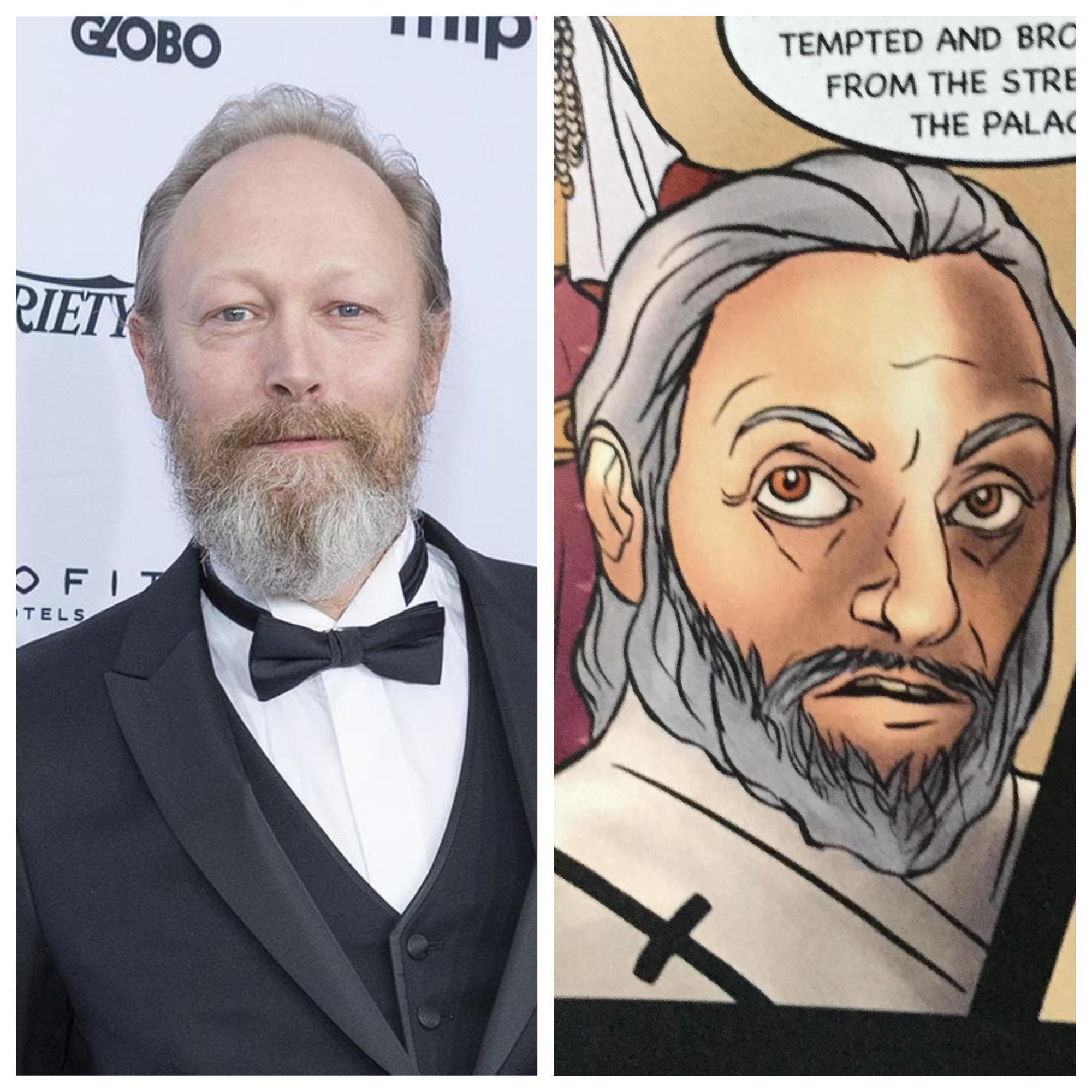
Polyeuctus was appointed to the Patriarchate by Joseph Bringas and was patriarch throughout the entire story in the reigns of Constantine VII, Romanos II, Nikephoros II, and John I and throughout the entire story he distrusts Theophano seeing her beauty as sinful and her independent behavior as unthinkable, yet he could speak about her low birth without getting punished as he was the head of the Church. Polyectus here was shown as the one who baptized Queen Olga of the Kievan Rus and sent missionaries to convert the people there, afterwards he presided over the funeral of Constantine VII and Empress Helena and later in 963 over the funeral of Romanos II where he orders that Theophano should only mourn for her husband when she asks him to help her plot against Joseph Bringas. In Nikephoros’ coup, Polyeuctus remained neutral but had later been the one to marry Nikephoros and Theophano and crown Nikephoros as emperor but as Nikephoros’ reign progressed, Polyeuctus too began opposing Nikephoros believing the latter lost his mind and did the unthinkable demanding that the Church be stripped of their tax exemption privileges and that every soldier slain by a Muslim must be made a saint. Polyeuctus however did not approve of deposing Nikephoros by murdering him making him refuse to crown John Tzimiskes unless John made up for his murder by banishing Theophano as Polyeuctus knew Theophano who he always distrusted had a part in it; this scene then is his last appearance though in real history, he died shortly after in 970. The actor I chose to play Patriarch Polyeuctus is the Danish actor Lars Mikkelsen, older brother of the famous Danish actor Mads Mikkelsen as his serious appearance very much resembles that of the patriarch as he is depicted in the novel.
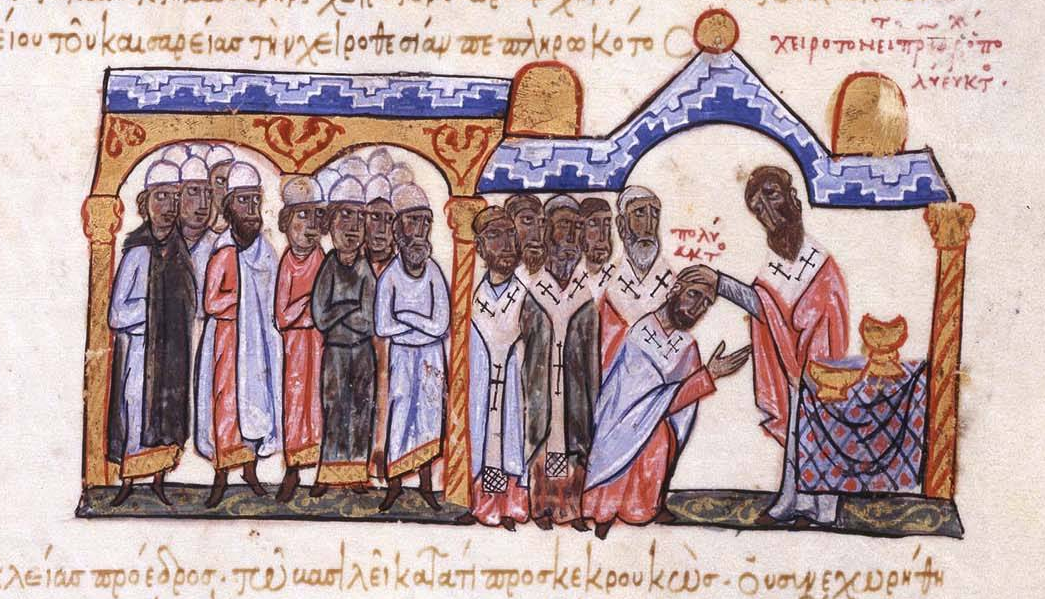
Thomas Ian Griffith as Marianos Argyros– One of Byzantium’s most famous generals of the 10th century is Marianos Argyros who appears briefly in the novel during the reign of Romanos II (959-963) as a strong supporter of his and Joseph Bringas.
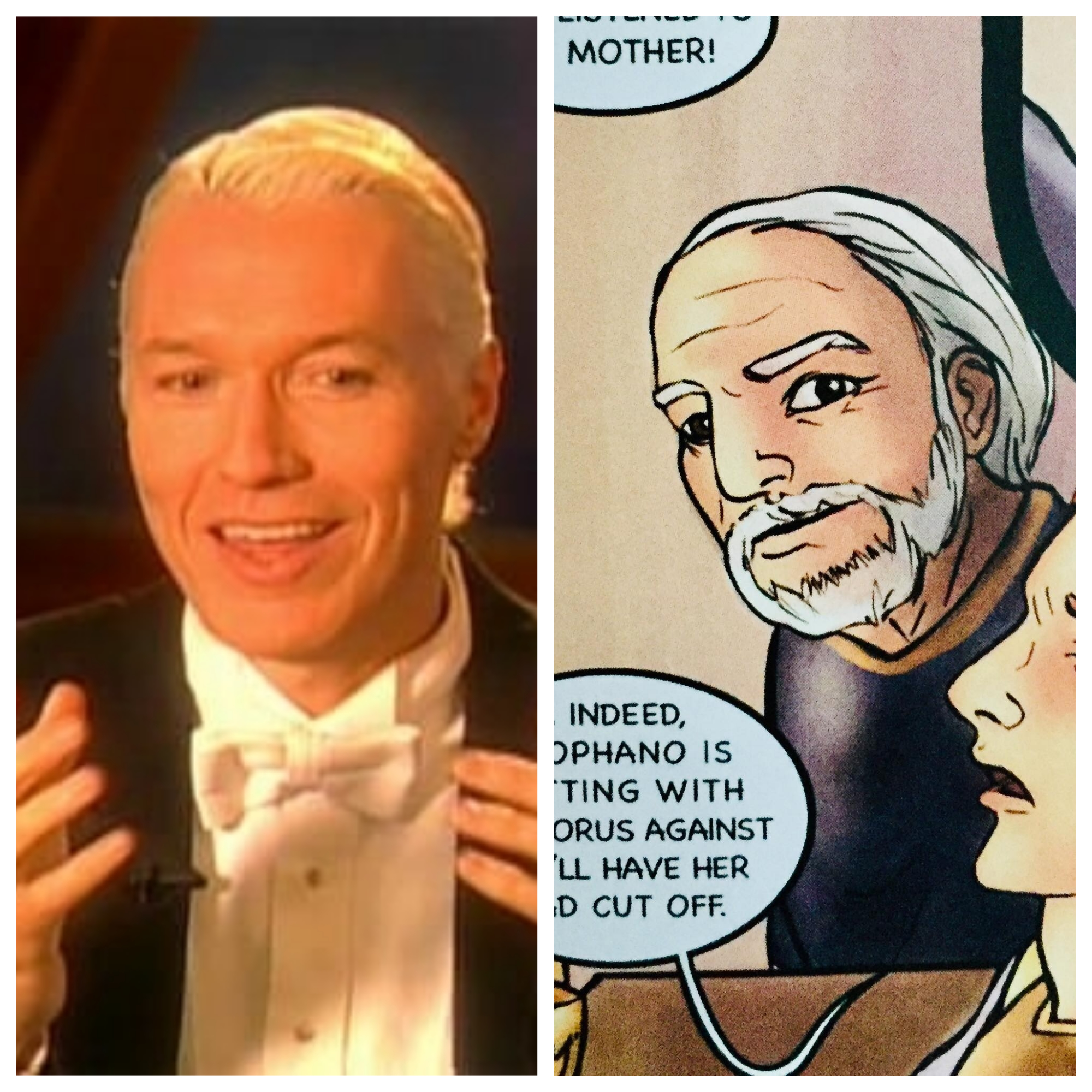
Argyros had been serving as a general since Constantine VII became sole emperor in 945 and since then fought campaigned in the Balkans and in Italy. In the novel, Romanos considered marrying Argyros’ daughter and divorcing Theophano and after Romanos’ death in 963, Argyros took part with Joseph Bringas in defending Constantinople against Nikephoros’ coup but at the end was killed by Nikephoros’ blade. The actor to play the old general Marianos Argyros was someone who isn’t that well-known so I chose the American actor Thomas Ian Griffith who is best remembered for playing the villain Terry Silver in The Karate Kid III (1989) and could possibly return for season4 of Cobra Kai, even if he hasn’t been acting for years.
Kristina Klebe as Queen Olga of Kiev– One of the notable historical characters that made a cameo appearance in the novel was Queen Olga of the Kievan Rus- the powerful nation north of Byzantium at that time which consisted of Russia, Ukraine, and Belarus- who had visited Constantinople in 957 according to the Russian sources to be baptized, however other sources say she visited Constantinople before the novel’s setting though the novel went for the option of including Olga in the story when Theophano was already introduced.
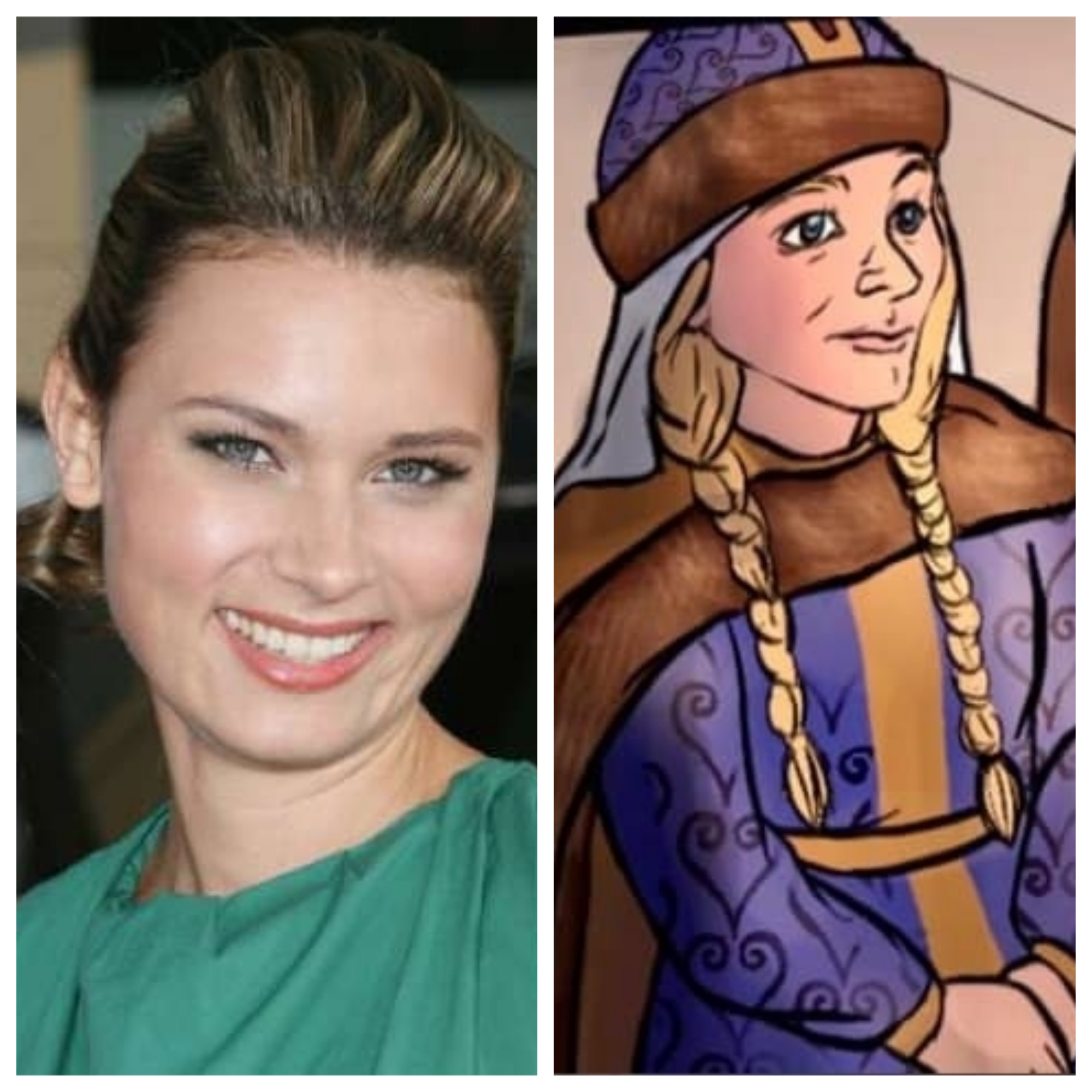
Olga appears quickly in chapter II where she meets Theophano herself, is baptized by Patriarch Polyeuctus and given the Christian name Helena after the empress and like in real history, she was rumored to have had an affair with Constantine VII as she overstayed in Constantinople, but she returns to her homeland to convert her people to Christianity. Ironically despite being canonized as a saint for converting her people, Olga has done terrible things as a ruler before which included setting the entire city of Korosten hled by their enemy Slavic tribe of the Drevlians in Ukraine on fire by tying Sulphur into birds to set fire to city from above out of revenge for them killing her husband Prince Igor I of Kiev, though later in life she redeemed herself by converting to Christianity. Sources are conflicting on Olga’s date of birth as it could be any year between 890 and 925 so in the comments of the novel’s Instagram post on Olga, I asked the creators if Olga was supposed to be an older woman or a younger woman, and they said that they chose the option of placing her birthdate at 925 which is why she is seen as a younger woman. Interestingly, in the novel Olga did not speak Greek (in the novel’s case English) and needed an interpreter as back then there was no universal language of diplomacy but the strange thing was that she was seen conversing with Theophano. Though Olga’s appearance was quick, I still have a casting choice in mind for her and I chose the German-American actress Kristina Klebe (@kristinaklebe) to play her since her age fits well with the character if Olga were to be in her 40s as the actress who is in her 40s still looks much younger and attractive for her age and Olga in the novel has blonde hair and Nordic features as she was of Varangian (Swedish) origin, coincidentally the actress looks the same way too. Coincidentally again, Kristina Klebe appeared in the 2019 film Sinister Seduction with Tanner Buchanan who I chose to play Romanos II so here they would reunite even though both characters were never seen side-by-side with each other in the novel.
“Stone Cold” Steve Austin as Prince Sviatoslav of Kiev– In chapter IV of the novel, Olga’s son and the new prince of the Kievan Rus’ Sviatoslav makes a cameo appearance as in Nikephoros II’s reign (963-969), Sviatoslav invaded Bulgaria which came into war with Byzantium so the emperor Nikephoros II asked the Prince of the Rus Sviatoslav to attack Bulgaria for the Byzantines but instead Sviatoslav continued raiding into Byzantine Thrace and only after Nikephoros II’s death was peace settled with Sviatoslav by John I Tzimiskes in 971.
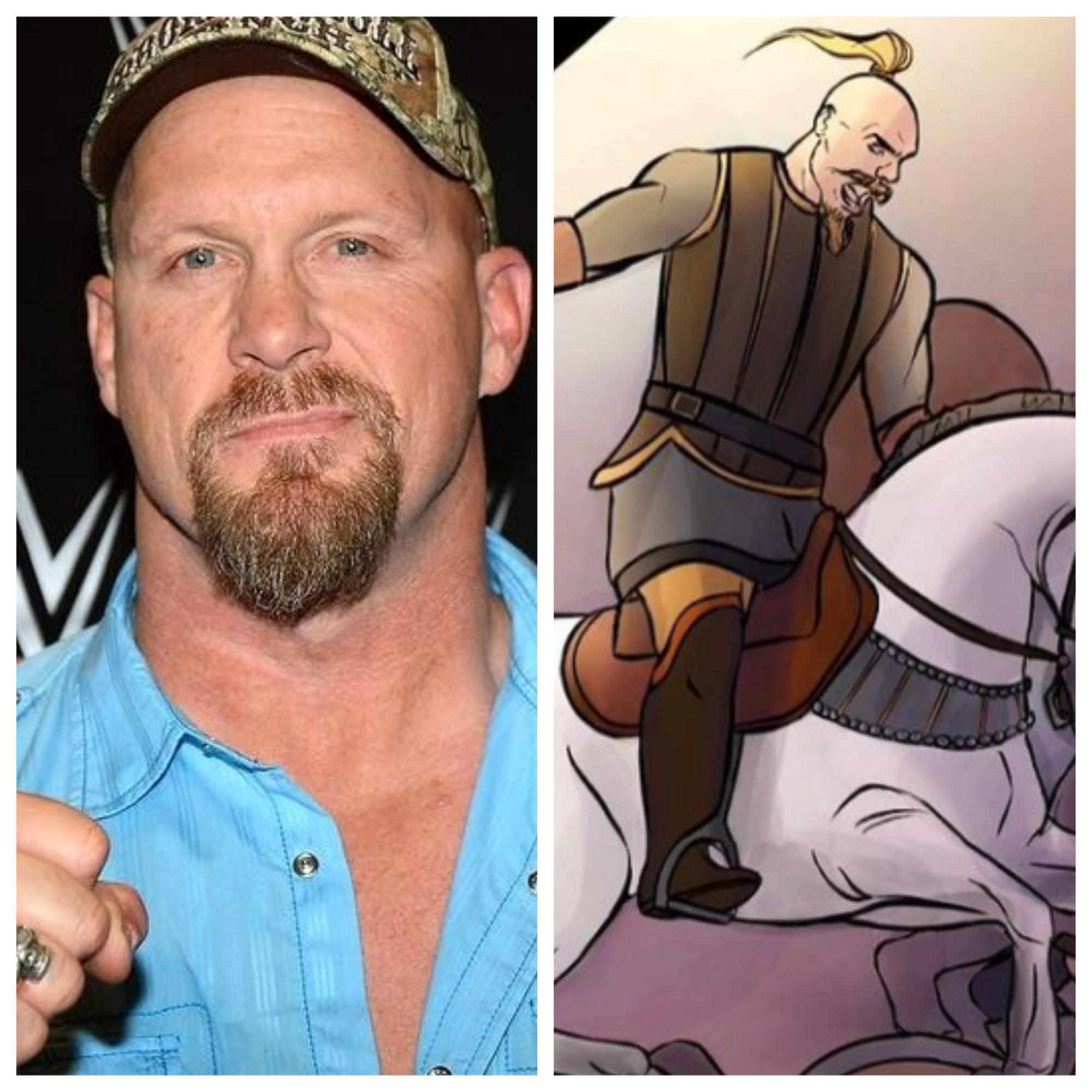
Sviatoslav appears as a large man with no hair except for a thin long stand on his scalp so to cast him, I had to choose someone large and intimidating in appearance who does not really need speaking lines, so as Carlos suggested, I went for American actor, WWE superstar and podcast host “Stone Cold” Steve Austin (@steveaustinbsr).
Guillaume Canet as Michael Bourtzes– One of the prominent Byzantine generals of the era that appears in the novel is Michael Bourtzes, a native of Eastern Asia Minor who served under Nikephoros II in his reign but was secretly loyal to John Tzimiskes as he tells Theophano while she joins Nikephoros in his trip in Cappadocia where Bourtzes is first introduced.
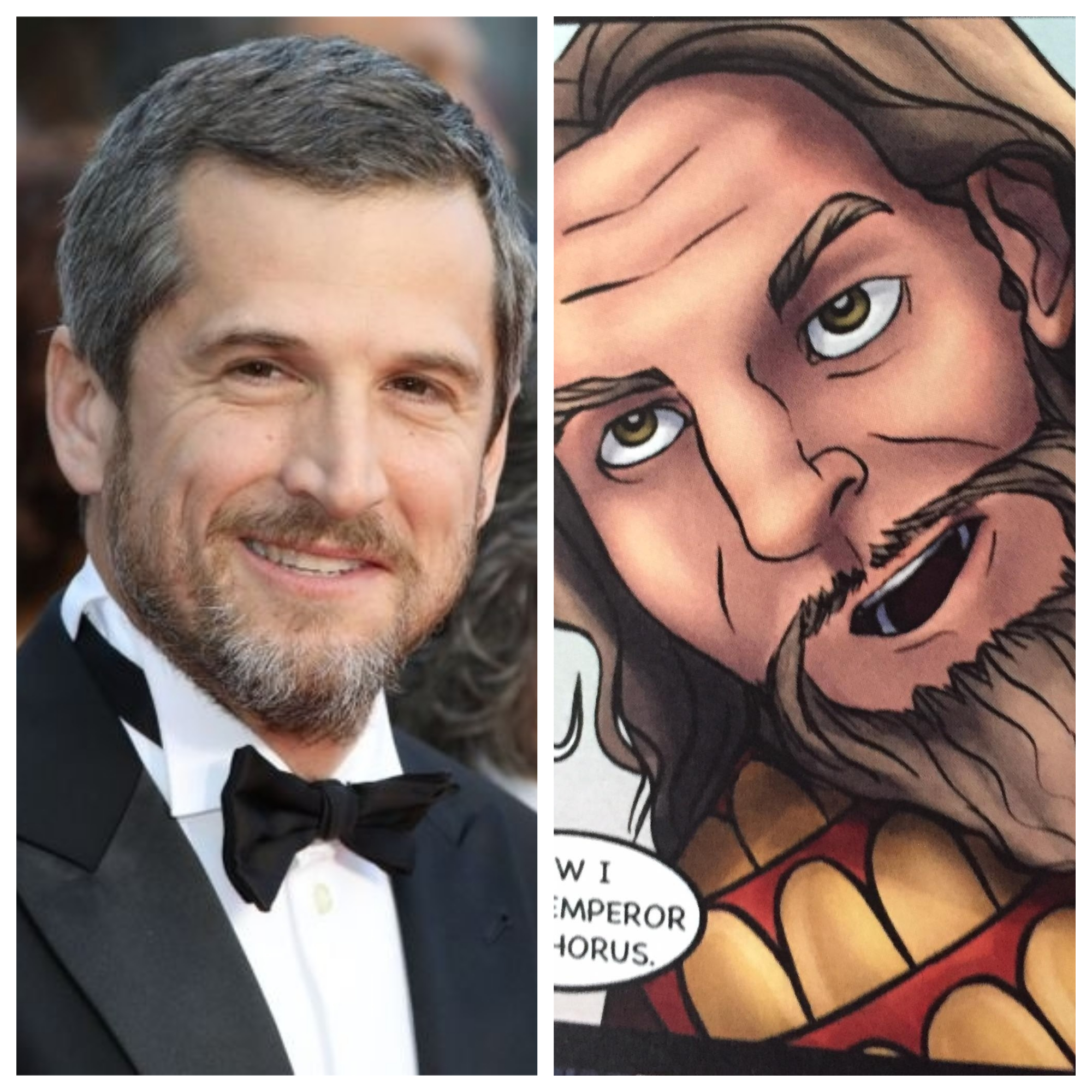
Later in 969, like in real history, Bourtzes retook the city of Antioch from the Arabs by persuading a traitor in the city to surrender one of the walls’ towers which he did making Bourtzes use it to defend against the attackers inside the walls and after 3 days taking back the city, though the emperor Nikephoros was enraged because Bourtzes disobeyed orders and set fire to the city so he was whipped and dismissed from command even if he won a victory so this led Bourtzes to conspire with Theophano and Basil Lekapenos to bring back John Tzimiskes and kill Nikephoros. Michael Bourtzes was one of the 3 conspirators that joined John Tzimiskes in killing Nikephoros II and it was Bourtzes who stuck Nikephoros first out of revenge. In John I’s reign, Bourtzes again served as a general and again in the reign of Basil II. Though Michael Bourtzes has a minor role in the story, I still decided to cast him and randomly I went for the French actor Guillaume Canet (@guillaumecanetofficiel).

Rodolfo Sancho as Bardas Skleros– In chapter V, at the story’s climax, one of the 3 conspirators that joined John Tzimiskes is the general Bardas Skleros, a powerful ally of John who took part in killing Nikephoros II in his sleep. Afterwards, Skleros would be one of John I’s trusted generals in his reign together with Bourtzes and later would be the same general that rebelled against Basil II. Just as I did for casting Bourtzes, I did the same and randomly went for casting the Spanish actor Rodolfo Sancho (@rodolfo_sancho) to play Bardas Skleros who does not appear to have any speaking lines.

Jonathan Roumie as Anemas– One of the 3 conspirators that joins John Tzimiskes in killing Nikephoros II at the climax in chapter V is the Arab Al-Numan who was renamed Anemas when converting to Christianity. Anemas was the son of the last emir of Crete who was deposed when Nikephoros Phokas captured the island in 961 and was taken to Constantinople as a prisoner and as seen in the novel, Anemas had his reasons to kill Nikephoros since it was Nikephoros that dethroned his father; afterwards Anemas would serve as one of John I’s generals. Like I did for casting Bourtzes and Skleros, I did the same and randomly went for casting Jonathan Roumie (@jonathanroumieofficial), an American actor of Middle Eastern descent to play Anemas who is an Arab by ethnicity.
James Scully as Patriarch Theophylact Lekapenos– Another historical character that makes a cameo appearance is the Patriarch of Constantinople Theophylact Lekapenos who as patriarch was more or less a joke as he was appointed to the position at age 16 by his father Emperor Romanos I in 933 and as patriarch, he cared more about his horses and spent more time in his stables rather than in his religious duties and once he did not show up in an important liturgical event in the Hagia Sophia as his favorite horse was giving birth.

Ironically, Theophylact died falling off a horse in 956 and as seen in the novel, he died in an accident by hitting his face in a rock when playing polo with the imperial heir and his nephew Romanos II, which for me was actually one of the more comedic scenes in the novel. Here, both Theophanes and Krateros who are observing the polo game are shocked especially seeing the head of their Church being where he shouldn’t be. The actor I chose to have a cameo role playing Theophylact is the American actor James Scully (@scullynjames) from the series Heathers and You, who with his young age and playful looking appearance looks like he can fit the role of the neglectful polo player patriarch.
Gianni DeCenzo as Basil II, Noah Schnapp as Constantine VIII, and Jenna Ortega as Anna Porphyrogenita– The 3 children of Romanos II and Theophano have quick appearances in the novel, though for most of the story the sons who would be the future emperors Basil II and Constantine VIII appear as young boys so I have no idea on who to cast for them. The first son Basil was born in 958 and the second one Constantine in 960 while their daughter Anna was born in 963 2 days before her father’s death though Anna’s birth is not shown or mentioned in the novel. At the story’s epilogue, when Theophano returns to the palace in 976, her 3 children all standing next to each other are now all teenagers and 18-year-old Basil II is now the senior emperor with 16-year-old Constantine VIII as his co-emperor. Basil II, one of Byzantium’s most famous emperors here however is not depicted in the way we usually know him to look like which is short and round with dark hair, instead here he has light hair and is tall and thin.
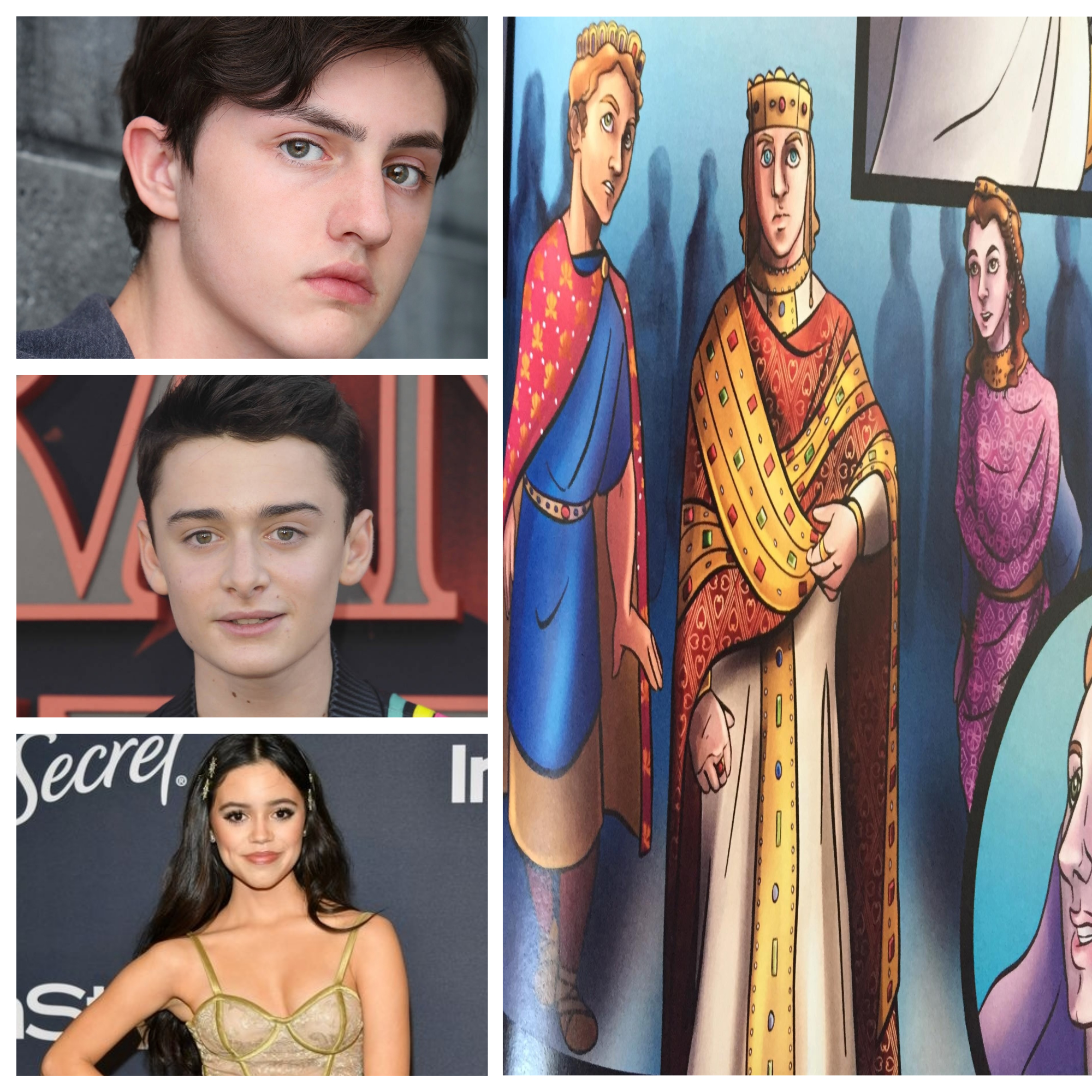
For the 18-year-old Basil II, I chose to cast Gianni DeCenzo (@gianni_decenzo) who is best known for playing Demetri in Cobra Kai as his age and appearance matches that of the novel’s Basil II and strangely, Gianni here would be playing the son of Tanner Buchanan’s character Romanos II’s son and both actors appeared in Cobra Kai and are almost the same age with Tanner being only 3 years older, however in 976, Tanner’s character is already long dead and Basil II here is almost the same age as his father was when he became emperor in 959. The actor I chose for Basil II’s younger brother Constantine VIII as a teenager is Noah Schnapp (@noahschnapp) who plays Will Byers in the series Stranger Things who would appear here as a cameo role, and their younger sister Anna in my opinion who looks like a young Theophano could be played by 18-year-old American actress Jenna Ortega (@jennaortega) from the series Jane the Virgin and You. Basil II would from here on rule for almost 50 years later becoming known as the “Bulgar-Slayer” with Constantine VIII as his co-emperor and later successor after Basil’s death in 1025 while their sister Anna in 988 married the Kievan Rus’ Prince Vladimir the Great.
Clotilde Hesme as Theophano’s mother– At the flashback where chapter II opens, Theophano’s unnamed mother is seen giving birth to her but dies shortly after leaving Theophano (Anastasia) to be raised by her single father Krateros.
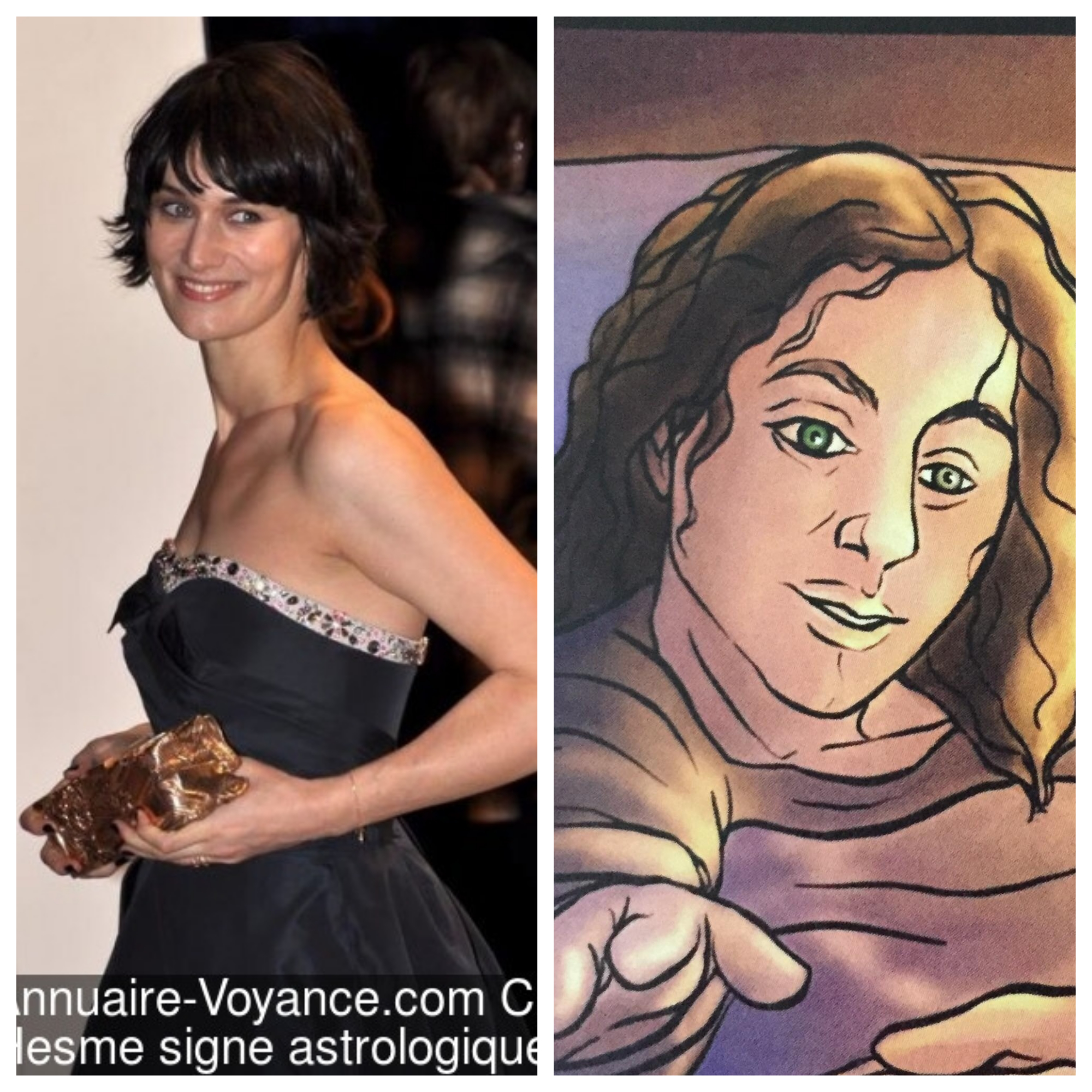
Theophano’s birth scene happens to be a flashback she receives when it is her time to give birth to her first son Basil II. Though Theophano’s mother appears so quickly, I still chose to cast her and the actress I chose was French actress Clotilde Hesme from the most recent Netflix series Lupin.
Victoria Pedretti as Argyros’ daughter and Vanessa Rubio as Joseph’s handmaiden– Lastly, I still got to cast the characters with the smallest appearances and these include the daughter of the general Marianos Argyros who Romanos II thought of marrying and for her I’d cast American actress Victoria Pedretti (@then0t0ri0usvip) from the series Haunting of Bly Manor and You who I also considered for another option in playing Theophano as I mentioned earlier although I think Anya Taylor-Joy would do better as the lead protagonist. However, I see Victoria Pedretti as someone who could perfectly play a Byzantine character so I chose to keep her in my casting list to play a cameo role. Meanwhile, another female character that appears to have a role that is more than a glimpse is the handmaiden of Joseph Bringas who holds the poisoned win intended for Theophano which Theophano uses to poison Constantine VII and the actress I chose for this cameo role is Colombian American actress Vanessa Rubio (@veryvness) who in Cobra Kai played Carmen, the mother of Miguel, the protagonist.
Lastly, I would also like to see the creators of the novel Spyros Theocharis and Chrysa Sakel have cameo roles too but also be the films’ producers though one person I’d also like to see as a cameo role and a producer of the film as well is no other than my favorite Youtube creator Dovahhatty. For the movie’s other producers, I have no idea on who can do the part but one possible option could be Elena Andreicheva, producer of last year’s Oscar winning documentary/ short film Learning to Skateboard in a Warzone (If You’re a Girl). For the movie’s director, I could not choose one myself so when asking the creators, I asked who they could see as their choice of director if their graphic novel was made into a movie, and for them they said it is either a tie between Ridley Scott and Zack Snyder and both surely have experience in doing dramatic and action packed films, but it would be their first time doing a Byzantine epic. For the film’s musical scoring, I could imagine the composers Jepser Kyd and Lorne Balfe who as I know have done the soundtrack of Assassin’s Creed Revelations which too had a setting in Constantinople and tis soundtrack surely having a Byzantine feel to it, therefore they could do the same again in giving a Byzantine feel to the soundtrack to a possible film adaptation to this novel. In my opinion, it would be a great experience to have the Icelandic hit rock band Of Monsters and Men (@ofmonstersandmen) also have a part in the movie’s scoring too!
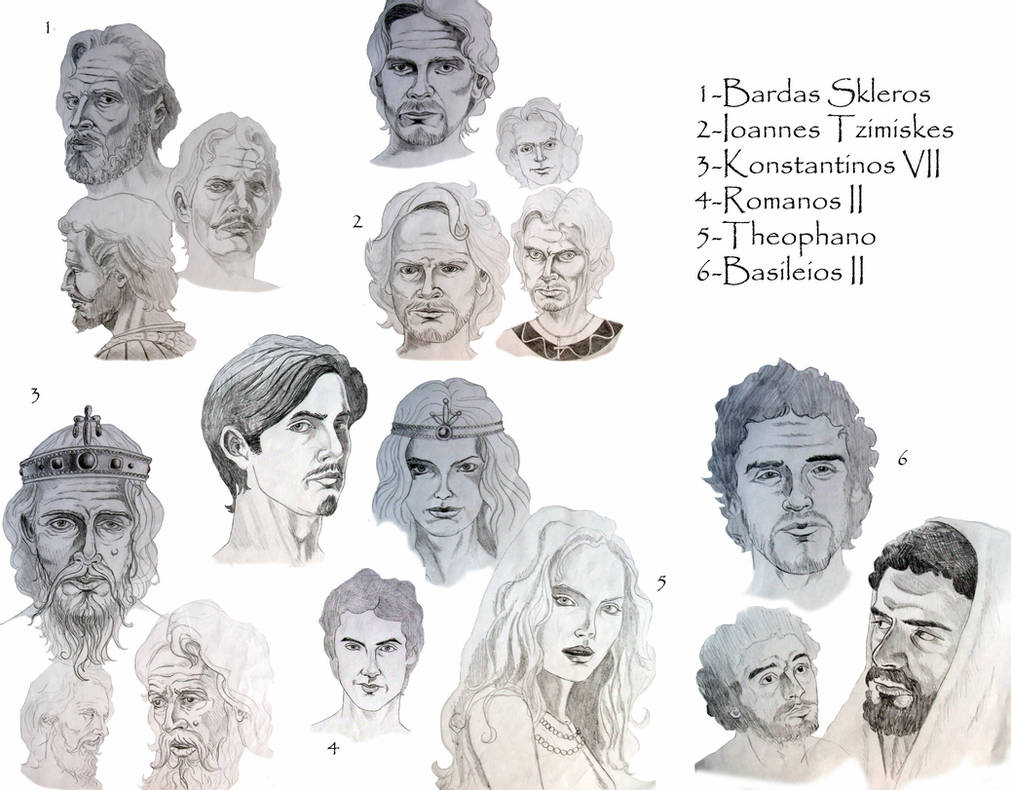
Byzantine Historical Easter Eggs

Since Theophano: A Byzantine Tale is a graphic novel with hundreds of images, it does show a lot of Easter Eggs and references to Byzantine history especially of their time and these not only include buildings of the era or costumes but things people who know Byzantine history would be familiar with such as Byzantine Polo, Greek Fire, the imperial palace, the Cataphract Cavalry, and much more. For instance, the book cover shows the story’s lead character Empress Theophano dressed in full imperial attire and at her hands are mosaic tiles or Tesserae which is a reference to the mosaics that decorate the interiors of several Byzantine era churches while behind her flanking her left and right are images of emperors with erased faces.
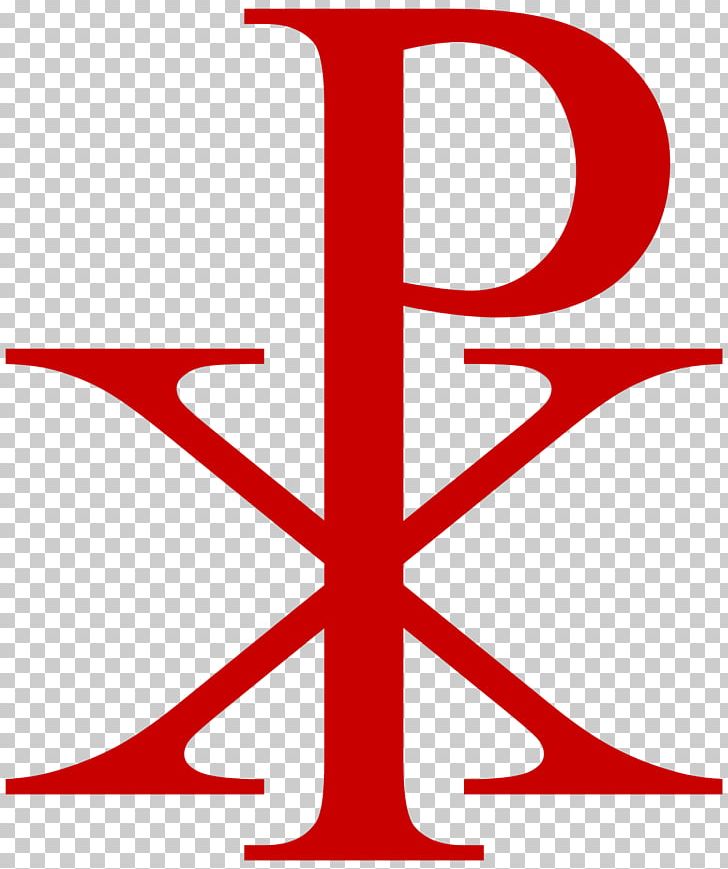
In my interview with the creators through Instagram message, I asked what was up with the defaced emperors as I thought it was a reference to the Byzantine Iconoclasm a century before Theophano’s time wherein faces were erased though they said it was allegorical and these erased faces represent the two emperors Theophano killed which could be Constantine VII and Romanos II, Romanos II and Nikephoros II, or Constantine VII and Nikephoros II while also flanking Theophano if you look closely are two Chi-Rho symbols, one of Byzantium’s imperial symbols that dates all the way back to the times of the Roman Empire in the 4th century. Now since this novel was inspired by historical events, it has to include references to the time it was set in to make it look authentic (spoiler alert for those who haven’t read the book yet!). Luckily, the novel ends with a list of notes on historical facts which I am mostly basing this section of my article on.

Chapter I- Ambition
- The novel’s opening scene in 940 features Slavic tribes that had settled in the Peloponnese revolting and attacking what is medieval Sparta wherein Theophano’s parents with her mother pregnant with her are escaping from and true enough it was during the reign of Romanos I (920-944) when they revolted though the year is not exactly stated.
- The secret superweapon of Byzantium Greek Fire makes a signifact appearance and so was the victory against the invading Kievan Rus’ fleet in Bosporus and the land battle against them where the Byzantine Thematic army defeated them.
- When Theophano first visits the palace, as she enters you see a large mosaic of Christ above the palace gate, this here was a real location being the Chalke Gate of the imperial palace. The two soldiers you see guarding the gate are part of the emperor’s elite army or the Tagmata.
- When Emperor Constantine VII is introduced, you see him seated in the elevated throne that he was said to have been sitting on as well as the mechanical roaring lions that flanked him and the golden tree of singing birds. This here is a reference to the Italian bishop and diplomat Liutprand of Cremona’s encounter with Constantine VII in 949, although here the foreign ambassador meeting him is probably someone else as the main part of the story opens in 956.
- The bride show set up for the imperial heir Romanos II wherein he chose Theophano as his wife was true enough a tradition in this period of Byzantine history wherein the imperial heir would choose his wife out many young noble women from all over the empire. In Byzantine history, emperors like Leo IV (r. 775-780), Constantine VI (r. 780-797), Staurakios (r. 811), Theophilos (r. 829-842), and Leo VI (. 886-912) chose their spouses this way.
- The Church of the Virgin of Pharos where the marriage between Romanos II and Theophano took place was a real location and this a chapel exclusive to only the imperial family and court located within the Imperial Palace complex.

Chapter II- Intrigue
- At the start of chapter II in the year 958 setting, a cat is seen sitting on the foot of Krateros who is already a palace official. Now this detail requires you to pay a lot of attention to notice it but apparently a friend of mine and fellow Byzantine history fan (@anacagic) who I met online commented on the novel’s Instagram post of this exact image that she noticed the cat and apparently the creators said in response to her comment that the cat here was a reference to the many cats you see in today’s Istanbul.
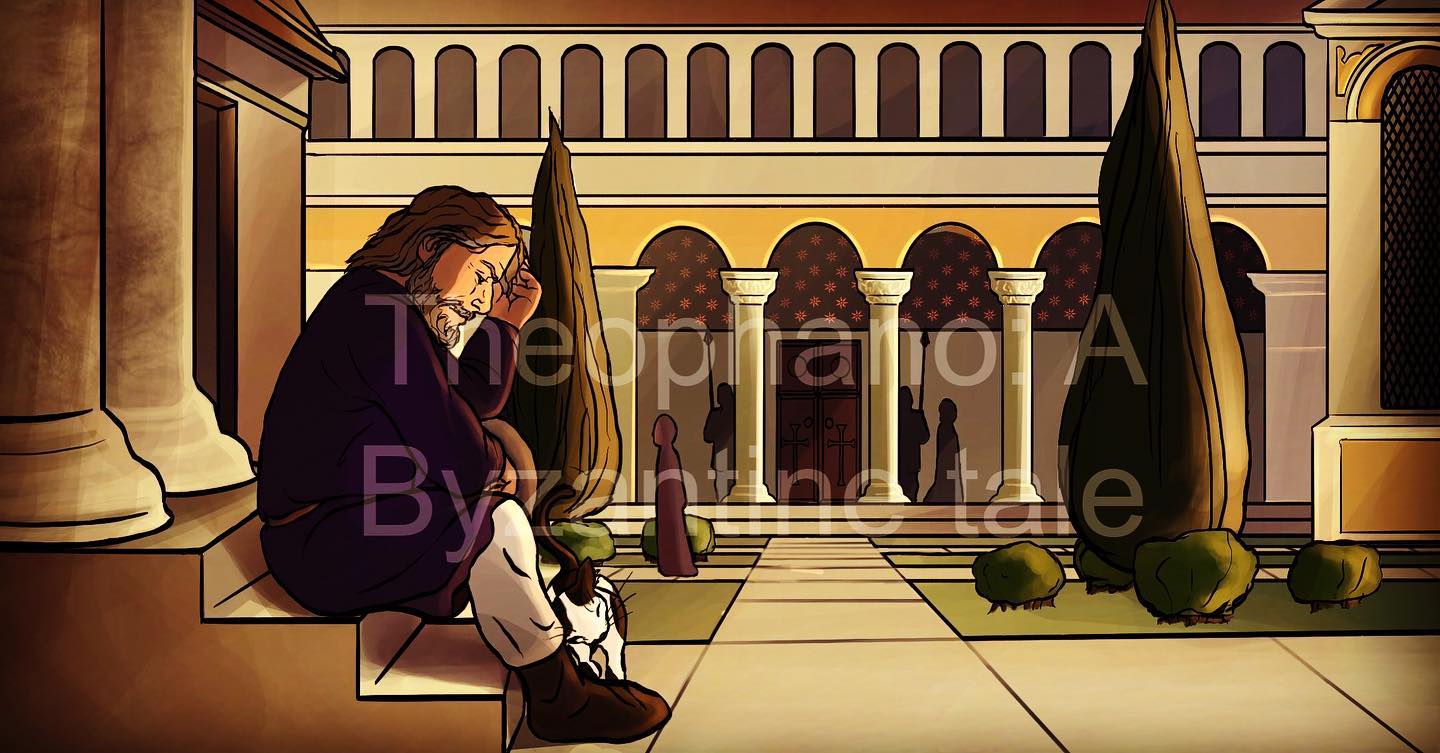
- When Theophano gives birth to her first child Basil II in 958, she does it in a purple room, which however in the novel doesn’t appear to be purple. This was a true fact in Byzantine history since imperial heirs to ensure their legitimacy were born in a room line with purple stone or Porphyry hence came the title Porphyrogennetos for all imperial children born in that room, though only Constantine VII as emperor uses it in his title. Since there were no laws of divine rights in Byzantium and the Roman Empire before them, emperors had to come up with creative solutions to ensure succession among their children and one of them was for their children to be born in this one and only purple room, if not then this could create generals to find a good reason to usurp power.
- Today Polo is better known as a sport for the rich and powerful and even back in Byzantine times it was wherein it was a game borrowed from Persia called Tzykanion wherein players ride on a horse and hit a ball with a netted stick, and in the novel you see the young Patriarch of Constantinople Theophylact Lekapenos playing it wherein he dies out of an accident. The polo field or Tzykanisterion seen here which is the one found at the Great Palace Complex near today’s Topkapi Palace was built in the reign of Theodosius II (r. 408-450) who excelled at the game and so did other emperors like Basil I the Macedonian (r. 867-886) and his son Alexander (r. 912-913) who died after a game of it; Theophano’s son Constantine VIII (r. 1025-1028), Alexios I Komnenos (r. 1081-1118) and Theodore II Laskaris (r. 1254-1258) played the game too.
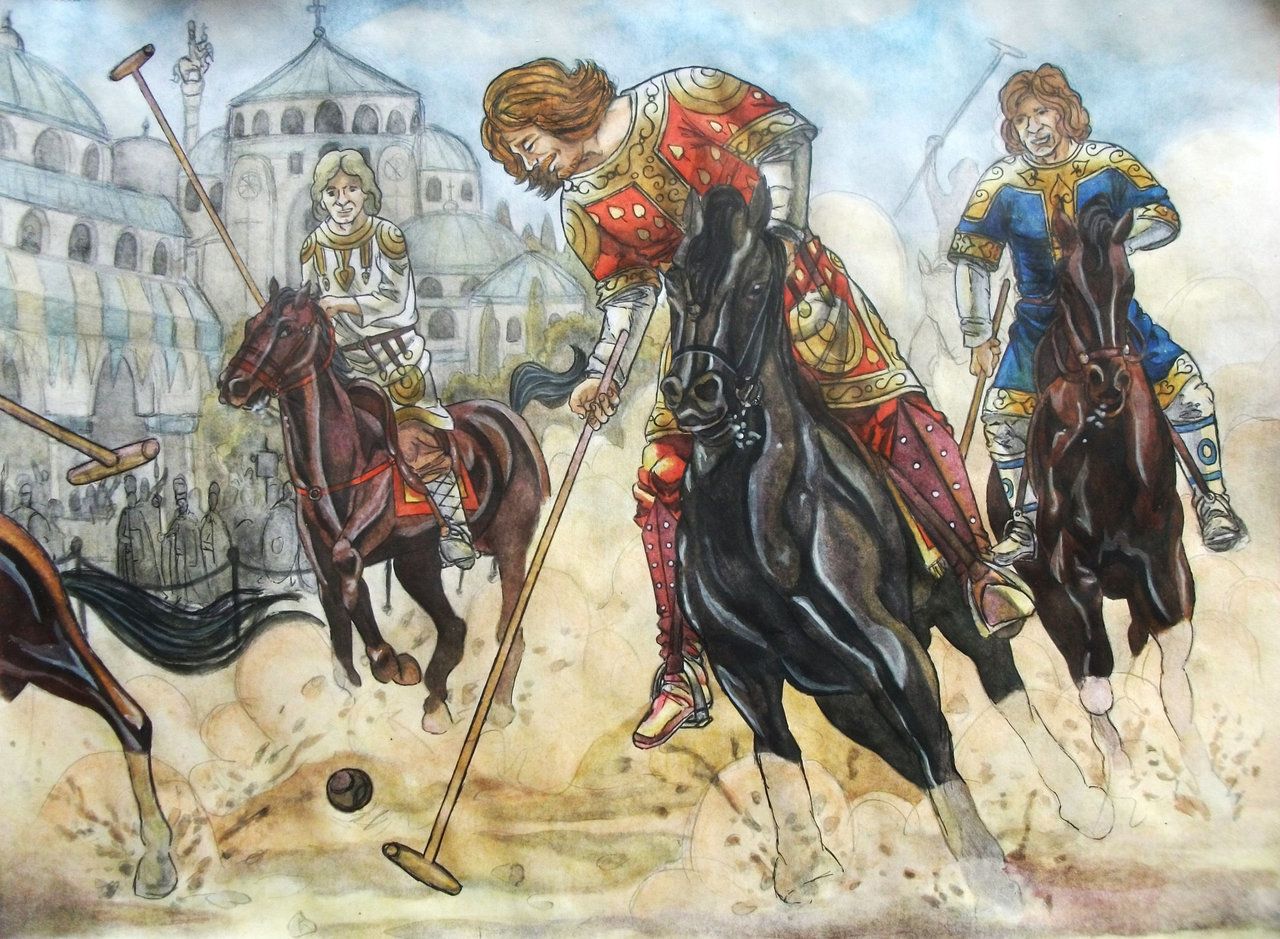
- The ivory box of Empress Helena which seen when she is conversing with Joseph Bringas is a reference to the art form of ivory carving, a popular Byzantine art form that was used for several book covers and portraits of emperors.
- The palace right next to the sea where Queen Olga of Kiev first arrives in is the Bukoleon Palace, one of the more notable palaces in Constantinople’s Imperial Palace Complex. The interior of the Hagia Sophia meanwhile features the entrance to the building that is still used today.
- Before Olga leaves, you now know Theophano did not speak Olga’s language since whatever Olga says to Theophano is translated by an interpreter and what is spoken in Olga’s thought bubble in the Cyrillic alphabet is actually the Russian translation for what the interpreter was saying and here I asked the creators about this Russian text and apart from telling me it meant exactly what the interpreter was saying, they said they had no knowledge of Russian so they just used Google Translate for it- what I usually do when I use foreign language dialogue in my Lego films- though they also said that a historian told them that Ukrainian was a better option as it was closer to the Kievan Rus’ language but it was too late to change that.
- The prison Empress Helena was put in was once the Baths of Zeuxippus, a popular bath site in Constantinople back in the 6th century and the earlier days.
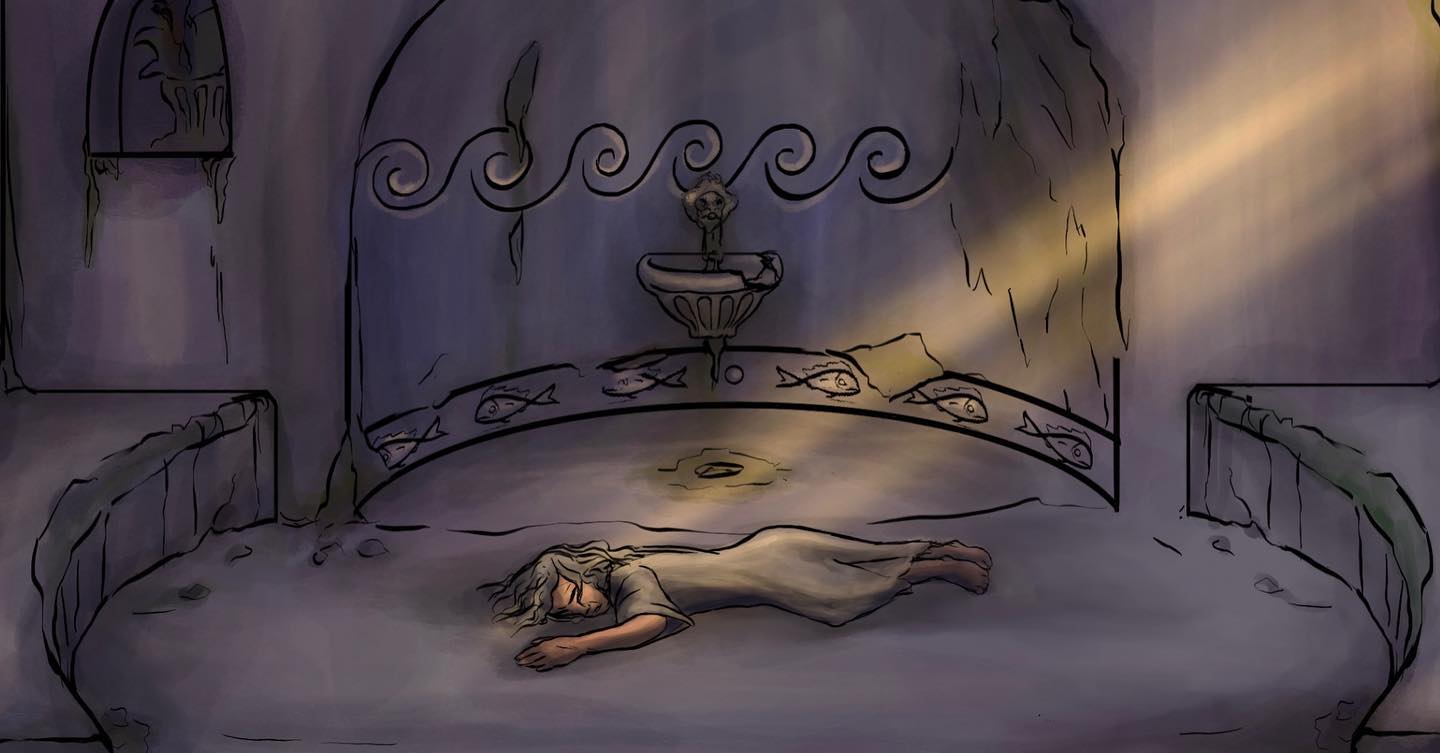
Chapter III- Sovereignty
- The church where Emperor Constantine VII and Empress Helena were buried in was the Church of the Holy Apostles, the burial site of many Byzantine emperors which is now the Fatih Mosque of Istanbul. Since it is unclear what the here in the novel shows it looking similar to St. Mark’s Basilica in Venice in which the architecture was based on the Holy Apostles church. The purple sarcophagus of Constantine VII as will see is based on the surviving porphyry sarcophagus of the Byzantine emperors which you will see in Istanbul’s Archaeological Museum. In addition, Romanos II and Theophano are seen wearing white, which is the Byzantine color of mourning, although there is no evidence of this in the 10th century as sources that mention white as a mourning color only come in the 14th century.
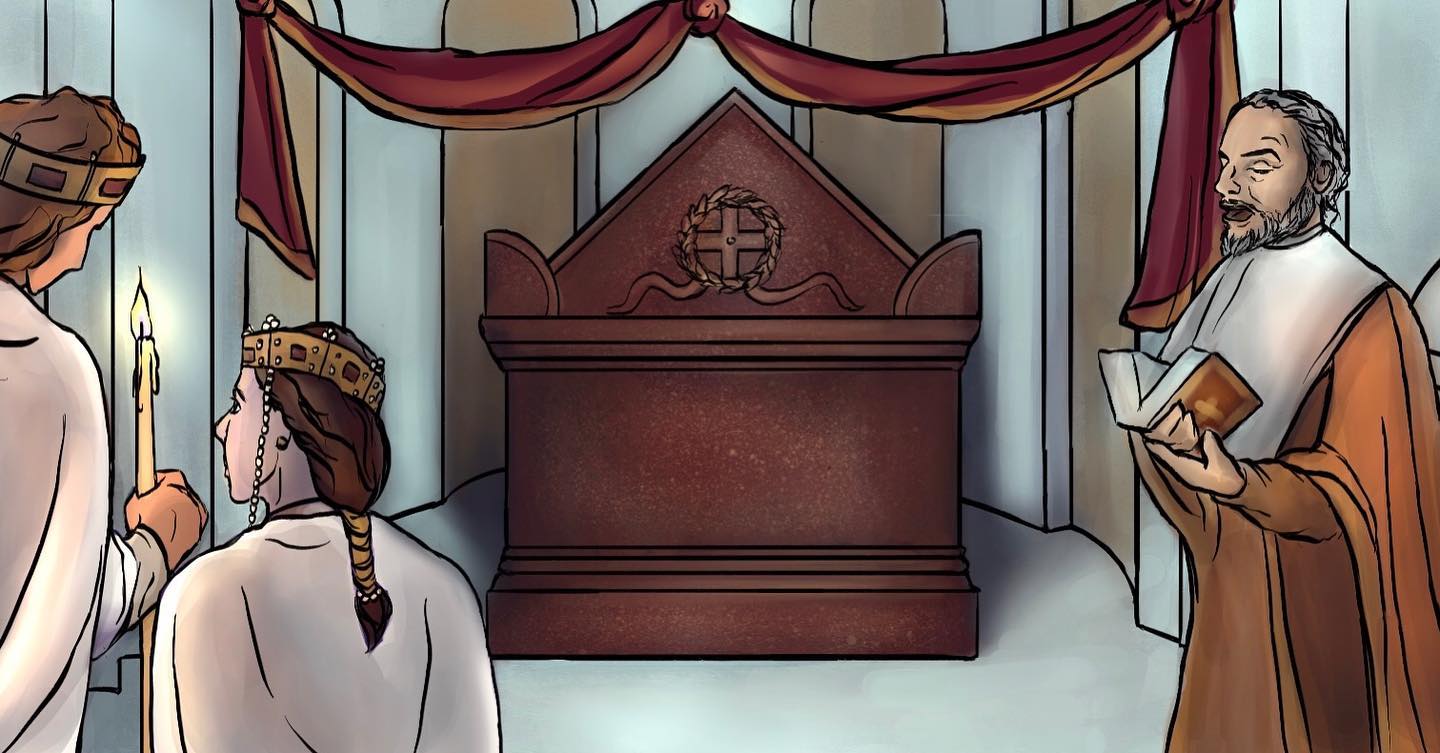
- In Nikephoros Phokas’ expedition in Crete, one panel depicts the Cataphract cavalry unloading in the beach through ramps coming out from ships similar to the D-Day landings in World War II (1944), it turns out that the Byzantines used this kind of tactic when invading enemy territory from sea. The scene of the walls of Crete’s capital Chandax collapsing by mining beneath it was actually how Nikephoros’ army in 961 captured the city from the Arabs.
- The single column seen next to Romanos II and Joseph Bringas in the middle of field is the Column of the Goths, one of the oldest structures in Constantinople and could even date back to its founding by Constantine the Great in 330, today it still stands in Istanbul’s Gulhane Park near Topkapi Palace.
- The scene of Nikephoros Phokas acclaimed by his troops by standing on a shield shows the Roman and Byzantine tradition wherein an emperor acclaimed by his troops was lifted on a shield.
- The part of John Tzimiskes firing an arrow is a reference to him as a highly skilled archer as documented by his contemporary historian Leo the Deacon.
- The house of the eunuch Basil Lekapenos shown here happened to be the house of the 5th century Byzantine general of Gothic origin Aspar, the puppet master of Emperor Leo I (r. 457-474) who in fact killed Aspar. Being a high-ranking court official, Basil Lekapenos gained so much wealth over the years that he commissioned a highly valuable golden reliquary which still exists today known as the Limburg Staurotheke, which can be seen in the background of the part where Basil and John Tzimiskes are talking.
- The ceiling mosaics in the scene Theophano walks in as empress in my opinion looks like it was patterned after the dark blue and gold ceiling mosaics of the 5th century Mausoleum of Galla Placidia in Ravenna.
Chapter IV- Disorder
- The street seen where the coronation procession of Nikephoros II is Constantinople’s main artery known as the Mese which connects all the city’s forums ending in the Hippodrome.
- Before Nikephoros II’s coronation in 963, the house Theophano was staying in wherein John Tzimiskes came to visit her was in today’s Fener district of Istanbul. The History of the Byzantine Empire by Radi Dikici’s chapter mentioning Theophano also mentions that she had to be placed in a house outside the city center before her wedding to Nikephoros II as custom dictated.
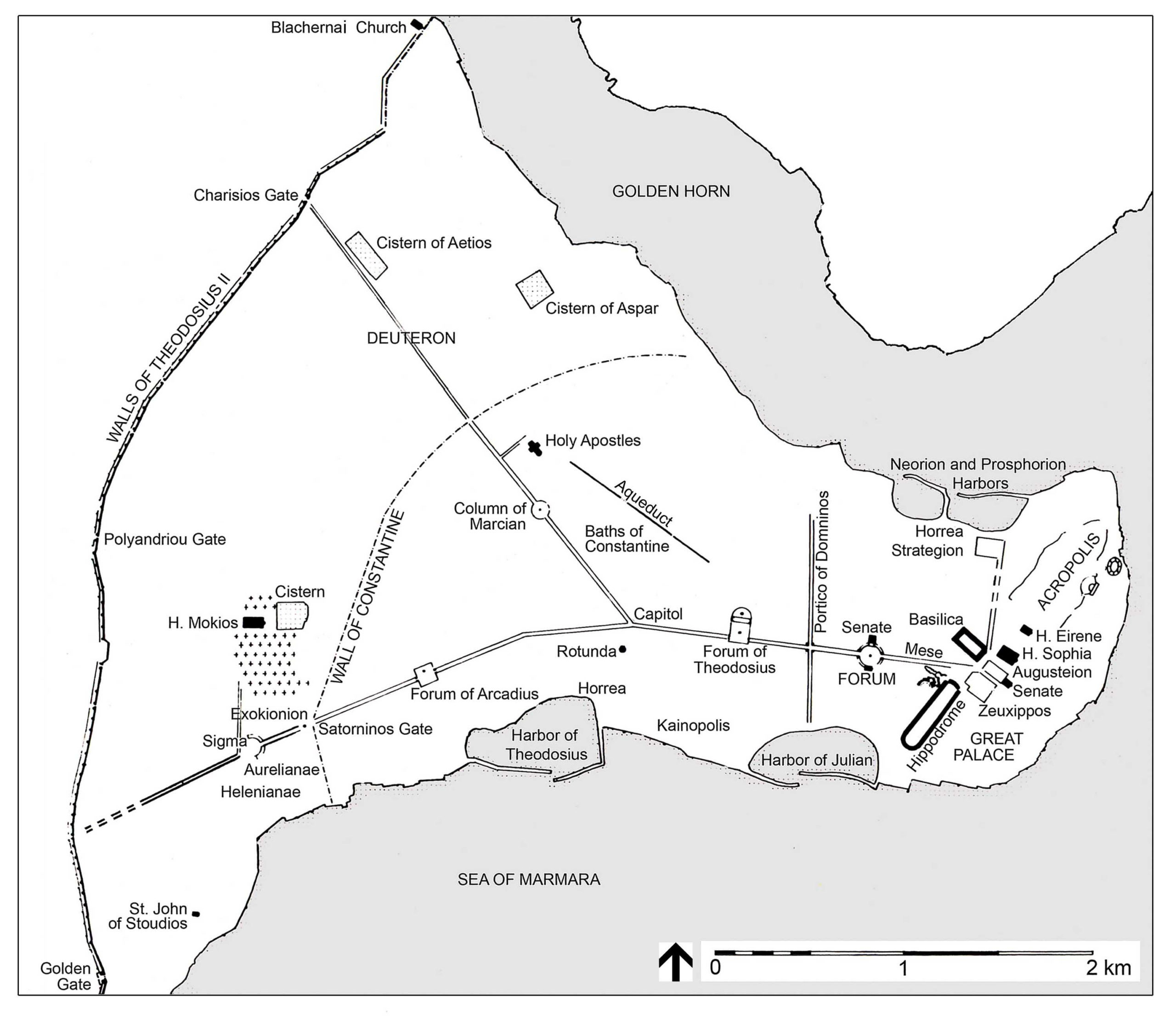
- The red imperial robes and crown Nikephoros II Phokas is seen wearing as emperor looks similar to the exact robes and crown he wears in his existing portrait wherein he is carrying a Paramerion or curved sword.
- The Byzantine senate too makes a quick cameo appearance but it is also mentioned here that they did not have a powerful role in society anymore as they did in the age of the Roman Empire, instead the senate only remained as a board of rich and powerful old men serving as advisors for the emperor. The Senate of Constantinople meanwhile was founded by all the way back in 330 by Constantine the Great who moved some noble families from Rome east and according to tradition, some of the important Byzantine families such as Doukas and Palaiologos were originally Roman patrician families moved to the east by Constantine the Great.
- The region of Cappadocia, which was also a Theme of the empire back then and the homeland of Nikephoros II and growing up there which was then a wild frontier constantly attacked by Arabs shaped him into a tough general determined to kill his Arab enemies. Apparently, the trip Nikephoros with Theophano and her sons took to Cappadocia between 964 and 965 did indeed happen and seen here in the novel is a church with frescos of Nikephoros and Theophano themselves and today these can be found in a rock carved church in what is today the village of Cavusin. When asking the novel’s creators if this trip to Cappadocia actually happened, I was also informed by them that Nikephoros even briefly left the army for a time to spend time with Theophano, and now here’s something new I learned from the creators which was not even seen in the book itself.
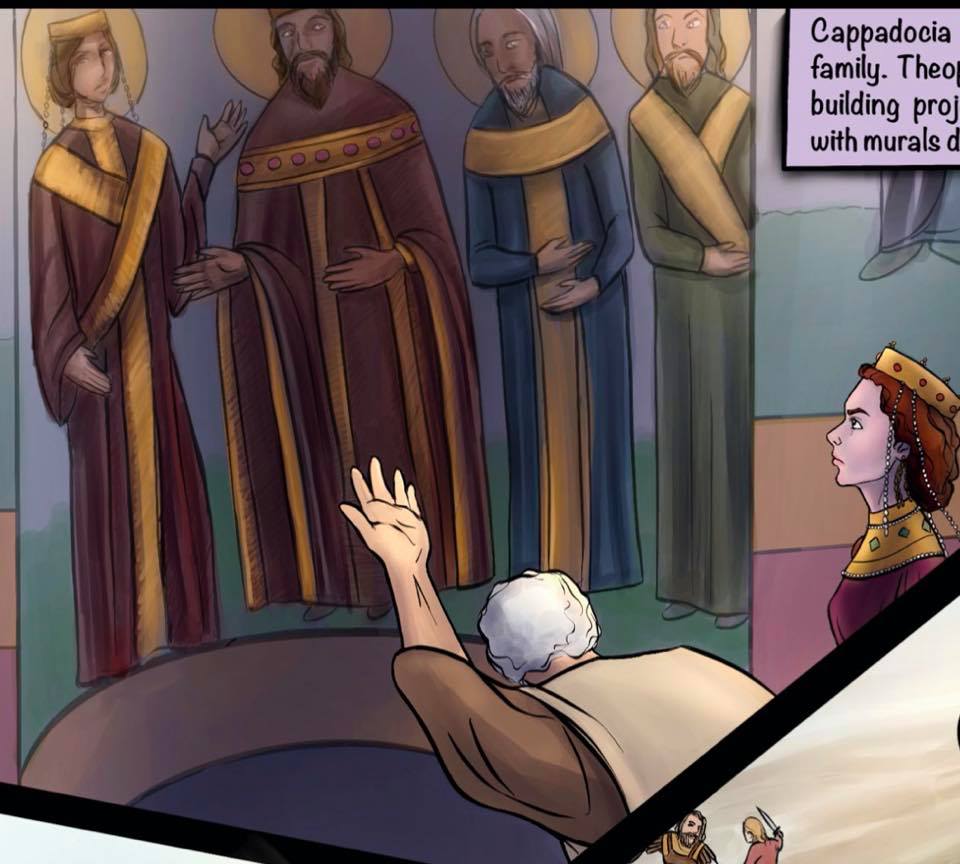
- The rioting scene in the harbor has a quick appearance of the “powww!” text when a man punches a soldier, a reference to the action scenes in old comic books. The Hippodrome scene meanwhile shows a bird’s eye view of the famous Statue of the 4 Horses which are now in Venice after being taken by the 4th Crusade in 1204, this is seen when Nikephoros’ cavalry marches into the Hippodrome, the most common gathering location in Constantinople. In addition, the 70m tall Column of Justinian I can be seen in the background of the Hippodrome, this was taken down after the Ottomans took over Constantinople in 1453.
- I had also asked the creators if the stampede was true event, and it certainly was as they had answered me. It also did happen in history that Nikephoros II built another wall to protect the palace as he feared a prophecy of him being assassinated but it was exaggerated here that the palace became a military camp.
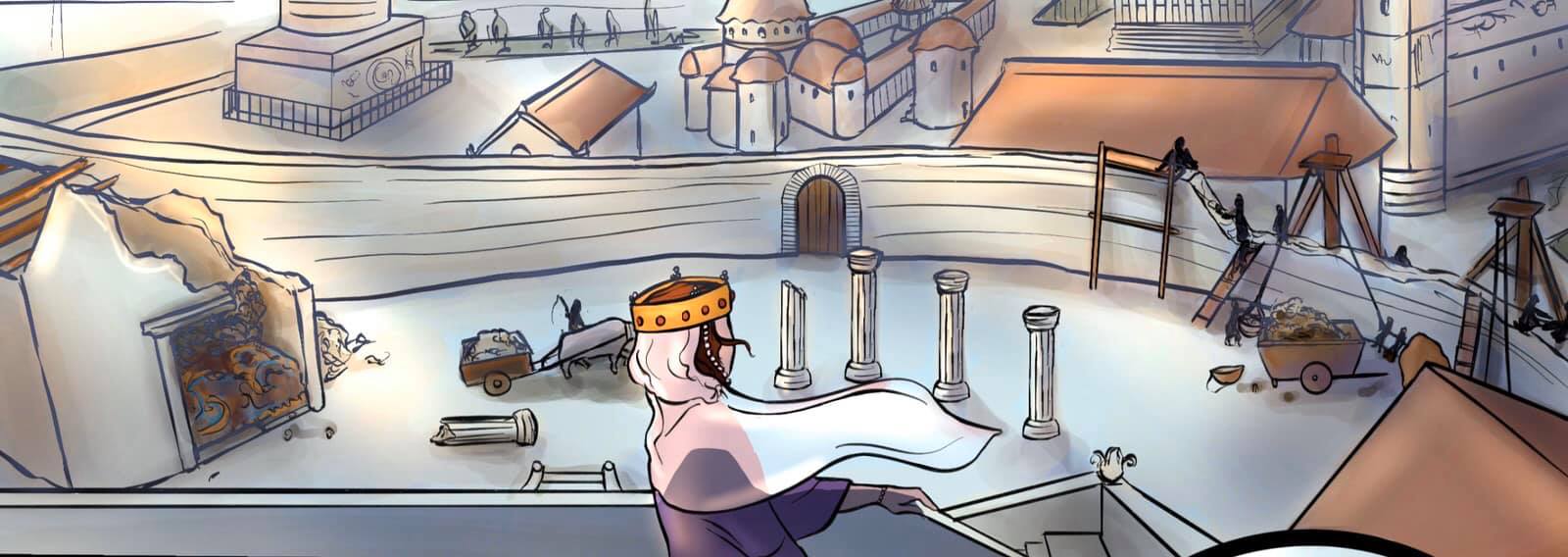
- In the scene where Nikephoros II angrily insults a cardinal sent by the Holy Roman emperor Otto I, this cardinal happens to be the same Bishop Liutprand of Cremona who visited Constantinople in 949 meeting Constantine VII but his encounter with Nikephoros II was the complete opposite of his encounter with Constantine VII. When meeting Nikephoros, Liutprand was insulted being seated at a remote part of the dining hall and being served a smelly fish sauce as punishment for calling Nikephoros only as “Emperor of the Greeks” and not “Roman emperor”; to retaliate as well, Nikephoros refused to call Otto I “emperor” but instead “king” and when returning to Italy, Liutprand’s purple silks were confiscated as he insulted the emperor. The novel however omitted the whole part of Liutprand meeting Nikephoros, instead only showing one scene of it as part of a montage sequence, though it would add some comedy to the story when putting in this scene.
- The church structure behind Patriarch Polyeuctus when he is talking with Basil Lekapenos and Theophano is the Hagia Eirene or Church of Holy Peace which still exists today part of the Topkapi Palace Complex of Istanbul.
Chapter V- Betrayal
- When seeing the prayer object Nikephoros II was holding, I first thought it was a Rosary but when asking the creators what it was, they replied saying it is a prayer rope known as a Komboskini, as the Byzantine Orthodox Christians do not have rosaries in their tradition.

- When Nikephoros II is assassinated in his sleep, he is seen wearing monk’s robes and on the floor. The monk’s robe he is wearing a reference to his preference to live the life of an ascetic monk ever since his wife and son died years ago which is why he chose to distance himself from women even when marrying Theophano. As mentioned in the historical records, Nikephoros slept on the floor when he was killed, though when I made my short film on this subject matter back in 2019, I missed out this detail and I only knew about it when someone later on commented that he slept on the floor that night. The decapitated head of Nikephoros meanwhile was meant to show proof that he was dead.
- It actually happened that Theophano sought refuge in the Hagia Sophia when Basil Lekpaneos betrayed her and it was actually true that she punched him out of anger when hearing he had betrayed her.

- The location where Theophano departs the palace and later comes back to in 976 is the same seaside Bukoleon Palace. The end page meanwhile shows a coin from Theophano’s time in the 10th century with her image on it which shows proof of what she looks like even if the coin is faded so it is hard to know what she actually looked like.

Historical Errors and Missing Items

Though this novel was well written and well-illustrated giving readers a clear image of what life in 10th century Byzantium was, there are quite a few historical errors and though some of them I can tell were done intentionally just to exaggerate the tory a bit more to make it have some fantasy elements. As a Byzantine history fan, I was able to pay attention to the details and point out some loopholes. Here is a list of them as seen per chapter.
Chapter I- Ambition
- The novel mentions that the trip Theophano’s parents and Theophanes took from Laconia in Southern Greece to Constantinople by sea took months though historically speaking, back then sea trips took long but since Laconia and Constantinople were not too far from each other, the trip could have just taken about a week as a sea trip to from Italy to Constantinople was something like 3 weeks unless the ship stopped at many places along the way which was mentioned here.
- As mentioned earlier, sources of Theophano’s origins can be conflicting that she could have even came from the nobility but from an unknown family though the creators of the novel went for the option of Theophano’s humble origins showing that she grew up in Constantinople while her father grew rich over time as he owned not an ordinary inn but a high-end one visited by court officials from the palace.
- Before Romanos II and Theophano met and married in 956, Romanos was married as a child to Bertha of Italy who died in 949 and in fact there is an ivory carving which is said to depict Romanos II and Bertha.
Chapter II- Intrigue
- In the novel, Patriarch Theophylact Lekapenos died in 958 as Basil II was already born before the accidental death of Theophylact, although it is accurate that Theophylact died ironically in riding accident as he was fond of horses but historically, he died in 956 and was not accidentally kicked to a rock by Romanos as shown here. This scene however could be in 956 as the birthdate of Basil in this novel could have been placed earlier.
- There is a major inaccuracy here in the novel on the birth years of Basil II and Constantine VIII, although for Basil it was more or less accurate because he was born in 958 when his grandfather Constantine VII still ruled as emperor though the second son Constantine VIII was born in 960 when his father Romanos II was already the sole emperor whereas the novel says that Theophano gave birth to Constantine VIII while his grandfather who he was named after was still alive. It is also unclear if Theophano asked Nikephoros Phokas to be the godfather of her son Basil as shown here.
- When Queen Olga of Kiev visited Constantinople, it is unclear whether Theophano was already around or not as Olga’s visit could have been before 956 but other sources place it at 957 which means she would have most likely met Theophano.
- It is remains unlikely if Empress Helena who distrusted Theophano planned to poison and it is also unclear if Joseph Bringas actually revealed the plot to Theophano. At the same time, it is only rumored that Theophano poisoned Constantine VII in 959 as his death could have also been due to natural causes as weeks before his death, he was already bedridden.

- In reality, Empress Helena was not betrayed and imprisoned by Joseph Bringas wherein she was forced to commit suicide by poisoning herself, instead according to the choronicler at that time Theophanes Continuatus, when her son Romanos II became emperor in 959, she was banished with her 5 other daughters to a convent as Theophano convinced Romanos to do that while at the same time Romanos too purged the court of those disloyal to him and Joseph such as Basil Lekapenos. Helena after her husband’s death in 959 retired while she died in that convent in 961.
Chapter III- Sovereignty
- Instead of accompanying Queen Olga to the lands of the Rus at the time of Constantine VII’s death in 959, Basil Lekapenos was joining the general John Tzimiskes in his campaigns against the Arabs in the eastern frontier.
- The merciless genocide of the citizens of Crete in 961 as well as the sacking and massacre of the citizens of Aleppo in 962 both committed by Nikephoros Phokas were omitted from the novel and so were the battles against the Emir of Aleppo Sayf Al-Dawla in the east.
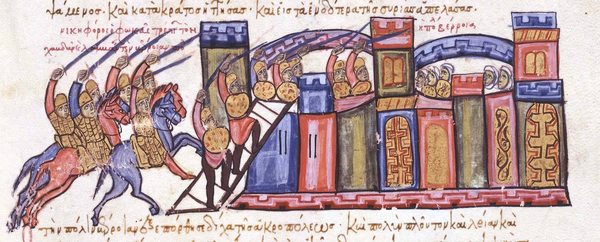
- Though the novel depicts Romanos II growing more and more distant from Theophano and their children, in reality they were still close that Romanos made his young son Basil his co-emperor in 960 and Constantine in 962, though Romanos indulging himself in all kinds of pleasures was known to have been a playboy. The proposed marriage between the general Marianos Argyros’ daughter and Romanos shown here is purely fictional as said by the creators in my interview with them.

- The death of Romanos II in 963 again was rumored to be done by Theophano but it is also possible that it was caused after returning from a long and tiring hunting expedition though it is highly possible too that it was caused by poisoning since Romanos was only 25 at his death and still healthy. In addition, Romanos and Theophano’s 3rd child Anna was born just 2 days (March 13) before Romanos’ death (March 15).
- The old general Marianos Argyros in fact tried to get John Tzimiskes to plot against the latter’s uncle Nikephoros Phokas but John refused. Instead of being killed by Nikephoros’ blade as seen in the novel, Marianos was killed by a platter thrown at him by a woman but also in the same coup of 963.
- During Nikephoros’ coup of 963, his old father Bardas Phokas the Elder was still alive and possibly around 80 as Nikephoros was 51 when becoming emperor and it was Bardas that hid the young co-emperors Basil and Constantine in the Hagia Sophia when Joseph Bringas attempted to kill them but were spared through Basil Lekapenos’ mediation. Bardas however was omitted from the novel and had no appearance nor mention even.
Chapters IV- Disorder & V- Betrayal
- In Nikephoros II’s reign, it is unclear if he gifted Theophano with exotic animals like a peacock but it is also clear that Nikephoros did not care for any other class of society but the army and that he even taxed the Church for his military campaigns but at the same time he was a pious Christian who with his friend Athanasios of Trebizond helped establish the Great Lavra Monastery of Mt. Athos in Greece by funding their construction, though Athanasios and Mt. Athos too were omitted from the novel. Despite Nikephoros’ brutality in battle and as an emperor, he is actually venerated as as saint in the Eastern Orthodox Church for defending Orthodoxy in war, his feast day is his day of death which is December 11. Instead of imposing heavy taxes particularly on poor farmers, Nikephoros also imposed them on rich landowners.
- In the novel, the conspirators that joined John Tzimiskes in killing Nikephoros II were all real historical figures which included the disgraced general Michael Bourtzes, and the other generals Bardas Skleros and Anemas but in reality the 3 other conspirators were assassins hired by John and here in the novel the fellow conspirators were spared whereas in real history, John complied with Patriarch Polyeuctus’ terms and executed his fellow conspirators as well as banishing Theophano. To be legitimized as an emperor, John Tzimiskes married Romanos II’s sister Theodora and though John died in 976, it is not said when she died.
Suggestions, Sequel, and Conclusion

Though I would say this again that this graphic novel has done a great job in visualizing and making the forgotten history of Byzantium very relatable, there are still a few things that I noticed were missing and things that could have been improved on. First of all, the flaw I noticed most was when it came to character development and here I noticed that some characters like Romanos II, Leo Phokas, and even Nikephoros II Phokas did not have much character development and they went from seeming surely like the good guys to all of a sudden turning into power hungry villains in just a blink of an eye. Other than that, the drawings in my opinion were done pretty well in capturing emotion even though people I showed the comic to don’t really agree saying this style looks quite too cartoonish and unrealistic though this could be due to the fact the people I know are more used to the more detailed style of comics as seen with Marvel or DC. I also noticed that there were some interesting and important Byzantine history items and easter eggs left out such as locations in Constantinople such as the central square or the Forum of Constantine, the cisterns, aqueducts, the massive Theodosian land walls, as well as the the Byzantine beacon system of communication between the Themes of the empire and the forks which were commonly used in 10th century Byzantium when it came to eating and it also was in the 10th century when the Byzantines introduced the fork to the rest of Europe. Another thing too I’d like to suggest which could have improved the novel was to give more background to the Byzantine setting such as what the Themes or military provinces of the empire were being their version of what the Feudal system was to Western Europe, that it should also show a more realistic angle to history by showing the brutally real events such as Nikephoros Phokas’ massacre and sacking of Crete in 961 and Aleppo in 962 to give the story a true medieval feeling, and that it should have made more references to Byzantine emperors and events of the past such as Justinian I and his conquests or even better that it made some hints to the future of the Byzantine Empire like there could have been someone predicting the future of the empire such as it expanding even more under Basil II or someone foreseeing their eventual defeat to the Turks at Manzikert in 1071. However, at least there was one mention of great Byzantines of the past and this was seen in the part where Theophano gave birth to Basil II telling him that one day he will be as great as the past emperors Justinian I and Heraclius and true enough what she was saying was to be a foretelling of his future as Basil II would indeed be one of Byzantium’s greatest emperors. Also, I asked the creators about the beacon system which is one thing I also knew well about this era of Byzantium and why it was not included and here they replied saying they wished they included it but the novel was only 137 pages so there was no way to put it in especially since it was told through a woman being Theophano’s perspective. However, they said that they could include these missing items like the beacon system if they were to do a sequel of it. On the other hand, one scene that I was surprised to see appear in the novel was the Cappadocia trip showing the character of young Basil II growing up by practicing with a sword to be trained to be a warrior, which in fact is something Byzantine history fans like myself never got to see. Another thing I have to mention that I noticed in the novel was that it put too much attention to the Russian relationship with Byzantium more than it does with Byzantium’s relationship with the rest of Europe and the novel surely shows the Russian angle by focusing more on the Kievan Rus’ parallel story to Byzantium at this time rather than with let’s say showing parallels with Italy or France or the Holy Roman Empire but I would also think that the Russian angle was focused on more as a way to show that the Russian world was Byzantium’s spiritual successor after the empire’s fall in 1453. Now back to the 10th century setting, I would say it is a very interesting time not just for Byzantium but for the rest of the world too as this time also saw the birth of new kingdoms including the Holy Roman Empire, the medieval Kingdom of France and many other powers.

Now speaking about a sequel graphic novel to Theophano, I also asked the creators what they have in mind if they were to do one and they replied to me saying that the most possible sequel to it would be one set directly after this one focusing on the reign of John I Tzimiskes following Theophano’s exile in 969 and continuing up to the early reign of Basil II beginning 976, though this one as I could see would overlap a bit with this story except the creators said that if they were to do a sequel, they would tell it from someone else’s point of view and no longer Theophano’s so probably through the perspective of John I or Basil II and in fact it is already hinted in this novel that the story could continue with Basil II especially since it features his childhood and his path in growing up to become an emperor which we never really get so see when reading Byzantine history. For me, I’d think a graphic novel on Basil II would be an interesting spin especially since he is one of Byzantium’s greatest emperors and his reign was one of the most eventful being almost 50 years.

Now if the sequel were to be set directly after this novel, then there is a good chance that the beacon system and the forks would appear especially since it happened in the reign of John I Tzimiskes when his relative also named Theophano married the future Holy Roman emperor Otto II and introduced the fork to the rest of Europe, and possibkly this other Theophano could make a cameo appearance in the sequel. In addition to asking about a possible sequel, I also asked the creators if they interested to do the same kind of graphic novel but this time featuring some of the emperors of Byzantium which I find to be the most interesting and conflicting characters like Julian (r. 361-363), Zeno (r. 474-491), Justinian II (r. 685-695/ 705-711), Alexios I Komnenos (r. 1081-1118), Isaac II Angelos (r. 1185-1195), John III Vatatzes (r. 1222-1254), and Michael VIII Palaiologos (r. 1261-1282), they said that it would be quite difficult as there would be a need for a lot of research for these people, though they said Alexios I is a favorite of theirs too and a possible option for a graphic novel, and this could possibly even by a graphic novel of his life as told by his daughter Anna Komnene in her book The Alexiad.
Watch this to see the life and reign of Basil II (from Kings and Generals).
Anyway, I have now come to very end of this article which I thought would just be a quick review but at the end turned out to be a complete analysis of the whole graphic novel! For me, it was such a great experience reading and seeing the world of Byzantium come into color with such lively illustrations instead of just usually seeing these people as barely visible images in documents like the Madrid Skylitzes and not to mention the book was very well printed with very good quality pages and a very excellently designed book cover. When reading this novel, finally there was something that shows all these Byzantine characters I am familiar with and have grown fascinated with such as Constantine VII, Nikephoros II Phokas, John I Tzimiskes, and Theophano come to life and on the other hand, this novel had also done a great job in showing a lighter and more human side to someone history sees as an evil woman which is Theophano. Though I said the characters do not show much development, I still have to say you would still get invested in them but what I would say is the main highlight of the novel is how it brings scenes of Constantinople and the Byzantine Empire itself to life. Of course, the whole story isn’t overall perfect as it is in fact the first novel these creators made and true enough, they have done a pretty great job for their first novel in which now has a Greek version of it in the making! As for myself being a true Byzantine history fan, this book was surely a dream come true and even more, it was such a great honor to interview its creators who turn out to have a lot in common with me being both Byzantine history fans who have also taken a lot of inspiration from Kaldellis’ Cabinet of Byzantine Curiosities. Among both creators, it was really the illustrator Chrysa Sakel that I have had the great honor of getting to interview especially since she had set aside some time to answer my endless questions for 4 days and turns out that she had also taken a lot of inspiration from travelling to Constantinople (Istanbul) itself and she is surely someone who has had a fascination with Byzantine history especially when learning it all the way back in 5th grade which she said had been building up in her since then as I asked her if she had been into Byzantine history ever since she was young. Now it was quite a challenge to get to ask the creators some questions and required a lot of anticipation especially since when in the process of asking questions, there seemed to be no end for me as new questions kept popping up in my head and what was even more challenging was the wait for an answer thinking whether they would reply or not but at the end, I could say that I was able to do my part and ask everything I needed to and I would like to thank them for using some of their time for me and for giving me the chance as well for publishing this article of mine on their page and overall it was still a great experience to chat with the creators of the novel! Another challenging but exciting experience too was casting all the characters in the novel as it was actually really fun when reading the novel wherein I was already thinking of which actor or actress can be seen as this particular role but after doing this Byzantine casting, I have to say that since it was actually such a fun experience that I plan to do the same again in doing fan casting for other people in Byzantine history. Now back to the creators of the novel, I wish them luck for their future projects as I too would continue to do more projects as well whether they would be articles or films. Now for 2021, my biggest project as a Byzantine history blogger and fan is to do a 12-part series of what ifs in Byzantine history which will be a rewrite of events in Byzantine history wherein I would alter one story of a particular event per century beginning with the 4th century in which I will post very soon! Now this is all for this extremely long and special article on this very special and intriguing graphic novel Theophano: A Byzantine Tale in which I would like to say before finishing off that it gave me a good reason to kickstart the year well. Anyway, thank you all for reading and I hope you have taken a lot from this!
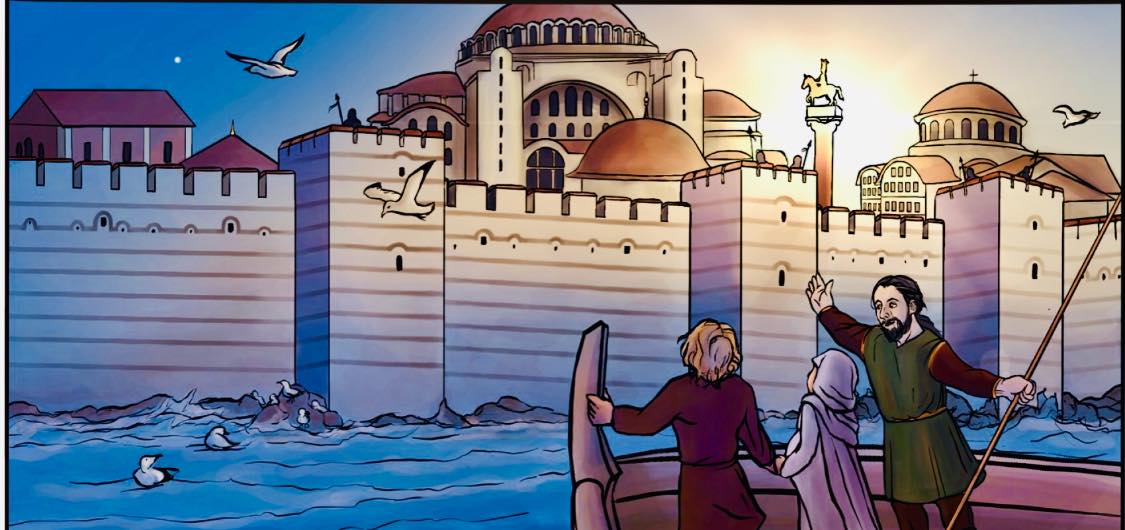












































































Wow you weren’t kidding about it being a long post, but that’s what is great about the internet! I am also a Byzantine Empire buff. I enjoy reading nonfiction about it but also historical fiction and other stories in a Byzantine setting. I wonder if you ever read the novel “Byzantium” by Stephen R Lawhead? It is about an Irish monk who ends up on a voyage to Byzantium. Published by Harper Prism in 1996. It’s pretty good, and has some nice imagined detail of Constantinople in the 10th century (IIRC).
LikeLiked by 1 person
No I haven’t heard of “Byzantium” by Stephen R Lawhead, but I’ll give it a try.
LikeLike